
Home » Travel Guides » Portugal » 15 Best Things to Do in Bragança (Portugal)

15 Best Things to Do in Bragança (Portugal)
A gorgeous old city in two parts, Bragança’s high ground is ruled by the citadel and castle, while on the banks of the Fervença River below is the new town. Truth be told, the new town isn’t very new either, as the former cathedral here is from the 1500s.
The medieval citadel and castle above are in great shape, with original details and a sleepy neighbourhood of cobblestone streets defended by the walls. The countryside should figure in your plans, whether you tour the granite villages in the Montesinho Natural Park or head south to the Blue Flag beach at the Azibo Reservoir.
Let’s explore the best things to do in Bragança :
1. Castle of Bragança

Climbing above Bragança’s citadel and visible for miles around is the 15th-century keep.
This is 17 metres wide and 33 metres tall, ordered by King John I and constructed over an earlier stronghold from the 12th century.
What’s special about this building is that it hasn’t needed much restoration, so what you see has changed little since the 15th century.
There are small Gothic flourishes like the traceried windows and the coat of arms of King John’s Royal House of Avis.
You can see the interior by visiting the Military Museum, which we’ll come to shortly, and get to the roof, which has epic views of the town and the wooded hills of the Montesinho Natural Park.
2. Domus Municipalis

This pentagonal granite building in the centre of the citadel has been puzzling historians for more than a century now.
Nobody is too sure exactly what it was meant for, or even when it was built.
Most estimates put it in the 13th or 14th centuries.
It may have been intended as a cistern or public meeting hall.
Either way it remains one of the only examples of Romanesque civic architecture to be found in Portugal, and you’re free to go in and make your own conclusion.
A sequence of semicircular arch windows let the light in, and there’s a stone bench around the first floor interior.

Encircled by crenellated walls and commanded by the castle, the medieval citadel is at the top of a hill to the east of the new town.
To enter you have to pass through stone gateways, and once you’re inside the walls you can find stairways to get up to battlements so you can man the defences like a medieval guard.
The citadel is older than the present castle, dating from the 1130s and with a lattice of straight cobblestone lanes.
It’s a peaceful, sleepy sort of place with artisan workshops and a few bars and restaurants.
For a peek at local traditions drop by the Museu Ibérico da Máscara e do Traje, which has the ritualistic masks and costumes donned for festivals in the region.
4. Museu do Abade de Baçal

Outside the citadel walls in the lower town is Bragança’s former episcopal palace.
At the start of the 20th century the building was turned into a museum for the whole Northeast Trasmontano region, with caches of art, archaeological artefacts and coins donated by local writers and military figures.
There are also some splendid religious treasures like a wooden ark for holy anointing oils, a triptych of the martyrdom of St Ignatius and several Baroque polychrome statues.
As a testament to Bragança’s importance in past times the museum has the Manueline (16th-century) standard measures for liquids and weights, while from the distant past are hand-axes, arrowheads, funerary steles, coins, milestones and ceramics.
5. Sé Velha de Bragança

In 2001 Bragança got a brand new, purpose-built cathedral.
It replaced this pretty church in the new town, which never quite had the right dimensions.
All the same the old cathedral is a terrific monument, built as a convent church in the 1560s and then turned into a Jesuit college.
When the Jesuits were expelled from Portugal in the 18th century it became the cathedral.
Some of the many things worth your attention are the Renaissance portal, the triumphal arch bearing the city’s emblem and the altar, glowing gold-painted woodwork from the 1700s.
6. Museu Militar De Bragança

Taking up all four floors of the keep is a military museum first created in 1929 when the Portuguese 10th Infantry Regiment was quartered here.
When the army finally departed the citadel the museum left with it, to be reinstated in 1983 with all of the original collection.
These are light arms like daggers, swords, rifles and pistols from the 1200s to the First World War.
Many of the most engaging pieces are from Portugal’s African campaigns in the late 19th century.
Among them are the personal items of Gungunhana, a tribal king who rebelled against the Portuguese empire and lived out his days in exile in the Azores.
7. Igreja Santa Maria

Within the citadel, next to the Domus Municipalis, is the oldest church in Bragança, although all that remains of its the original Romanesque building is the floor-plan.
The rest was given a succession of makeovers between the 1500s and 1700s when the Renaissance and Baroque side-chapels were also added.
Before heading in, check out the Baroque portal, which is flanked by two bold Solomonic columns decorated with vine patterns.
The things that hit you inside are the painted barrel vault ceiling that portrays the Assumption of Mary, and lavish Baroque altar in the main chapel.
8. Igreja de Castro de Avelãs

The Benedictine monastery three kilometres from the centre of Bragança was once a rich and powerful institution, offering lodgings and a place to worship for pilgrims on the Way of St James.
It was built in the 12th and 13th centuries but went into decline in the 1500s after it was absorbed by the Miranda do Douro diocese.
The outstanding feature is the Romanesque chevet on the church, with its three radiating apse chapels.
These have three tiers of slender, semi-circular blind arches, a design that can’t be found anywhere else in the country.
9. Centro de Arte Contemporânea Graça Morais

The acclaimed contemporary painter, Graça Morais has close links with Bragança, having come to school here in the 1960s.
This museum, founded in 2008 has a space reserved for her art, with exhibitions that are updated every few months.
These run alongside temporary exhibitions for all manner of disciplines.
Whether you’re an art-lover or not, the building merits a few minutes: The centre was the work of Eduardo Souto de Moura, who designed a modern annex to a 17th-century hall that had previously been occupied by the Banco de Portual.
10. Centro Ciência Viva de Bragança

In 2007 a historic water mill and its neighbouring hydroelectric plant on the Fervença River were converted into an interactive science centre and museum for kids.
Adults will be impressed by the architecture of the modern glass shell and a riverside terrace with cafe seating.
Kids can get stuck into some subtly educational games and experiments on topics wind energy, the environment and recycling.
The exhibits in the old mill (Casa da Seda) are about traditional silk production in the Trás-os-Montes region.
11. Montesinho Natural Park

To leave civilisation behind for a few hours you can venture in to this natural park that begins directly north of the town.
The park has only a few isolated villages couched in some 74,000 hectares of granite peaks, verdant meadows, moors and oak woodland.
Wildlife abounds in this unpopulated part of the country, and around 70% of all species recorded in Portugal make a habitat here.
That goes for the Iberian wolf, which can be a menace for farmers, who have bred the hardy Transmontano cattle dog to guard their herds.
Walkers and mountain-bikers can trace the Sabor, Maçãs and Baceiro rivers, passing Roman bridges, hamlets and old watermills that are still in working order.
12. Aldeia de Montesinho

Woven into the woodland and pastures of the natural park is the namesake village.
Montesinho is as quaint as they get, with well looked-after rustic stone houses that have slate roofs and wooden balconies.
On the cobblestone streets you’ll turn a corner and be met with mountain vistas that take the breath away.
In one of the traditional houses there’s an interpretation for the natural park, revealing its geology and native species, as well as the trades and customs of the people who live here.
Not far away there’s 1,500-metre-long Serra Serrada hydroelectric dam, while the eerie ruins of the once nation-leading Portelo mining complex are also nearby.
13. Rio de Onor

In the natural park, right on the border with Spain, is this pastoral frontier village that looks like it could be an outdoor museum.
The remote setting and harshness of the local environment helped give rise to a distinctive way of doing things, described as an “aldeia comunitária” or community village.
Almost everything needed to survive, including livestock, farmland, tools and bread ovens, is shared by the villagers, and everyone is expected to contribute.
As well as a self-governing system, Rio de Onor even developed its own dialect, although this is now dying out.
14. Albufeira do Azibo

A protected landscape has been designated around this water reservoir a short drive south of Bragança.
The fresh greenery around it provides a habitat for eagles, great-crested grebes, herons, storks and harriers.
There are information signs telling you what you can see on the trails around the shore.
And the reservoir will look especially alluring in summer: The north shore has the Fraga da Pegada, a beach that is commended with the Blue Flag every year.
If you need somewhere to unwind for a few hours there’s a restaurant with an outdoor terrace and a playground for kids.
15. Local Cuisine

The food in Bragança is simple, filling and never has to travel far to your table.
In a place where winters can be bitter, meat is a staple and appears in most dishes.
Try Mirandesa veal steak, which comes from cattle that graze in lime groves, or Montsinho goat kid, which feeds on wild herbs in the hills.
There are many aromatic and warming stews, normally for game like rabbit but containing almost anything to hand, while sausages and cured meats are never far from the table.
One, chouriço de mel is made with honey and is often eaten as a dessert!
15 Best Things to Do in Bragança (Portugal):
- Castle of Bragança
- Domus Municipalis
- Museu do Abade de Baçal
- Sé Velha de Bragança
- Museu Militar De Bragança
- Igreja Santa Maria
- Igreja de Castro de Avelãs
- Centro de Arte Contemporânea Graça Morais
- Centro Ciência Viva de Bragança
- Montesinho Natural Park
- Aldeia de Montesinho
- Rio de Onor
- Albufeira do Azibo
- Local Cuisine

- Bragança Guide
Portugal Guides
- Estremadura
- Viana do Castelo
- Vila do Conde
- More Guides »
- Portugal A-Z
- Portuguese Food
- Gay Portugal
- Restaurants
- Famous Portuguese
- More Culture »
- Hotels in Portugal
- Hotels in Algarve
- Hotels in Lisbon
- Hotels in Porto
- Portugal Hostels
- Spain Hostels
- Banks & Money
- Exchange Rates
- Facts & Figures
- Portuguese Phrases
- Word of the Day
- Portugal Books
Portugal City Guides
- Castelo Branco
- Praia da Rocha
- Vila Real de Santo Antonio
- Caldas da Rainha
- Figueira da Foz
- Monte Gordo
- Ponte de Lima
- Porto Santo
- Póvoa de Varzim
- Santiago do Cacém
- Vila Nova de Gaia
- Vila Viçosa
- Accommodation
- Entertainment
- Internet Cafes
Portugal City Travel Guide: Bragança
Bragança , the capital of the Trás-os-Montes region of north east Portugal, is close to the Spanish border and the gateway to the Park Natural de Montesinho .
Bragança has a long history and was known as Brangantia under the Franks and Juliobriga to the Romans. The city's strategic location near Spain meant it was long contested between the two nations.
Portugal's first king Afonso Henriques began the walled citadel ( Cidadela ) in 1130 and his son, Sancho I, greatly expanded and strengthened his father's efforts on the 680-metre-high hill.

The Duchy of Bragança was created in 1442 by Afonso V for his uncle, an illegitimate son of King João I, and it was this house of the Portuguese nobility, the House of Bragança, that assumed the Portuguese throne in 1640 and would rule until the monarchy was overthrown in 1910.
The medieval Cidadela on the hill above the city centre is one of Bragança's most impressive attractions and its ramparts have wonderful views out over the surrounding countryside.
Here is the original 12th century fortress with 15th century additions by João I, all patched up by restorations in the 1930's. The Torre de Menagem (keep) was occupied by the Portuguese military in to the 20th century and now houses a ubiquitous, though excellent, Museu Militar , with an impressive and varied assortment of swords, armour, cannons and focus on Portugal's colonial wars and bloody participation in World War I on four floors of the tower.
The Domus Municipalis is the oldest town hall building in Portugal and is thought to date from the 15th century. The city council met in the impressive arcaded upper room. The Igreja de Santa Maria built and added to between the 16th-18 centuries stands nearby and is noted for its fine ceiling paintings.
A unique Pelourinho or pillory mounted on a granite wild boar (known as porcas or berrões and found throughout this area in both Portugal and Spain) can be seen outside the Torre de Menagem.
The Museu do Abade de Baçal , (named after a locally-born scholar priest) is set in the 18th century, former Bishop's palace, and has an eclectic collection of Celtic and Roman archaeological remains along with religious art and historical photography of life in the Trás-os-Montes region. 1930's watercolours by Alberto de Sousa focus on the area's stone pillories.
The Praça de Sé around Bragança's old cathedral has been renovated and now includes modern sculpture - look out too for the bronze postal worker outside the main post office ( correio ) in Largo dos Correios and the huge fighting bulls and their minders in the Rotunda do Lavrador Transmontano roundabout.

Two recommended museums in Bragança are the Museu Ibérico da Máscara e do Traje (Iberian Museum of the Mask and the Costume), dedicated to masks and costumes worn in pagan-based carnival and solstice festivals in this area of northern Portugal and Spain and the Centro de Arte Contemporânea Graça Morais showcasing the art of Portuguese painter Graça Morais as well as other Portuguese and international artists in temporary exhibitions.
For a town its size, Bragança has several interesting museums and cultural centres and they co-operate in hosting a number of thematic events relating to the region's culture and history especially in the summer season. The Paulo Quintela Auditorium Georges Dussaud Photography Centre exhibits the black and white photographs of French photographer Georges Dussaud, who has been active in the Trás-os-Montes area for four decades. his work captures local people at work in the fields, their rituals and life cycles.

In the main Praça Camões near the cathedral is the modern building of the Adriano Moreira Municipal Cultural Centre which holds the Municipal Library, the Adriano Moreira Library (17,000 volumes donated by Prof. Adriano Moreira of the Technical University of Lisbon, the long-serving Christian Democratic politician), the Music Conservatory, the Letters Academy of Trás-os-Montes and several galleries which host temporary exhibitions.
Bragança has two museums dedicated to the history of the Sephardic Jewish presence in city; many of them refugees from persecution in Spain. Both are located on the "museum street" of Rua Abílio Beça. The Centro de Interpretação da Cultura Sefardita do Nordeste Transmontano , next door to the Centro de Arte Contemporânea Graça Morais, presents a variety of photographs and audio visual exhibits explaining the history and cultural and economic influence of the Sephardic Jewish population of the area. The space is also designed by Portuguese architect Eduardo Souto Moura.
The Memorial e Centro de Documentação Bragança Sefardita at Rua Abílio Beça, 26, includes a synagogue and has exhibits on Sephardic Jewish rites, the roles of women, as well as Sephardic Jewish (Jews of the Iberian Peninsula) celebrations.
The small Dr. Belarmino Afonso Ethnographic Museum (Museu Etnográfico Dr. Belarmino Afonso) on Rua Dr. Herculano da Conceição is the personal collection of Dr. Belarmino Afonso of artifacts relating to the culture and history of Trás-os-Montes.
The Ciência Viva Centre in Bragança is one of a network of 19 Ciência Viva Centres throughout Portugal which seek to educate and inform young people on energy use, the environment and how humans should interact with the planet
Churches in Bragança include the Igreja de São Bento on Rua São Francisco, the Igreja de São Vicente , connected with the grisly 14th century Dom Pedro - Inês de Castro tale and the old Sé (Cathedral), which dates from the 16th century. Bragança's contemporary cathedral is the Igreja de Nostra Senhora Rainha .
The Feira das Cantarinhas is a three-day market and fair promoting the area's local handicrafts and agricultural produce in early May.
Bragança Tourist Office
Bragança Tourist Office. Av. Cidade de Zamora. Tel. 276 348 180 Hours: 9 am-12.30 pm; 2 pm-5 pm, Monday-Friday; 10 am-12.30 pm on Saturday.
Getting to Bragança
Train travel in portugal.
Bragança is no longer connected by railway but the area of the old train station now serves as a bus station (Estação Rodoviária de Bragança).

Car Travel in Portugal
Bragança is 120 km northeast of Vila Real on the IP4/A4 motorway and 100 km east of Chaves on the slow, winding N103 road. Bragança's sister city of Zamora in Spain is 100 km southeast and can be reached by bus 3 times a week on Tuesday, Friday and Sunday. Buses leave Zamora for Bragança at 5 am (Spanish time) arriving in Bragança at 6 am (Portuguese time). The journey time is 2 hours. The bus continues on from Bragança to Macedo de Cavaleiros, Mirandela, Murça, Vila Real, Amarante , Porto, Guimaraes , Braga, Ponte de Lima , Viana do Castelo and Vila Praia de Ancora. Going the opposite way, the bus departs Bragança at 3.45 pm arriving in Zamora at 6 pm. (See www.interurbana.ad for further details).

Bus Travel in Portugal
Bragança is served by various bus companies.
Bragança has bus connections to Porto (3 hours), Lisbon (7 hours, 30 minutes), Braga (4-5 hours), Chaves (2-3 hours), Guimaraes (3 hours, 30 minutes), Mirandela (1 hour), Miranda do Douro (1 hour, 30 minutes - 2 hours, 15 minutes), Mogadouro (1 hour, 30 minutes), Vila Nova de Foz Côa (1 hour, 45 minutes), Vila Real (1 hour, 30 minutes), Vinhais (35 minutes) and Viseu (3 hours, 15 minutes).
Portugal Hotel & Hostel Accommodation
Bragança has a variety of places to stay including the recommended Hotel Tulipa , the 2-star Hotel Tictac , the 2-star Hotel Classis , the historic, 17th century Solar Santa Maria and the Casa de Chica on Rua D. Fernão O Bravo.
See here for a full listing of hotel accommodation in Bragança .
Featured Hotel
The Pousada de Bragança - Sao Bartolomeu Bragança, 5300-271 Bragança, Portugal.
Book this hotel
Book Hotel Accommodation in Bragança
Hotels in Portugal - Booking.com
Hotels in Albufeira - Booking.com
Hotels in Algarve - Booking.com
Hotels in Lisbon - Booking.com
Hotels in Porto - Booking.com
Hotels in Madeira - Booking.com
Hostels in Portugal - Booking.com
Hotels in Portugal - Agoda
Hotels in Spain - Booking.com
Bragança has a good number of recommended restaurants serving the local cuisine which is known for its smoked ham ( presunto ) and alheira sausage. Try Solar Bragançano in Praça de Sé with its oak panelled dining rooms and al fresco garden seating in summer. O Geadas on Rua do Loreto also serves local favourites such as kid (cabrito) and river trout.
There are a number of bars in the Citadela.
List your restaurant/bar/hotel contact Advertising

WiFi is available in nearly all hotels in the area.
The average high June temperatures for Portugal is between 22 degrees Centigrade and 26 degrees Centigrade. Get more weather information for Portugal

Visit our partner sites:
- Britain All Over - Britain Close Up
- Britain Visitor - Guide to UK
- Iran Visitor - Guide to Iran
- Beijing Visitor - Guide to China
Portugal Tourist Info. Copyright © 2024 All rights reserved.
Terms of Use | RSS
Web Design by Web Choice UK
- Towns & cities
- Porto and the North
Braganca - Portugal holiday guide

The name of the region of which Bragança is the capital belies its nature, being that Tras-os-Montes , quite literally 'behind the mountains', is easily the most remote part of mainland Portugal, if not western Europe. Here, ancient stone houses still cluster in small villages that seem unaffected by the speed and complexities of modern life, rich traditional dishes still fill the bellies of hard-working farmers and the general feel is one of pleasing distance, both physical and other, from the busier, more cosmopolitan parts of the country. However, its sometimes wild climate and remoteness from infrastructure and trade centres has translated itself into much emigration from this beautiful, rugged but isolated region.
Bragança, the town, stands proudly on a plateau only a matter of a few kilometres away from the Spanish border. Known in Celtic times as Brigantia and by the Romans as Juliobriga , its hilltop location has appealed to many a defending population and it was the royal seat of the Dukes of Bragança until the dissolution of the monarchy in 1910, indeed the royal consort of English King Charles II , Catherine of Bragança , hailed from here.
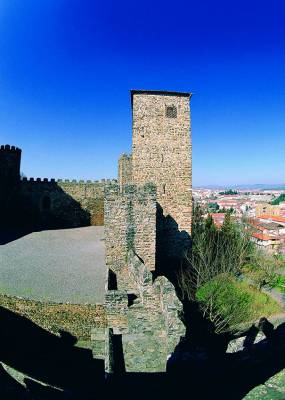
Torre da Princesa
The walls and castle which still stand date from the 12th century and boast a 33metre keep and various watchtowers. In its gardens, a stone boar is said to date from the Iron Age, whereas the pillory which rises from its back probably dates from the 1500s, and in the keep, the Museu Militar displays a motley collection of bellic artefacts, from medieval armour, to 20th century guns and even art collected by Portuguese soldiers whilst serving in the then colonies.
The town is also home to Portugal’s last remaining example of Romanesque civic architecture, the pentagonal Domus Municipalis , with many small arches on each of its sides, crowns the citadel. The local museum takes its name from a famous son of Bragança, a scholar and historian by the name of Abade de Baçal , whose vast knowledge of his region and its past was published and greatly revered. The museum displays, amongst many other curios, art dating from the 1500s, age-old gravestones and instruments of torture. The interior of the church of Santa Maria is also worth a visit with a strikingly vivid depiction of the Assumption on its barrel-shaped ceiling
All Portuguese towns have their repertoire of stories and legends, and Bragança is no exception. A highlight in one of Portugal’s most-loved tragic love stories reputedly took place in a church here. Dom Pedro I is said to have married his forbidden love Inês de Castro in the 13th century church of São Vicente . Furthermore, a tower known as the Torre da Princesa is said to have held the captive Queen Leonor , deemed too beautiful for the public gaze by her jealous husband, the then Duke of Bragança.
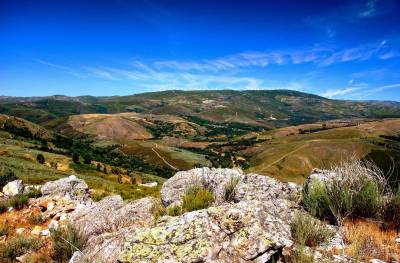
Parque Natural de Montesinho
Also occupying the rugged hills of Tras-os-Montes is the vast expanse of the Parque Natural de Montesinho , locally nicknamed Terra Fria , or 'cold land'. Here various wild animals, such as boars, wolves and otters, live amongst its ancient oaks and thicket. You also stumble across villages with a distinctly medieval feel to them and, as recently as the mid 20th century, pre-Christian rituals were not unheard of among the sparse population of these simple settlements. Eagles soar and winds sweep across the more barren mountain slopes, and spring sees a flourish of white almond blossoms. Trekkers delight in this wilderness, though the ancient pathways are often hard to distinguish, and maps available from the tourist office come recommended.
Villages of note include Vinhais , Vila Flor , Chacim and Freixo de Espada à Cinta . The last name apparently might originate from a story of King Dinis attaching his sword to a local tree, since it means 'ash with belted sword'. Its church is what could be described as a mini Mosteiro dos Jerónimos , due to its ornately carved Manueline stonework. Vinhais looks out over the natural park and boasts beautiful old-fashioned dovecotes.
Chacim is home to another intriguing tale, this time one of successful rebellion against the dominant classes and the local tradition of the feudal lord ‘breaking in’ the bride on her wedding night. Vila Flor is another castled town, but is also situated near to one of the Spas of this area, the Aguas Bem Saude . Another is the Caldas de Abelheira , near Chacim. The valley of the Vale de Cõa , near Torre de Moncorvo , contains the largest collection of open-air drawings from the Stone Age discovered anywhere in the world.
Braganca Guided Tours & Excursions

All-Terrain Sightseeing Tour
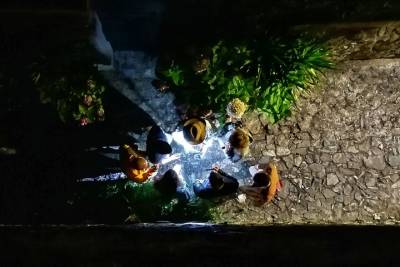
The King's Treasure Never Found - Treasure Hunt Experience in Braganca
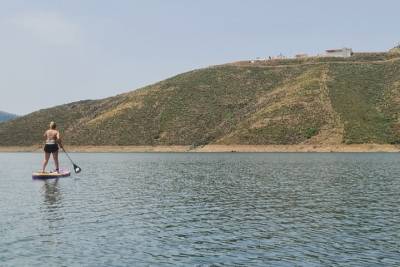
Stand Up Paddle Experience at Lagos do Sabor
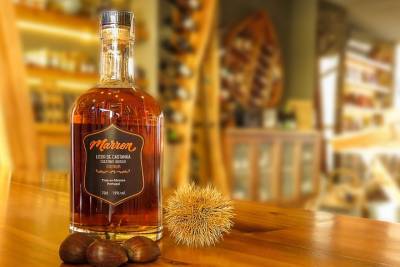
Chestnut Liquor and Sweets Proof
Show all braganca tours & excursions », related articles.
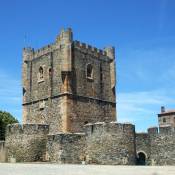
- Museu Militar
Accommodation offers
Images of braganca.
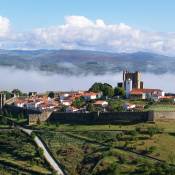
Explore Braganca

Plan Your Braganca Holiday: Best of Braganca
Essential braganca.

Braganca Is Great For

Eat & drink

Art & history

Best things to do in Bragança | Portugal
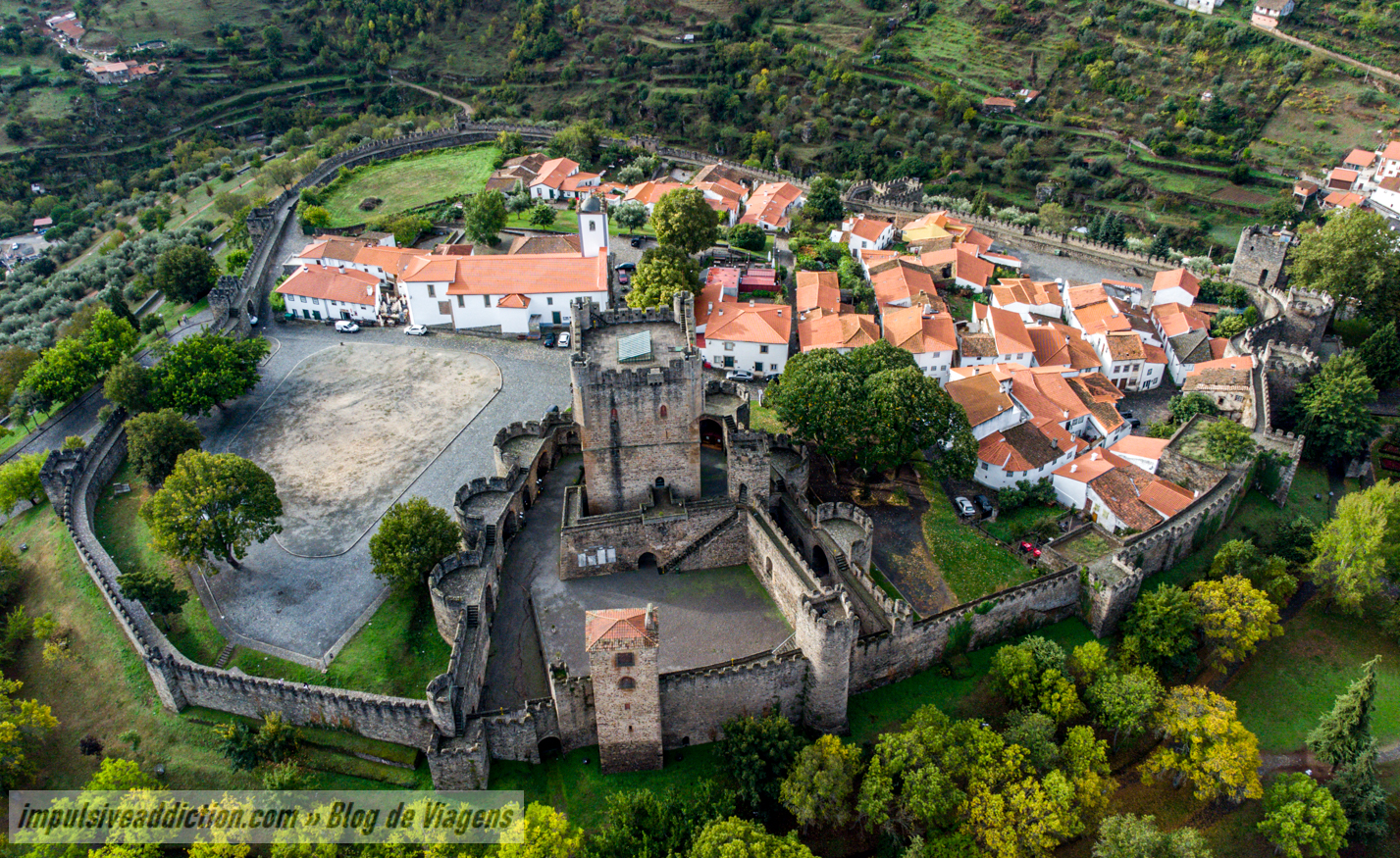
- August 20, 2023
Share this content!
Bragança is a land of strong traditions, excellent cuisine and centuries of history. It’s located in the north-east of Trás-os-Montes, a long way from all the other major cities in Portugal, so it’s not usually on the average visitor’s itinerary. It is undoubtedly a destination off the beaten track in the north of the country.
But visiting Bragança can be surprising. After all, it has a phenomenal and very well preserved castle and a pleasant historic center that is easily walkable. It also has the Montesinho Natural Park, rich in biodiversity and home to 80% of the mammal species found in Portugal.
Rio de Onor, for example, is a village in Montesinho Natural Park that won the title of one of the 7 wonders of Portugal. But there are other equally incredible villages lost in the mountains, my favorites being Montesinho, Aveleda, Guadramil and Gondesende.
If you’re planning to visit Bragança, then I recommend that you continue reading this article, as I’ll show you in detail below all the sights in and around the city that you can’t miss, as well as the villages in Montesinho Natural Park that require a stopover, and the route to follow to get to know them.
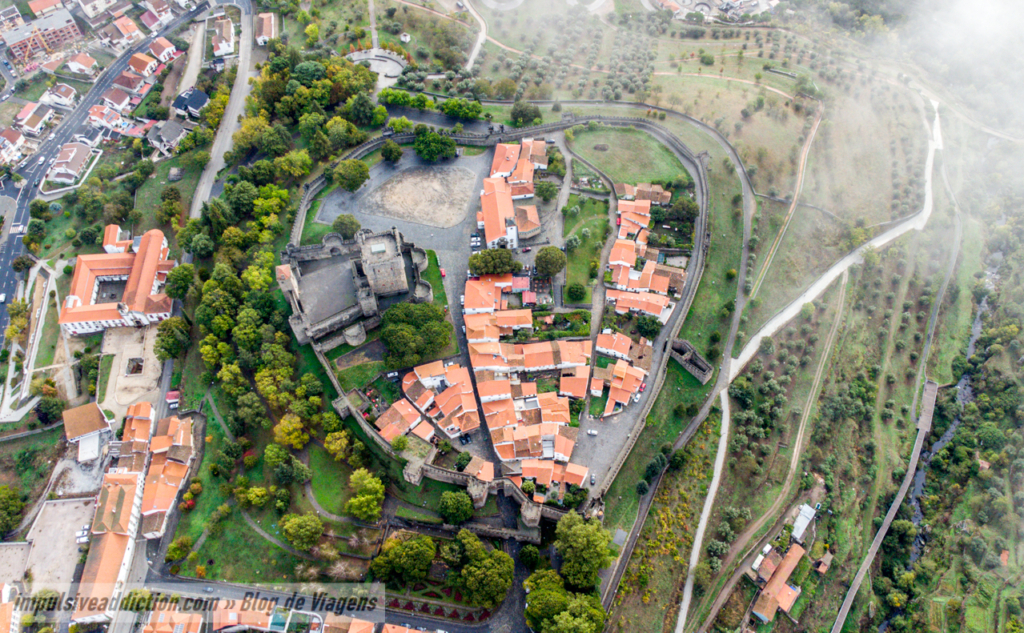
Article Content
Where is Bragança located, in Portugal?
Bragança is located in Trás-os-Montes, more precisely in the north-east of Trás-os-Montes, as I’ve already mentioned. It borders Spain, more precisely the region of Castile & León.
The municipality of Bragança is in the district of the same name, bordered by other municipalities in Trás-os-Montes, namely Vinhais, Macedo de Cavaleiros and Vimioso.
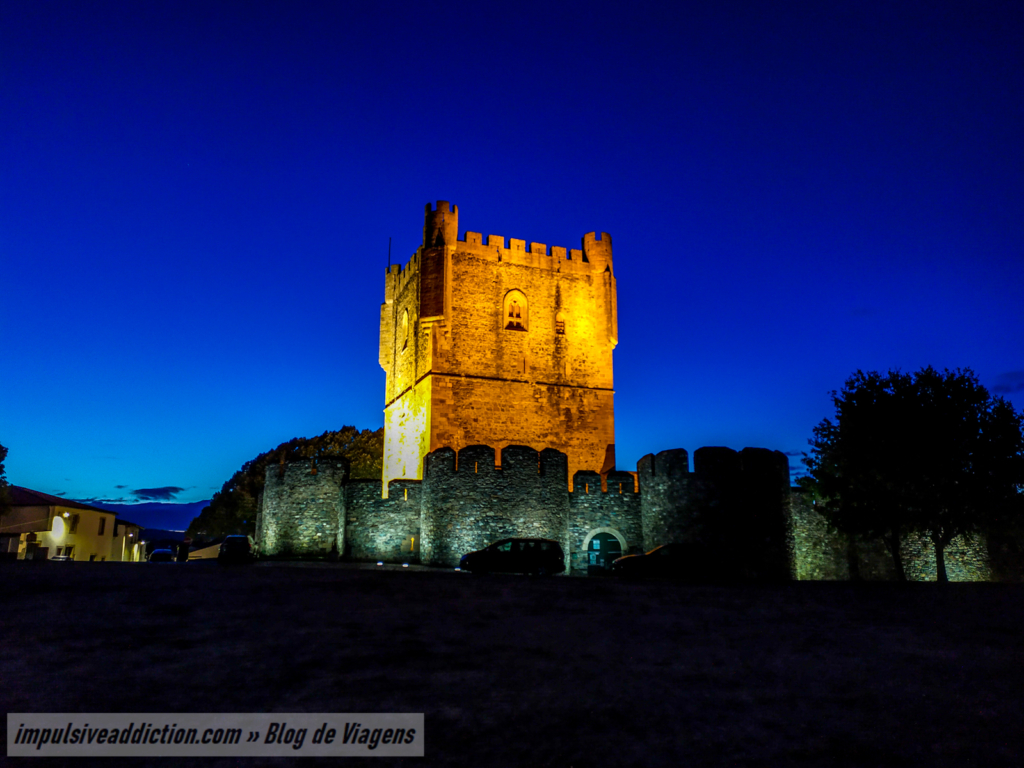
Useful tips for visiting Bragança
Having a car is a must for your itinerary in Bragança. If you don’t have a car, rent one with Discover Cars , which allows you to analyze and compare prices between different rental companies until you find the best deal.
Likewise, travel insurance should be taken out without fail. We are all subject to bad luck and travel accidents. I, for example, ended up in hospital on a past trip through Douro Valley, and it all happened because of a fall in one of the most unlikely place ever. 😐 Opt for Travel insurance with World Nomads .
When to visit Bragança?
It can be interesting to visit Bragança during the deer mating season, as you may be able to hear their loud roar. That’s what I did, and the autumn colors really embellished the landscape. I didn’t hear the roar as I had hoped, but I did get the chance to see roe deer in the wild somewhere in Montesinho Natural Park.
Don’t ignore also the town’s main festivities, which are associated with the region’s ancient traditions:
- Festa dos Reis , in the weekend before January 6th (Rio de Onor) or the weekend closer to January 6th (Baçal).
- The Caretos Carnival , on the Saturday before Carnival (Bragança). Better than this one is the Carnival of Caretos in Podence – Macedo de Cavaleiros.
- On December 25 and 26, the Boys’ Festival in Aveleda and Varge.
Gastronomy and Restaurants in Bragança
I ate wild boar, venison and veal when I visited Bragança recently. For dessert, I opted for those based on chestnuts and walnuts , the fruits of fall season.
In terms of restaurants, I had dinner at the Poças restaurant , which I thought was very good. For my main course I chose Boar Stew with Chestnuts , and for dessert Quince soaked in Port wine, with walnut ice cream ! Everything was delicious, and the dessert was divine. 😀
I also recommend Dona Raquel’s XXL crepes . The tavern where she sells them is just off Cathedral Square, near another good restaurant: Emiclau . She has lots of flavors available for the crepes, which is amazing.
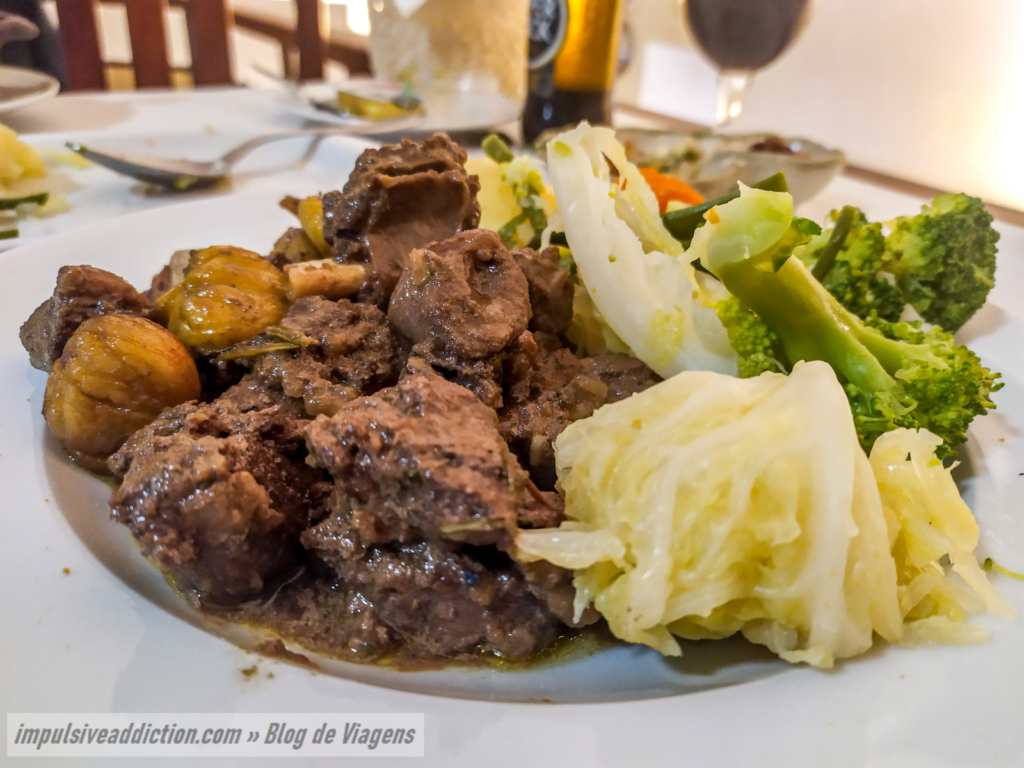
Although I haven’t tried them, the restaurants below were also suggested to me in Bragança as restaurants not to be missed:
- Restaurant O Abel , in Gimonde (Bragança)
- Solar Bragançano in Bragança. You need to make a reservation in advance.
- Tasca do Zé Tuga , in Bragança. Same applies regarding reservations.
Accommodation tips to visit Bragança
In Bragança I stayed at the Baixa Hotel and honestly it was very good, central, with an excellent breakfast and good value for money. I totally recommend it. 😉
But I’ll leave other tips below!
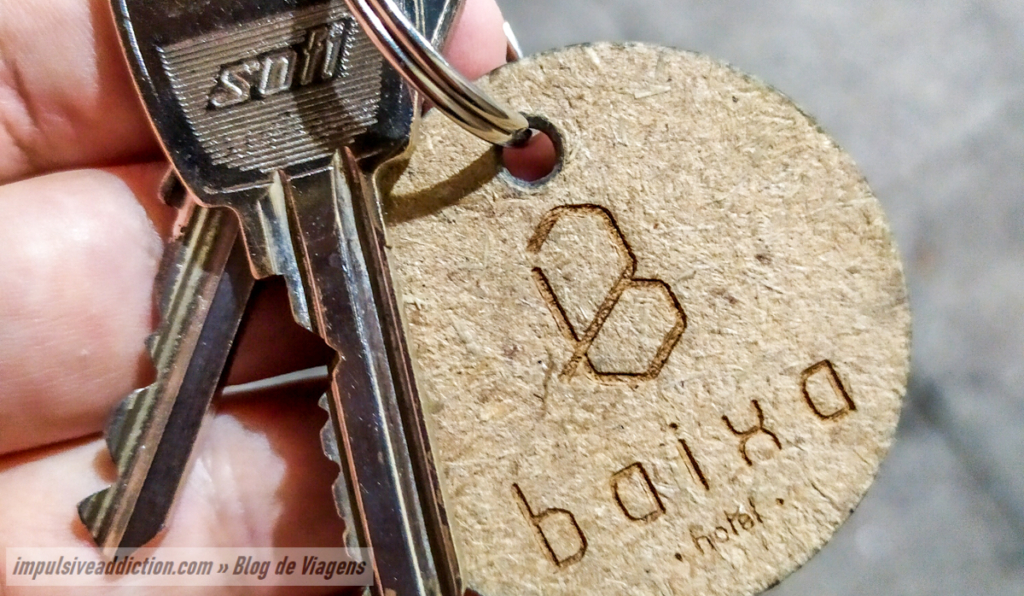
Things to do in Bragança | Portugal
And now for my tips on the sights not to be missed and things to do in Bragança. Below is a map of all the places I’m going to mention, including the must-see villages in Montesinho Natural Park, as well as the optional ones, for those who have more time to travel. All the villages I’m going to mention have been visited by me.
Throughout the text, I’ll mention some of the trails you can take in Bragança, to get in touch with nature near the main villages.
Map | Things to do in Bragança
Visit Bragança Castle Citadel
The historic center of Bragança is easily visited all on foot. I recommend that you start by discovering the interior of the Citadel of Bragança Castle and surrounding area. It’s usually easy to park your car inside, at least that’s what I found during my most recent visit.
1. Bragança Castle: Keep, Walls, Domus Municipalis, and Bragança Military Museum
The first defensive constructions in Bragança date back to the reigns of King Sancho I and King Dinis. However, the Bragança Castle keep , 17 meters wide and 33 meters high, was only built at the beginning of the 15th century at the request of King João I.
When you visit the citadel, you must walk on the outer walls , which are shaped like a heart (if seen from the sky). In total, there are 15 towers and 3 gates along the walls, the most notable being Porta da Vila and Torre da Princesa .
Unfortunately, I never managed to visit the keep and its Military Museum . I always found it closed both times I visited Bragança, but I think it’s very worthwhile.
The same goes for the Romanesque Domus Municipalis , the former town hall, which is believed to have served as a cistern in the past.
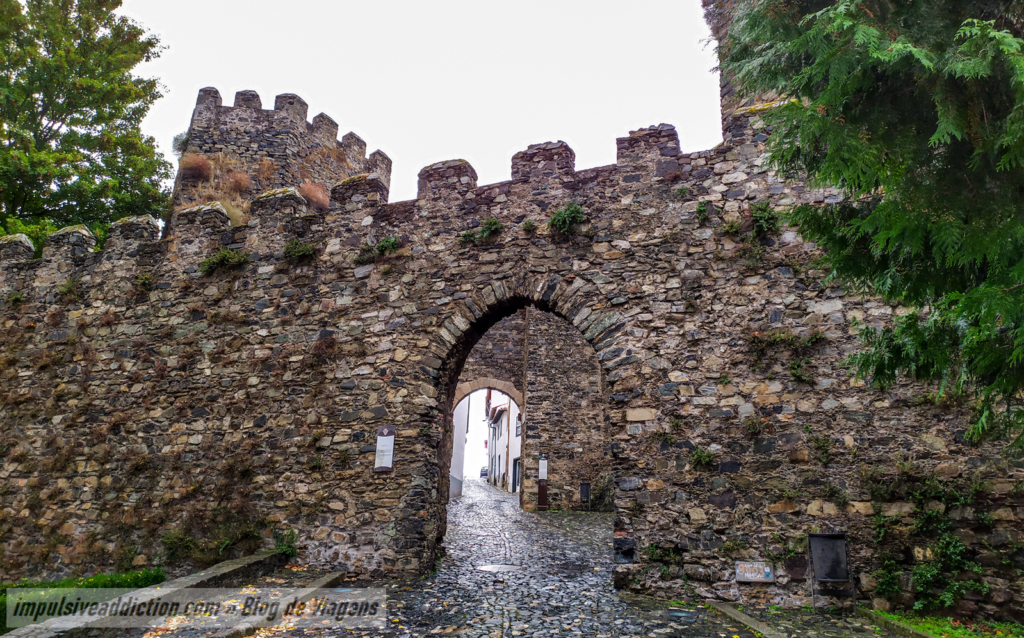
2. Iberian Mask and Costume Museum
The Iberian Mask and Costume Museum , on the other hand, has three floors full of masks and costumes used in the traditional winter festivals in and around the Bragança district. Have you ever heard of the carnival caretos? If you don’t visit the city during Carnival, you should know that you can see the caretos’ costumes and masks in this museum and learn a little more about their history there. They’re fabulous!
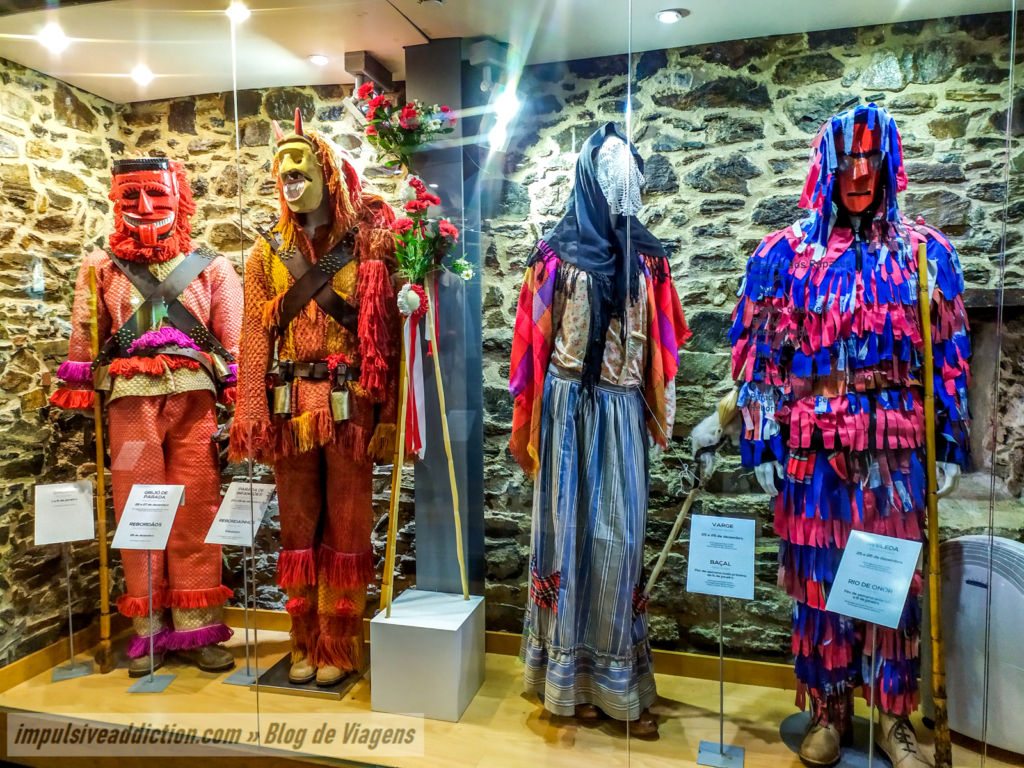
3. Bragança Pillory and Santa Maria Church
Both are very central in the citadel, right next to the keep.
- Bragança’s pillory is one of the oldest in Portugal. It sits on top of “porca da vila” (town’s pig, in English).
- The Church of Santa Maria is known to be the oldest in Bragança. Highlights include the Figueiredos chapel, the image of Saint Mary Magdalene inside and the altarpiece dedicated to Saint Estevão.
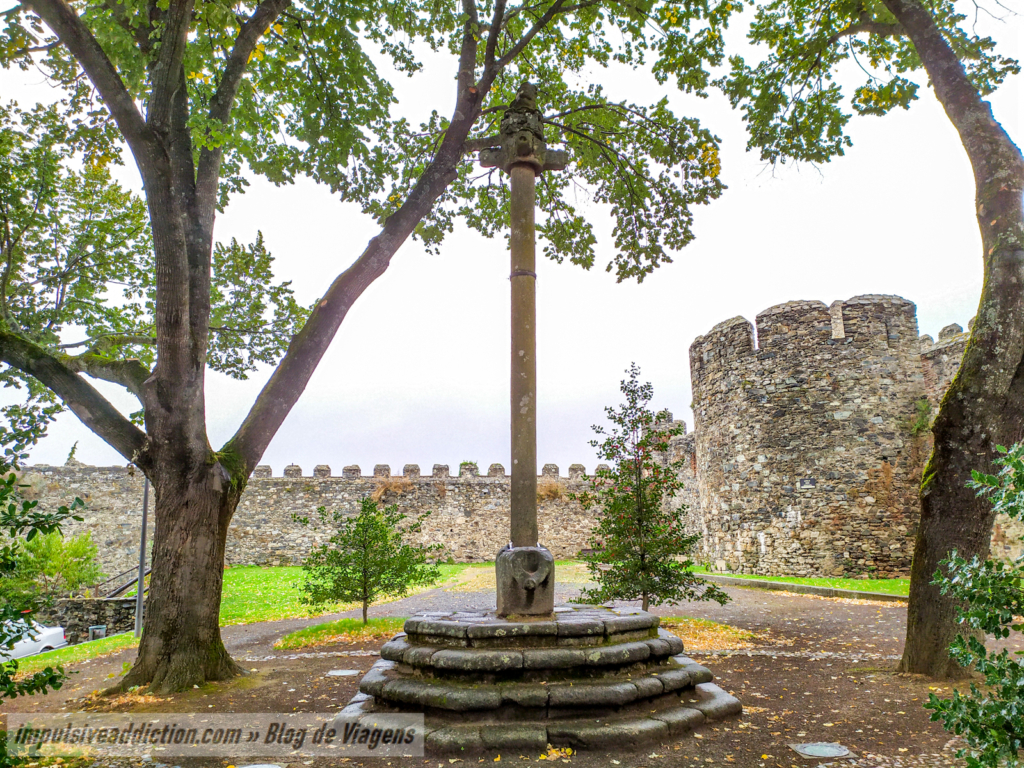
4. Bragança Castle Garden and Cano Fountain
After visiting the inside of the citadel, I recommend you go and explore the outside of the walls. There is a beautiful garden next to Porta da Vila (one of the gates to the citadel). Optionally, stop by the Cano Fountain , also known as the Queen’s Fountain.
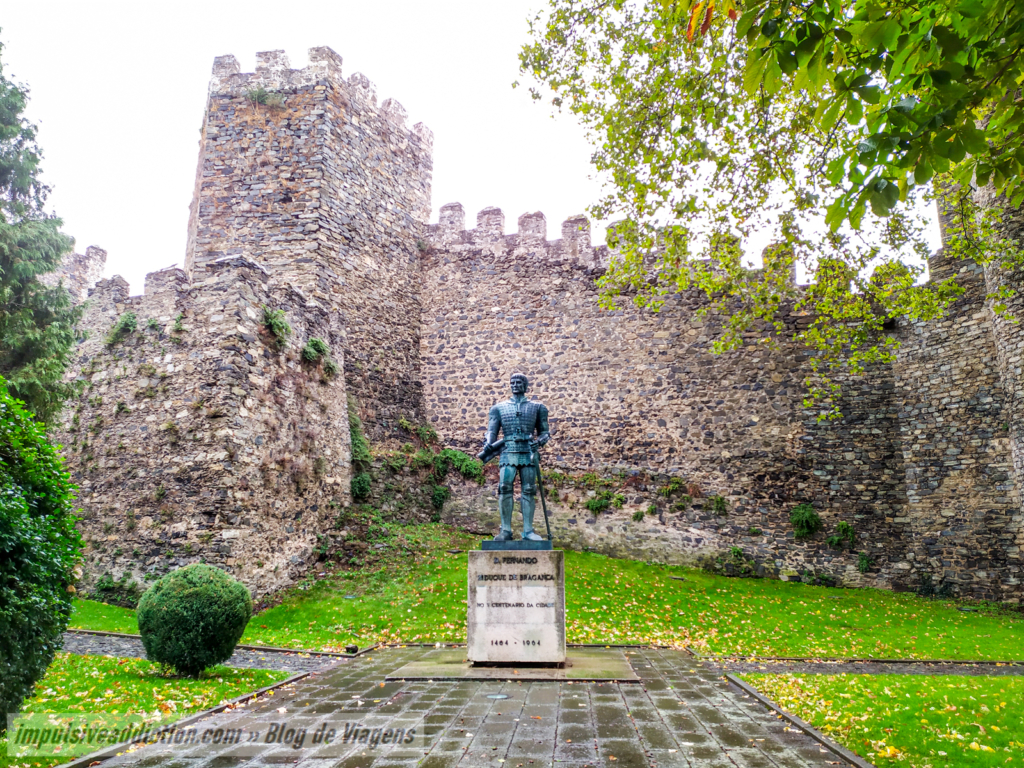
5. Church and Convent of São Francisco, Chapel of Nossa Senhora da Saúde and Church of São Bento
Also around Bragança Castle are three churches that you can visit before heading down to the city center. They are all on Rua de São Francisco, near the castle gardens. In the surrounding area, I would also highlight the murals with art associated with the battles of the medieval era.
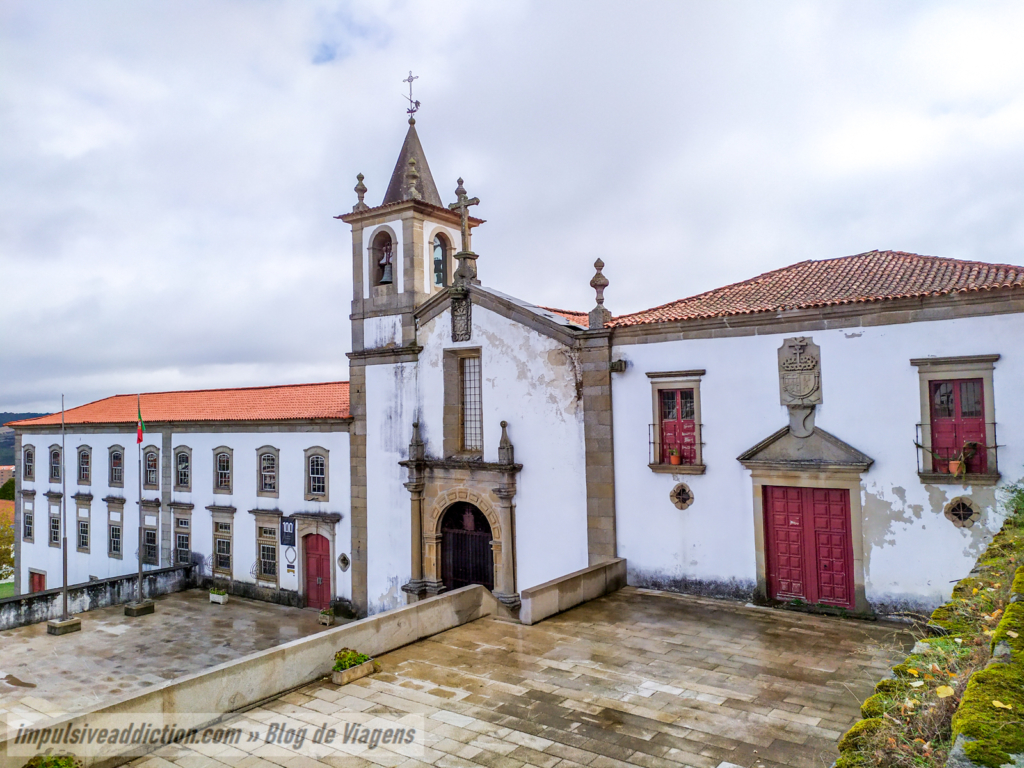
Visit the museums road in Bragança – Rua Abílio Beça
Rua Abílio Beça is known as the road of museums. For me, it’s the city’s main street, connecting the base of the hill where the castle stands to Praça da Sé, the most beautiful square in Bragança.
1. Abade de Baçal Museum
The Abade de Baçal Museum was founded in 1915 and today has exhibitions of archaeology, painting and drawing, sculpture, goldsmithery and furniture. You can find out more about it, its history, opening times and prices on the official website .
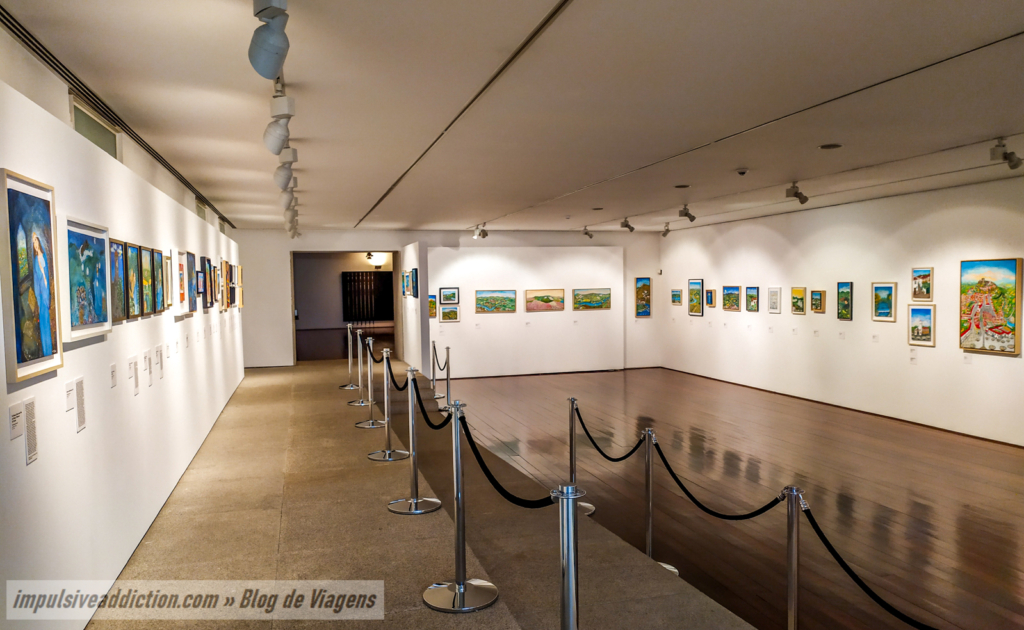
2. Bragança Sephardic Memorial and Documentation Center
The space is that of a Synagogue, and its exhibitions aim to present the rituals and festivals associated with the descendants of Jews in Bragança (Sephardim), and their history in the region. It is necessary to book a visit to the museum; you can find out more on the official Bragança Tourism website .
3. Interpretation Center for the Sephardic Culture of the Northeast of Trás-os-Montes
In the same style as the previous one, but open to the public without the need for an appointment. They complement each other.
4. Georges Dussaud Photography Center
It contains an exhibition of images and portraits photographed by the Frenchman Georges Dussaud, mostly in black and white. For example, I would highlight the rooms dedicated to India.
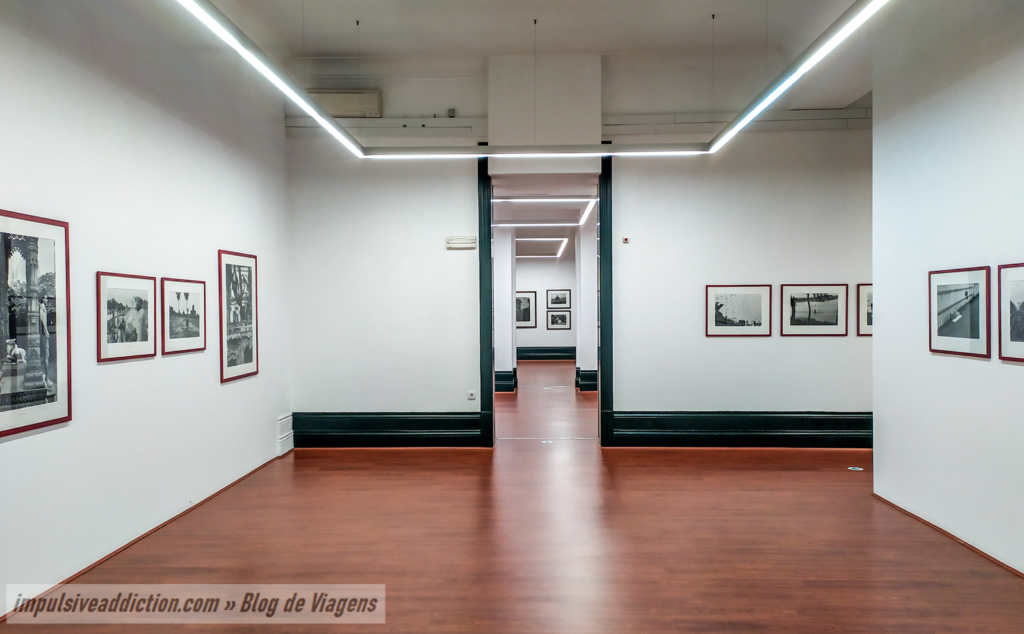
5. Graça Morais Contemporary Art Center
At the Contemporary Art Center I really liked the permanent exhibition by the artist Graça Morais, or at least the room lined with newspapers. I thought it was brilliant! Apart from that, I confess it was a disappointment: I didn’t consider what I saw in the temporary exhibition to be “art”, but I’ll leave some photos below so you can draw your own conclusions.
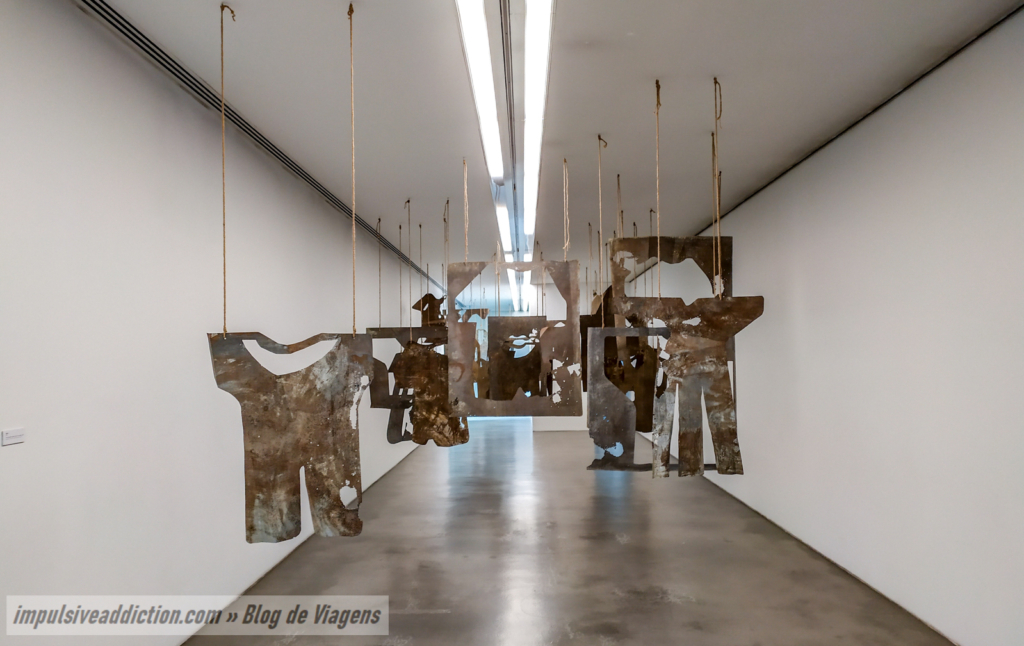
6. Church of São Vicente, Casa do Arco, Church of Nossa Senhora das Graças, and Church of Misericórdia
Finally, I’d like to highlight Casa do Arco and some of the churches you’ll find on Rua Abílio Beça or in the surrounding area:
- Casa do Arco : the coat of arms of the Pimentéis House stands out above the arch, which is why it is also called Solar dos Pimentéis.
- Church of São Vicente : it is located in a small square with a monument to those who died in France during the First World War. The church’s exterior features a fountain dating from the 18th century and tile panels.
- Church of Nossa Senhora das Graças , in honor of the city’s patron saint, built in the 16th century. It was once part of a nunnery.
- Church of Misericórdia : the most beautiful, with a main façade covered in 19th century tiles. The interior consists of two chapels, one dedicated to Nossa Senhora da Misericórdia and the other to Senhor dos Passos.
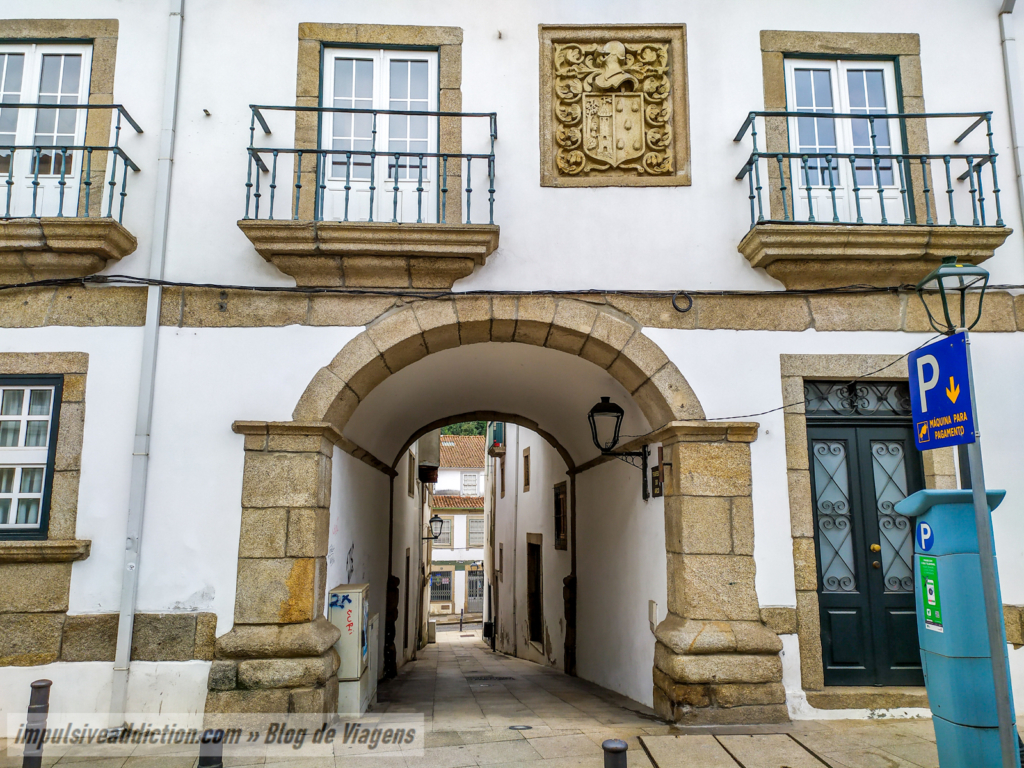
Visit the Cathedral Square and Camões Square in Bragança
These are the city’s two main squares, the former being the prettier of the two.
From Cathedral Square you’ll see Bragança Castle in the background, at the top of the hill on which it stands. There you’ll find a 17th century cross and the old Cathedral of Bragança , also known as Church of São João Baptista, built in the 16th century. As far as the church is concerned, the cloister and sacristy stand out.
As for Camões Square , it’s impossible to ignore the Municipal Library of Bragança . There you’ll also find the ruins of the city’s old market.
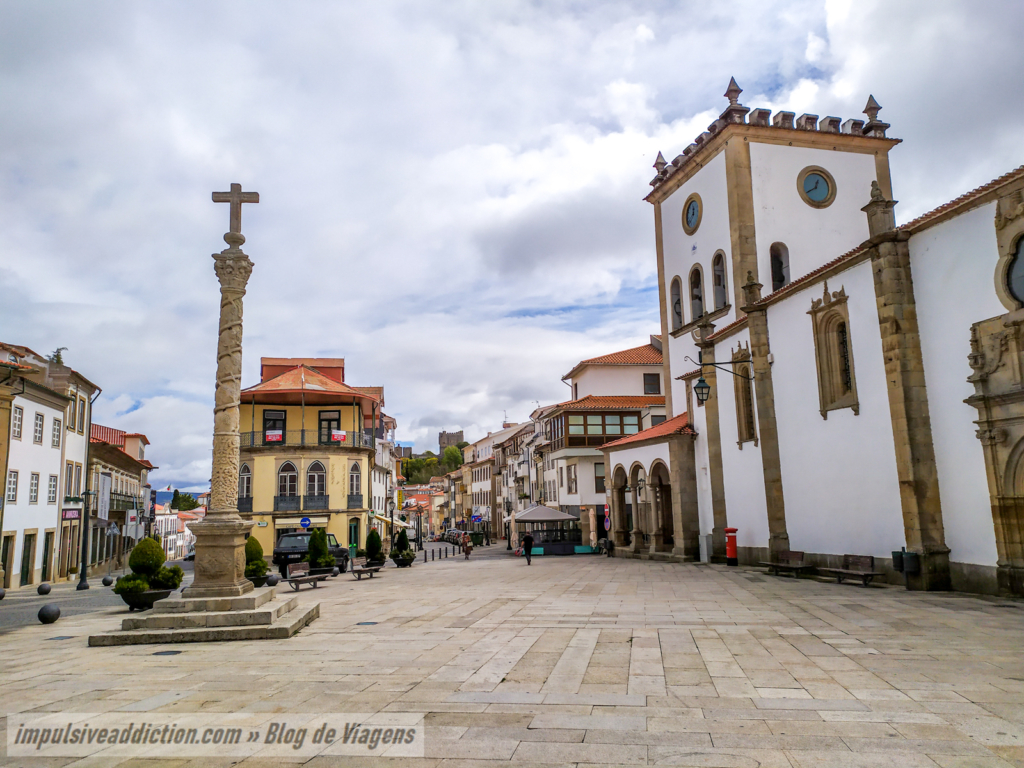
Visit the surrounding area of River Fervença in Bragança
After you visit Camões square, it’s a quick descent to the banks of River Fervença. There you’ll find Fervença Green Corridor , a beautiful pedestrian walkway along the river.
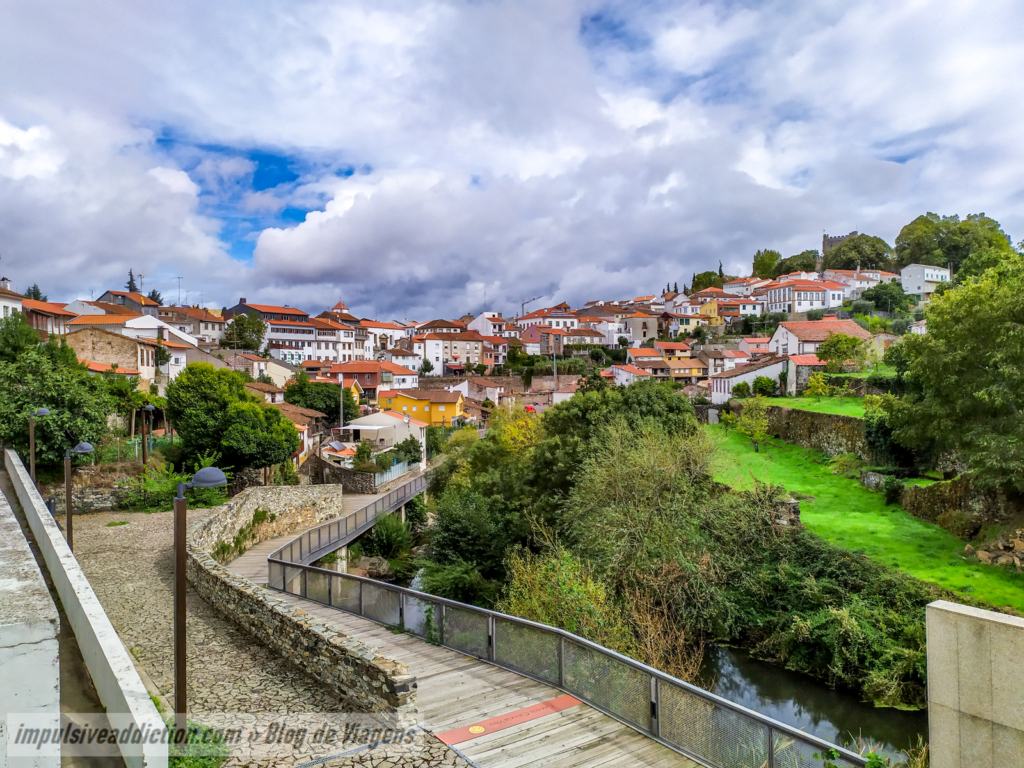
1. Bragança Science Center and Silk House
These are two museums in Bragança that you’ll find right by the River Fervença and Green Corridor. There is a combined ticket to visit both. The first is dedicated to science, with small didactic and interactive exhibitions. I remember, for example, the machine that replicated the formation of a tornado, and the information panels about the planets in the solar system.
The Silk House , on the other hand, is dedicated to the silkworm and the history and importance of silk in Bragança. I remember the little box that showed the life cycle of the silkworm, and the video about the legend of the last silk butterfly that flew. On the lower floor of the Silk House I had my first ever experience of virtual reality.
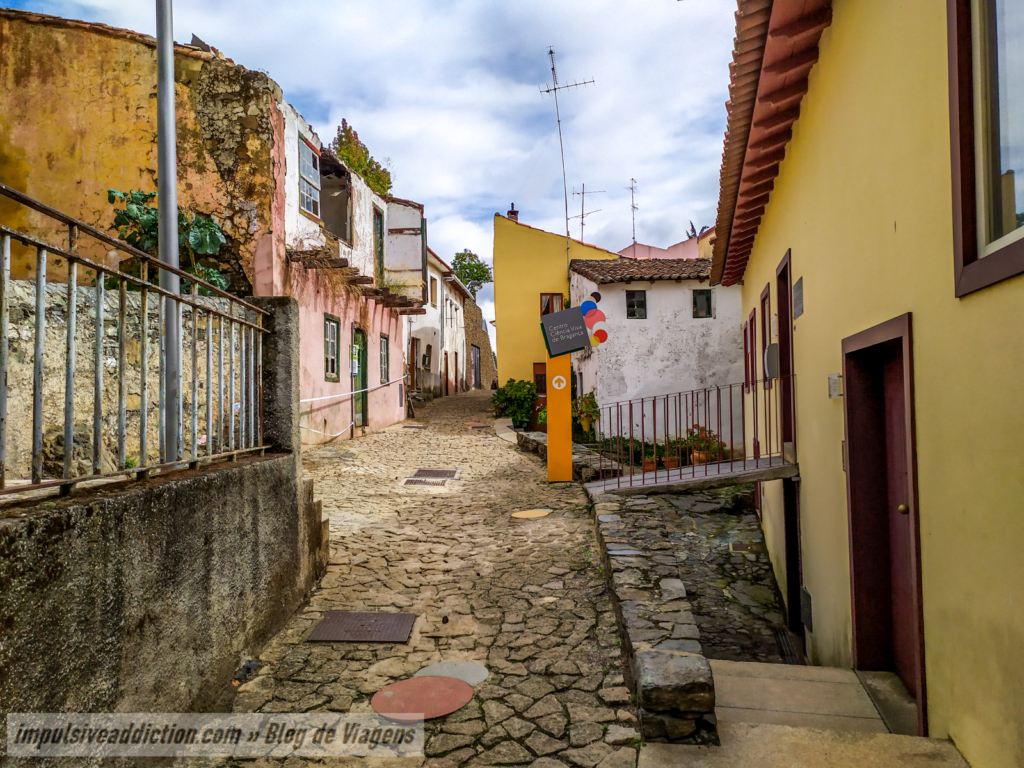
2. Fervença Urban Park and Polis Zone
Then there’s the city’s greenest area, the Urban Park and Polis Zone on the banks of River Fervença. It’s certainly a pleasant place to take a stroll or do some physical exercise. It’s a popular spot for the inhabitants of Bragança.
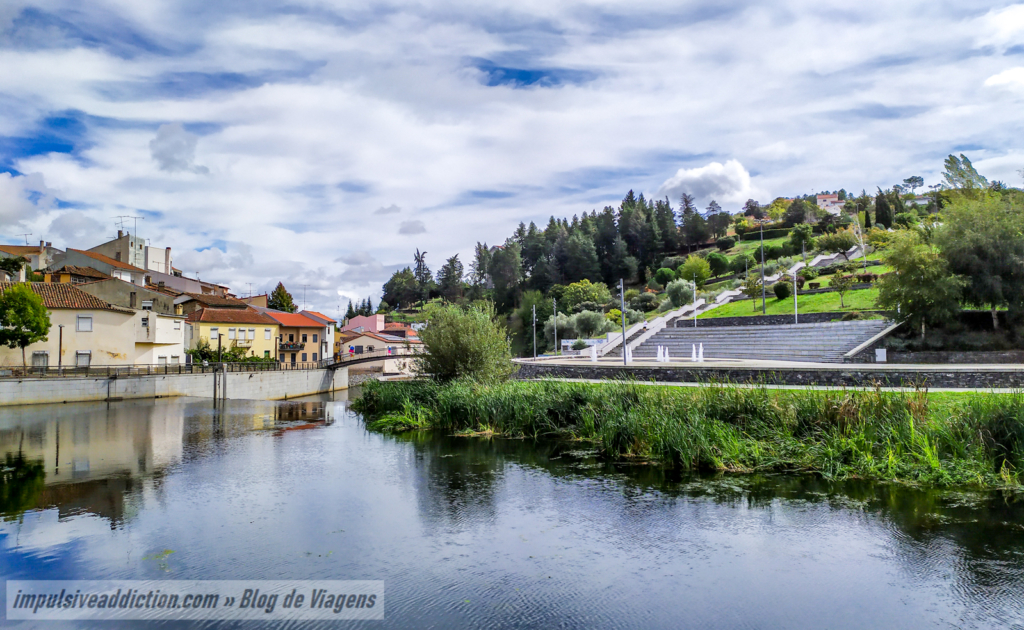
Visit João da Cruz Avenue Garden
Returning to the historic center, I must point out the garden on Avenue João da Cruz, next to Bragança Municipal Theatre. There you’ll find a very large fountain that lights up spectacularly at night.
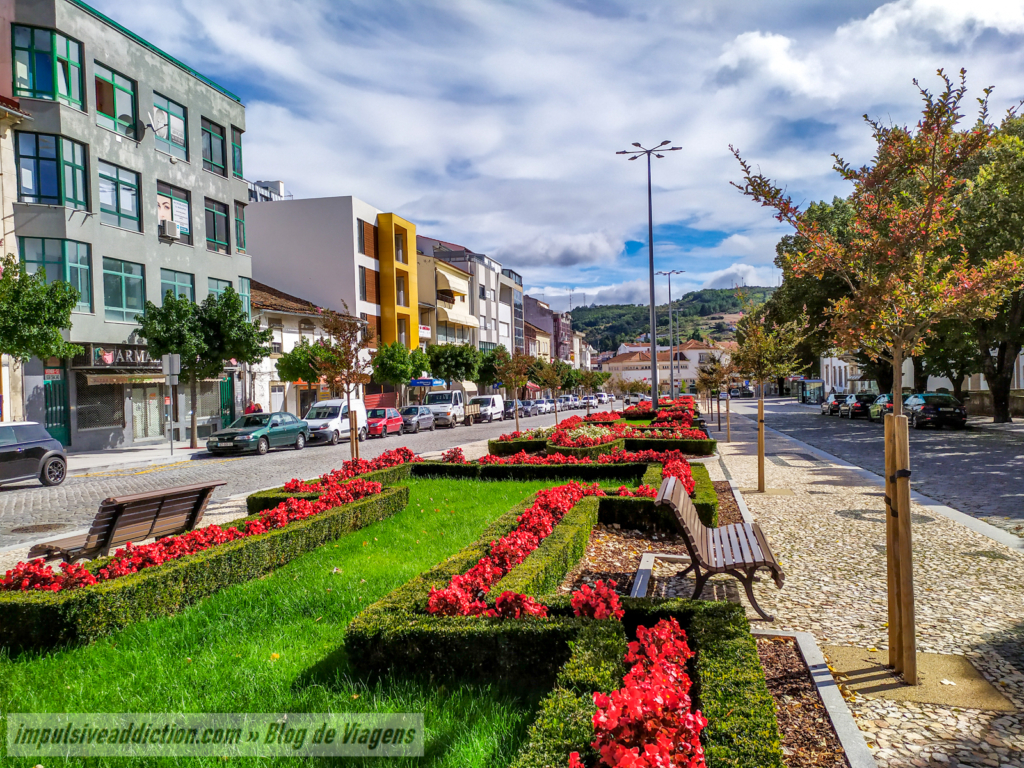
Discover Bordallo II in Bragança
Bordallo II’s urban art is also present in Bragança, in 3 different works: the Chameleon and Ginette, side by side, and then the Wild Boar . I found them already in a bad state of conservation, even a bit vandalized, so I hope you can still see them during your visit.
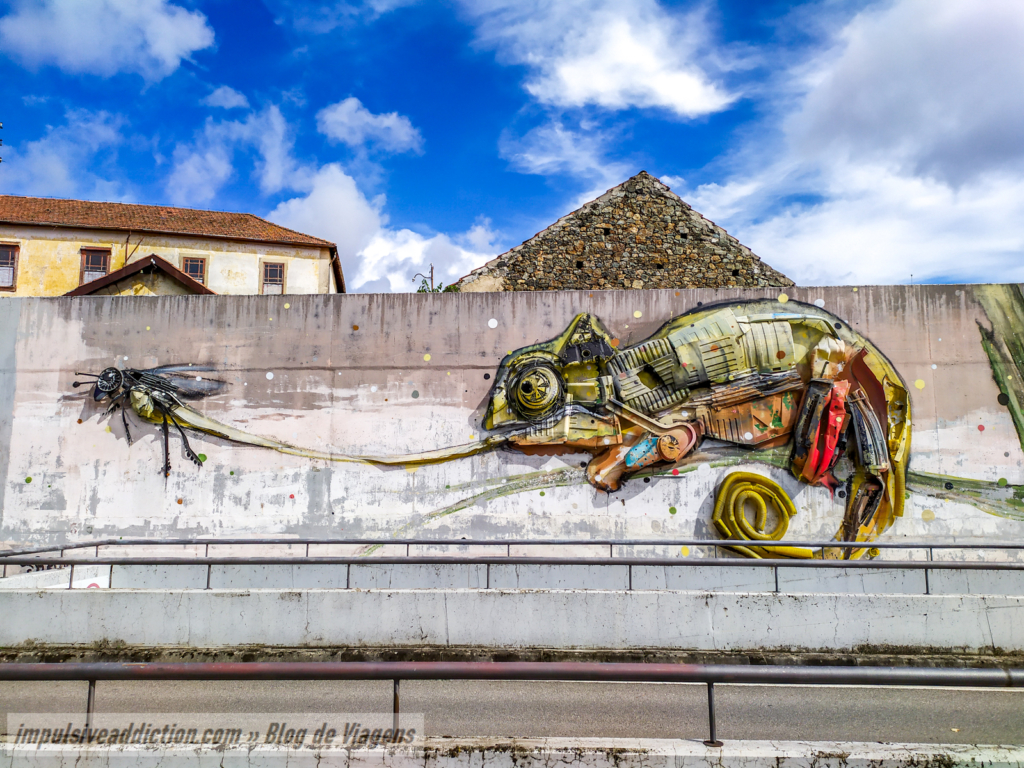
Visit Bragança National Railway Museum
Finally comes the best museum in Bragança, in my opinion. Here you’ll find old locomotives and train carriages next to the disused Bragança train station. You can learn about the history of the train line that used to run through Bragança, which was closed in 1992. Did you know that Bragança hasn’t had a train since then?
I found it curious that garden benches were placed on top of the old train tracks. They changed it into an excellent space for leisure and socializing. 😉
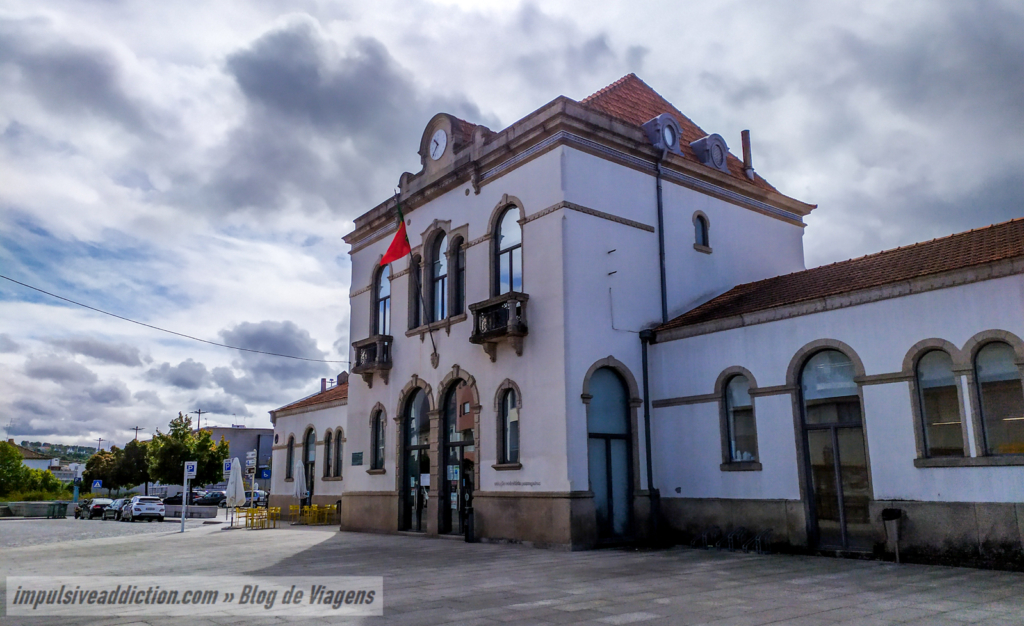
Visit the outskirts of the city of Bragança
Nos arredores da cidade, há que dar prioridade aos miradouros. De todos os sítios que mencionarei nesta secção são o que considero mesmo obrigatório!
1. Viewpoint of São Bartolomeu
The best spot is clearly São Bartolomeu viewpoint , from where you can see the whole city and Bragança Castle in the distance. On the way there, you’ll pass two other viewpoints that give you a closer view of the castle and citadel, which is why they’re called the Citadel and Castle Viewpoints . I’ve marked the three viewpoints on the map in this article.
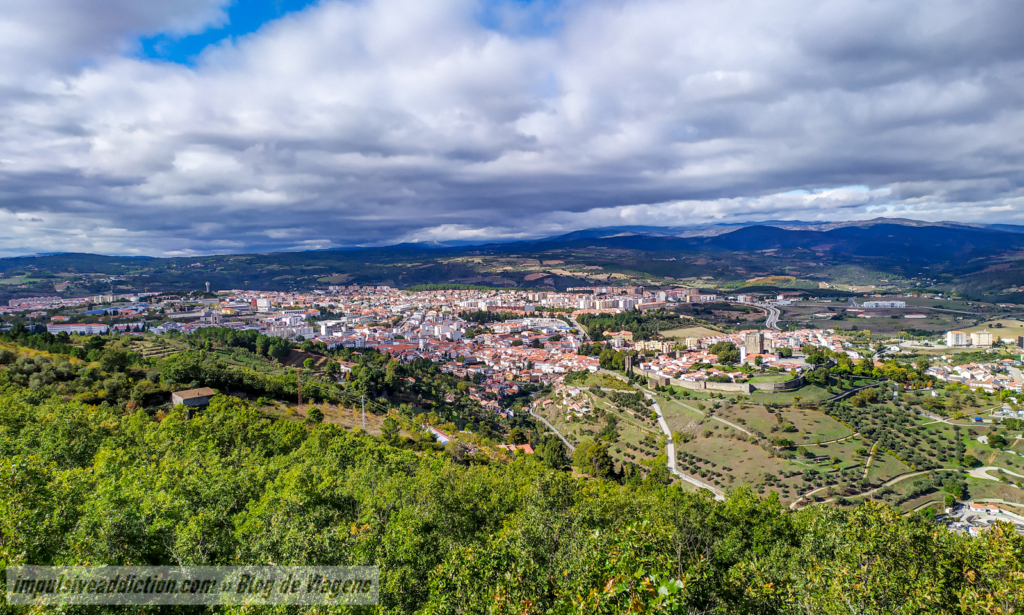
2. Citadel Viewpoint
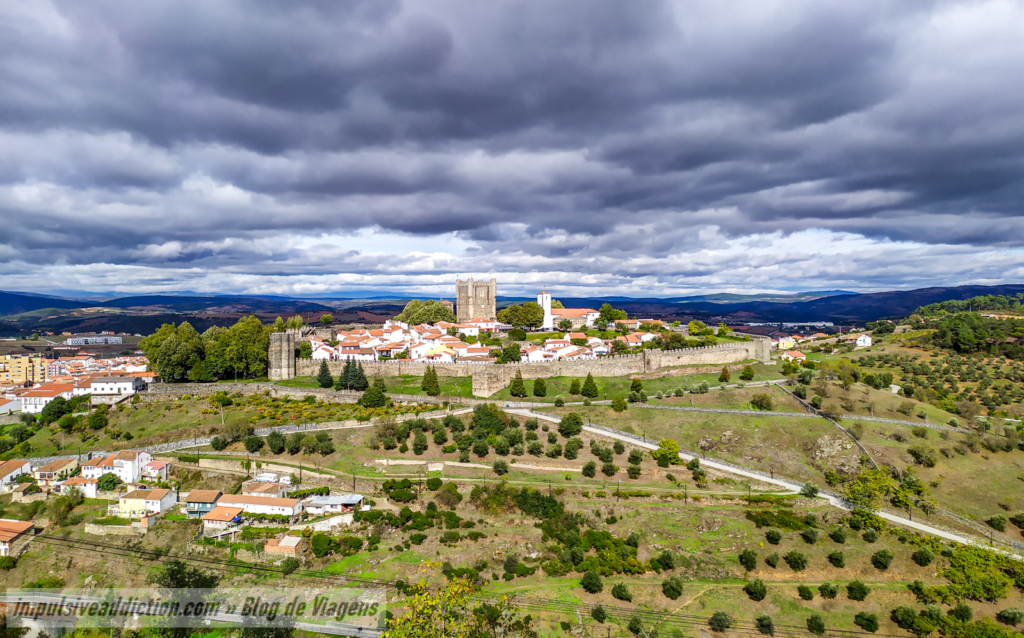
3. Castle Viewpoint
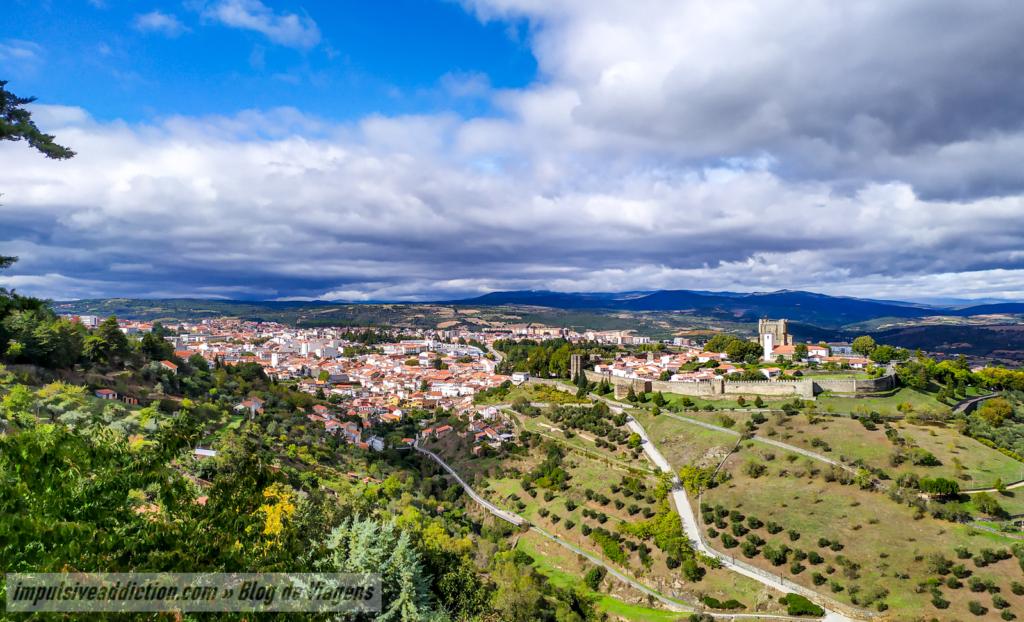
4. New Cathedral of Bragança
The New Cathedral of Bragança was built at the beginning of this century. It replaced the old Bragança Cathedral, which I’ve already mentioned in this article. It’s a modern church, which is optional for me.
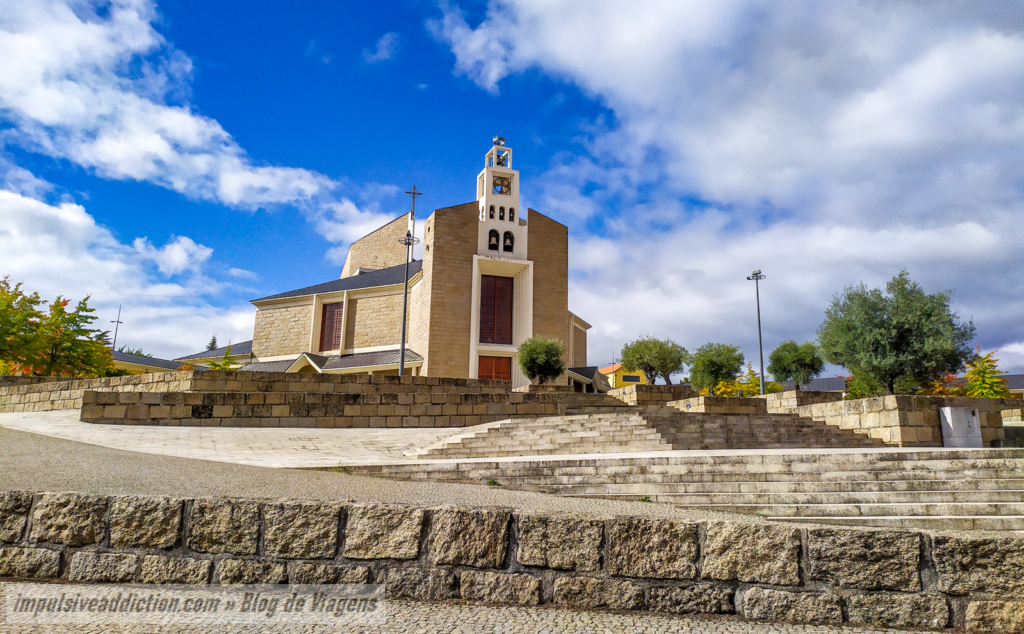
5. S. João de Deus Fort Memorial Center
It is very close to Bragança’s New Cathedral, and also to the Town Hall. It stands where the Fort of São João de Deus used to be, and today contains exhibitions about the military presence in Bragança.
6. Ruins of the Castro de Avelãs Monastery
The Monastery of Castro de Avelãs was a Benedictine monastery of São Salvador. It became extinct in the 16th century. I would highlight the brick cladding that still survives and the tomb under the arch on the side.
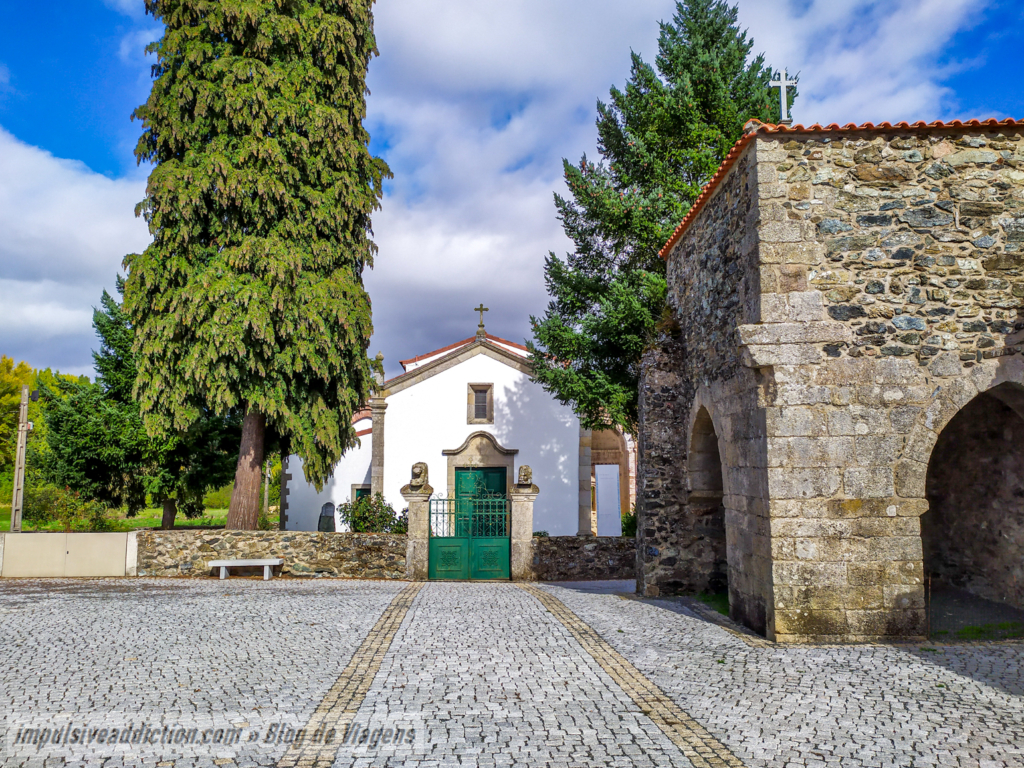
Visit the Basilica of Santo Cristo de Outeiro and the Ruins of Outeiro Castle
Outeiro is on the edge of the municipality of Bragança, not far from Quintanilha, a village in Montesinho Natural Park. The Basilica of Santo Cristo , dating from the 17th or 18th century, is one of the most imposing churches in Bragança.
Next to the village of Outeiro is its castle, or in this case, ruins. You should climb up to them for the best views over the region. The castle dates back to the reign of King Dinis (end of the 13th century), but was built on top of a previous one whose origin is unknown. It is known, however, that there has been human occupation there since Roman times.
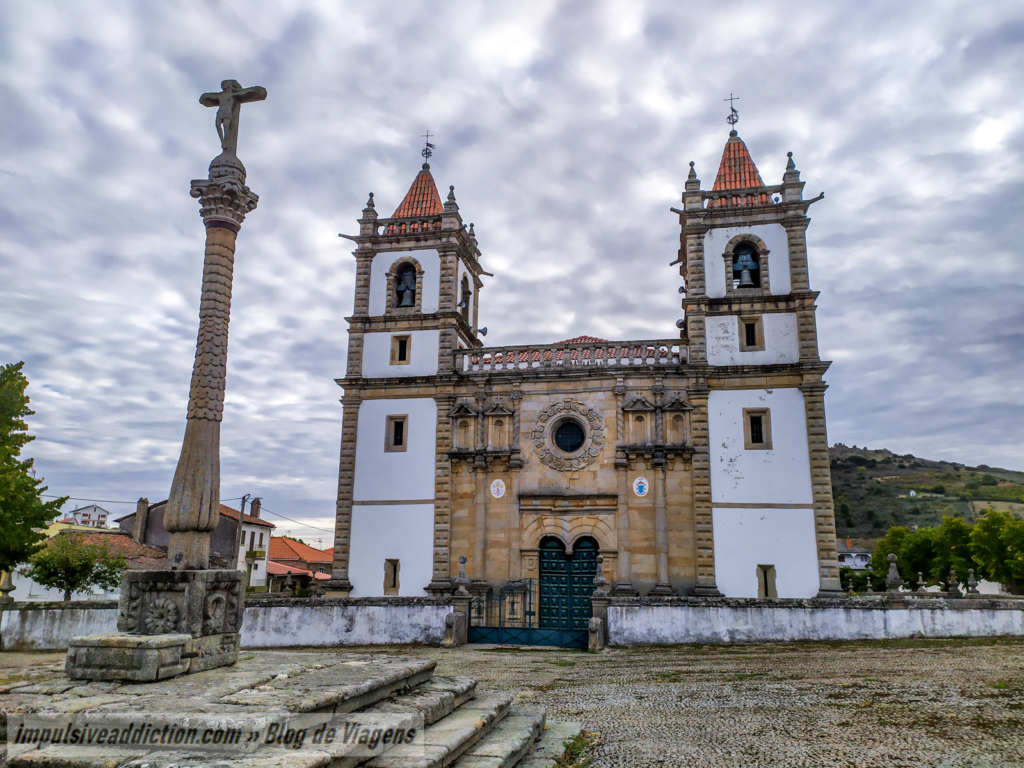
Visit the most beautiful villages of Bragança in Montesinho Natural Park
If you’re looking for a route to discover Bragança’s best villages in Montesinho Natural Park, I want you to know that I have an article dedicated to that.
I’ve already told you which are my favorites ( Montesinho, Aveleda, Rio de Onor, Guadramil, and Gondesende ), but below you’ll find more information and photos about each of them and others that I also consider a must-see.
1. Gondesende
Gondesende is one of my favorites. It’s picturesque, very well preserved and has tourist houses for overnight stays.
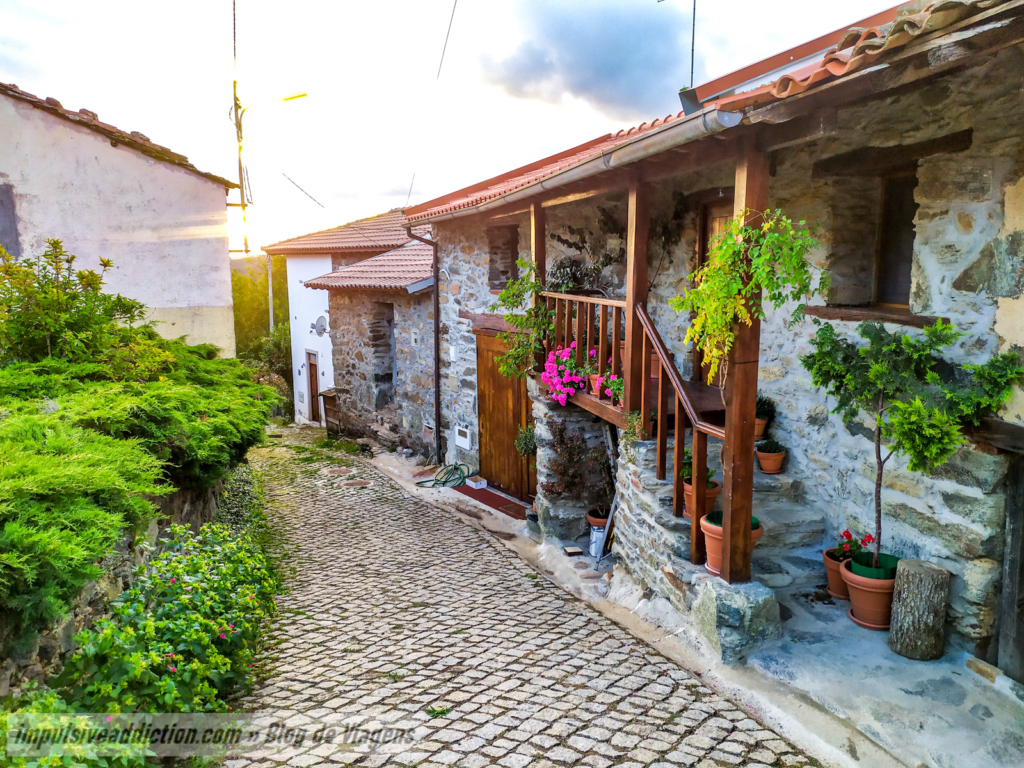
2. Vilarinho
Vilarinho stands out in the park for having the Apimonte headquarters there, where you can buy honey from chestnut hives in Montesinho Natural Park. I also recommend the honeycomb, which you can eat by the spoonful: delicious! 😀 As a curiosity, Apimonte honey won already several medals for its quality.
Did you also know that it was near this village that traces were found of a brown bear passing through the north of Portugal from northern Spain? Some say that in a few years’ time it’s very likely that we’ll have brown bears in the country, and that the most likely place is the Montesinho Natural Park.
There is also a trail that you can follow from Vilarinho. It’s the PR4 – Ribeira de Ornal . It’s a total of about 8km, and highlights include the Ornal Stream and a stretch of the Baceiro river.
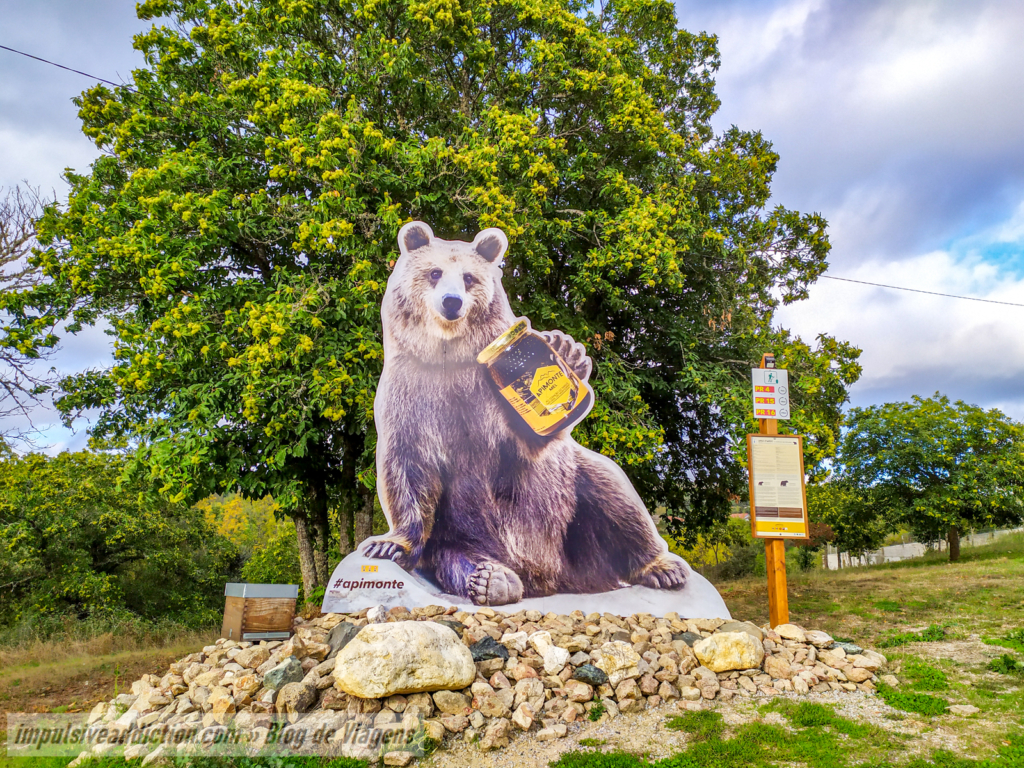
3. Cova da Lua
The nearby Nossa Senhora da Hera picnic park is a highlight.
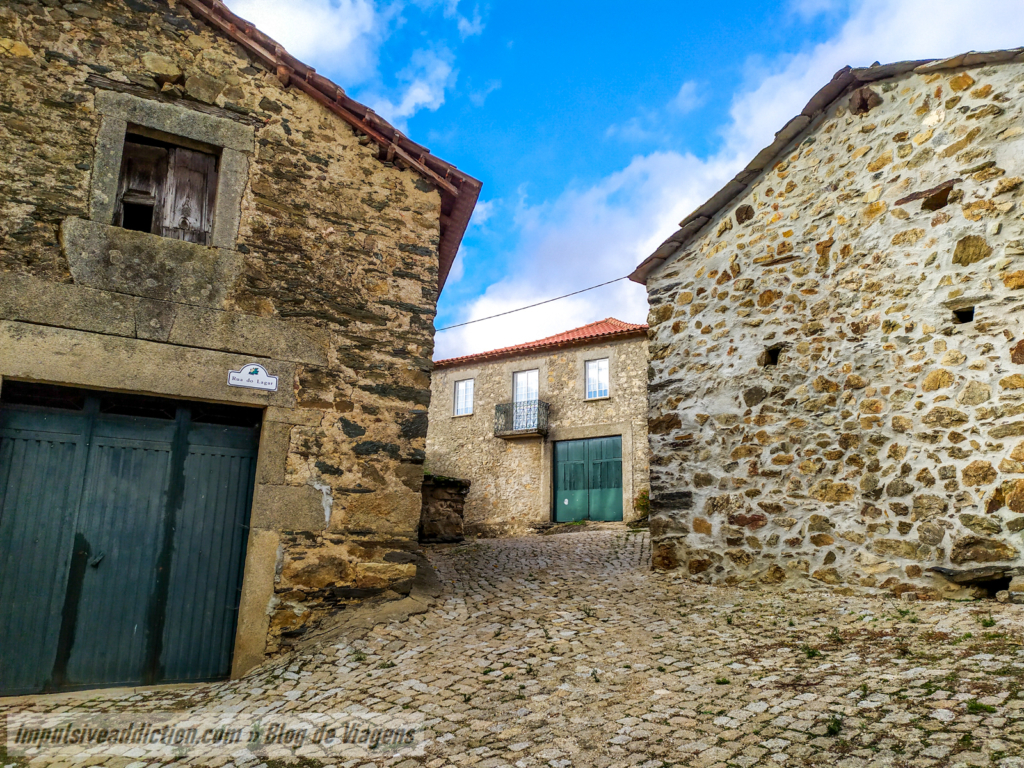
4. Montesinho
From Montesinho I’d like to highlight the beautiful, flowery and well-preserved village. Don’t forget the dirt road that you can follow to the highest part of the Natural Park. There you’ll find Casa da Lama Grande, Serra Serrada Dam and Veiguinhas Dam .
Casa da Lama Grande was a former shelter run by the park. Unfortunately it was abandoned and later vandalized, and is now occupied only by cows (at least when I visited, a real sanctuary!).
From Montesinho, you can start a walking route: PR3 – Porto Furado .
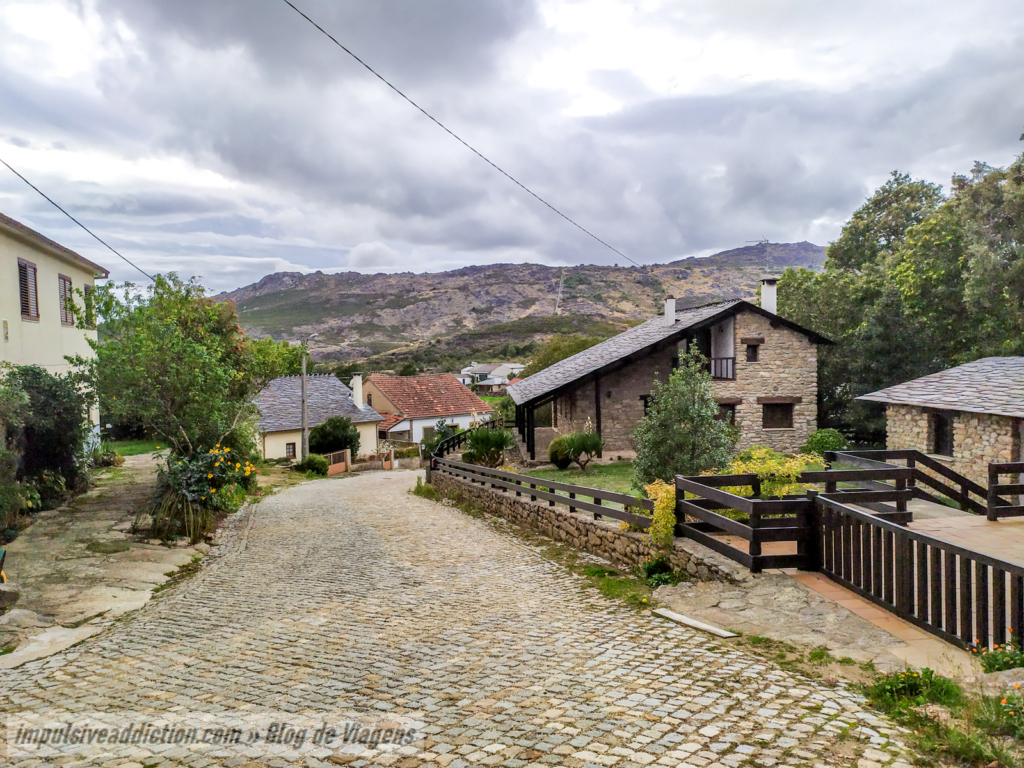
Gimonde stands out for its bridges over River Onor, near its mouth on River Sabor. You have to cross the river both on the old bridge and on the path of alpondras (“stones”) over it.
There is also a walking route from Gimonde: PR8 – Rota da Malara .
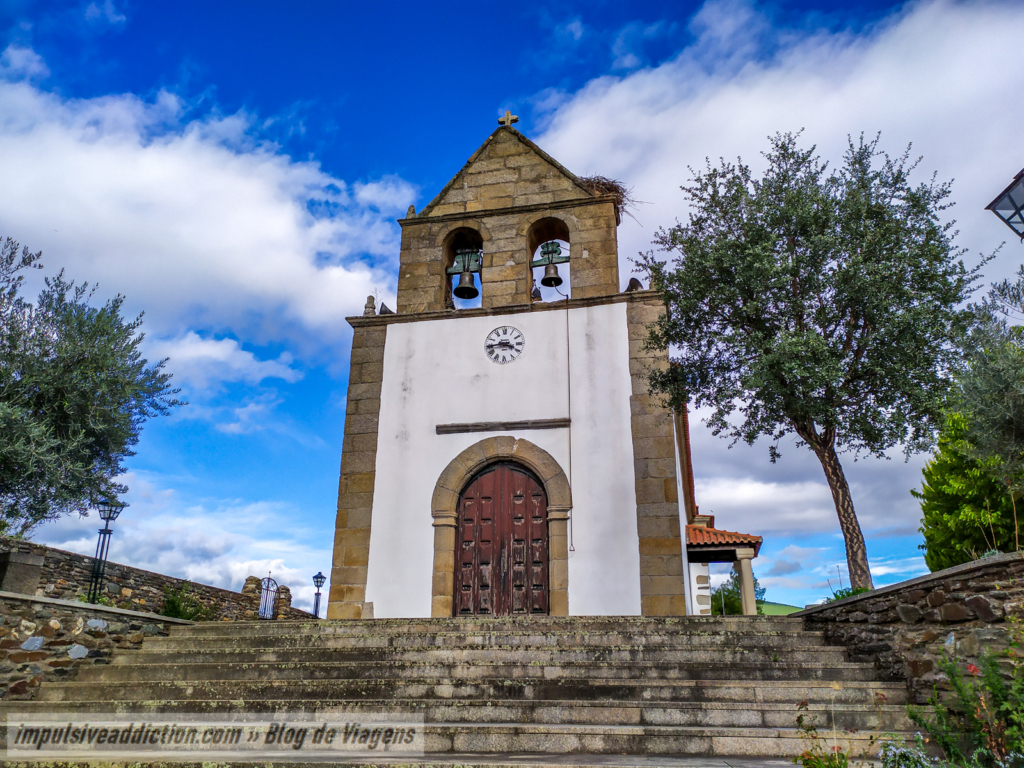
The village of França “is without Paris”, mind you! That’s how the locals present it. It has a beautiful river beach, and on the outskirts there’s an equestrian center where you can come into contact with horses. Note that França is the Portuguese word for “France”, so you will be visiting France without leaving Portugal. 😀
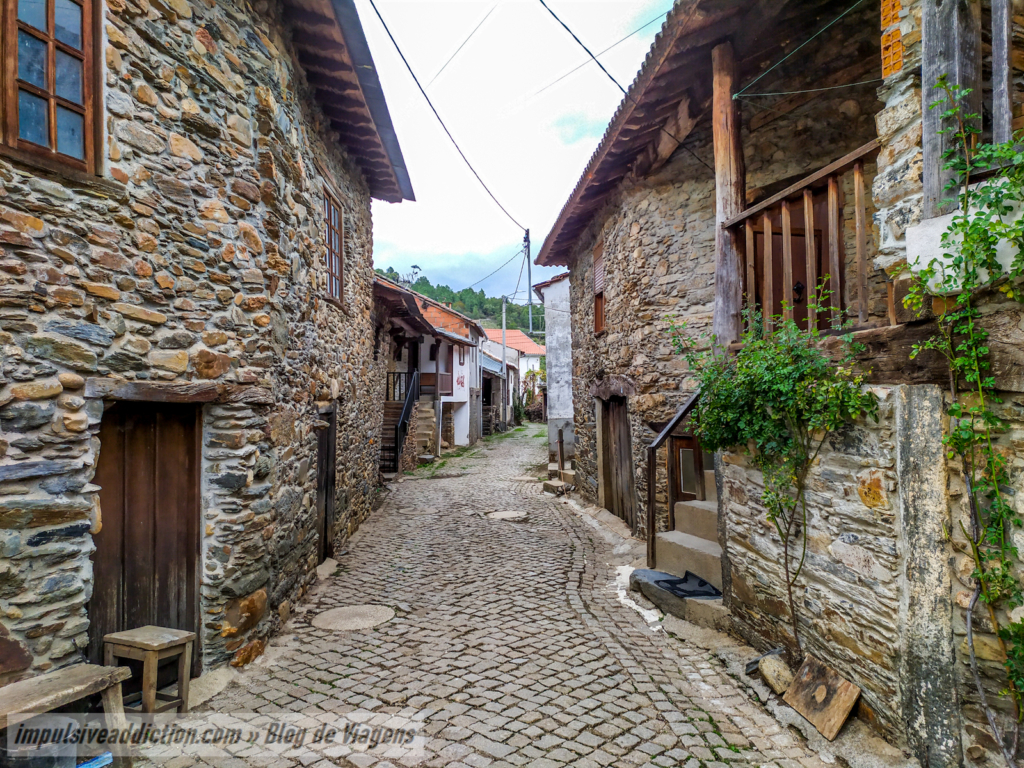
The village of “the donkey” in Montesinho Natural Park, on the banks of the Aveleda stream. Very cute, very authentic, still not very touristy, which is good! 😉
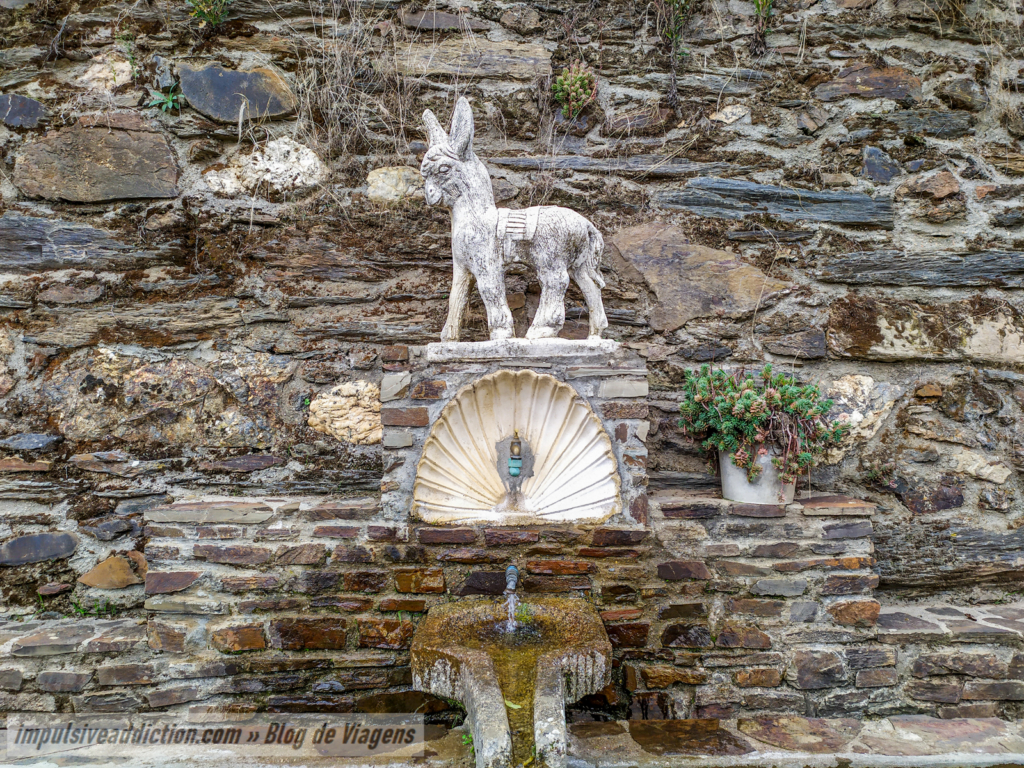
It’s usually a village you pass through on your way to or from Rio de Onor. Don’t forget to climb up to the viewpoint of the village from the church, and to go to the windmills a short distance from the center, next to the river.
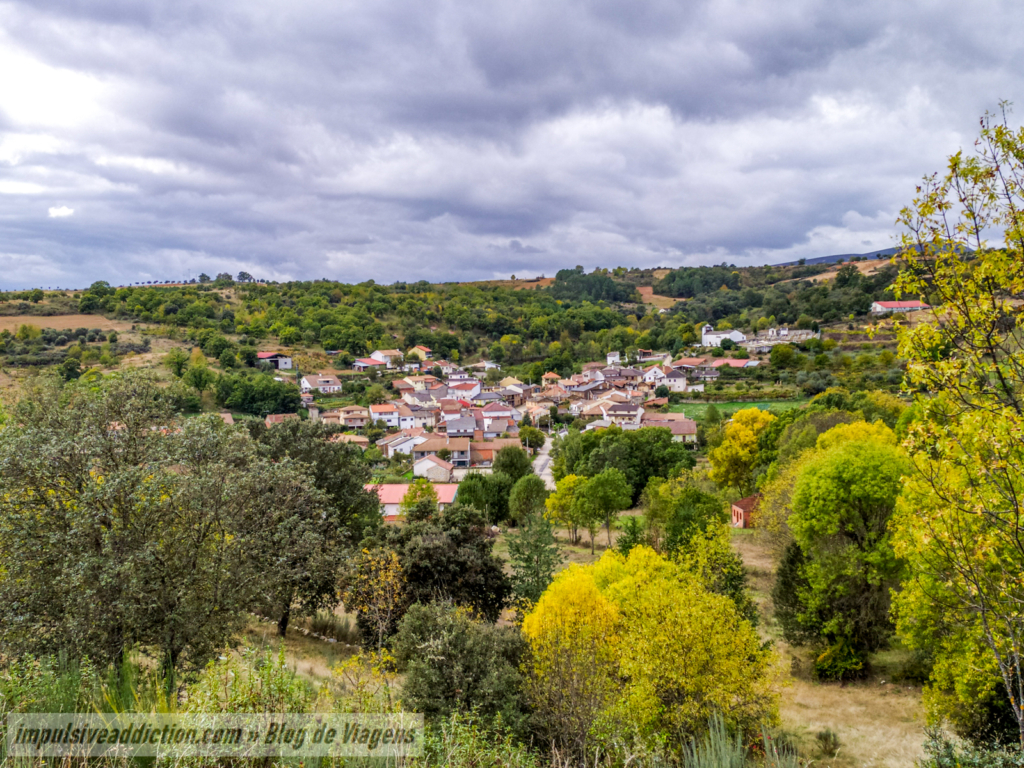
9. Rio de Onor
Rio de Onor is a wonder of Portugal and a community village on the border with Spain. On the Spanish side it’s called Rihonor , and there’s a waterfall that may have water in the winter months: ask the locals where it is, they’ll be sure to help you. 😉
There is also a walking trail: PR11 – The Portuguese side of Rio de Onor .
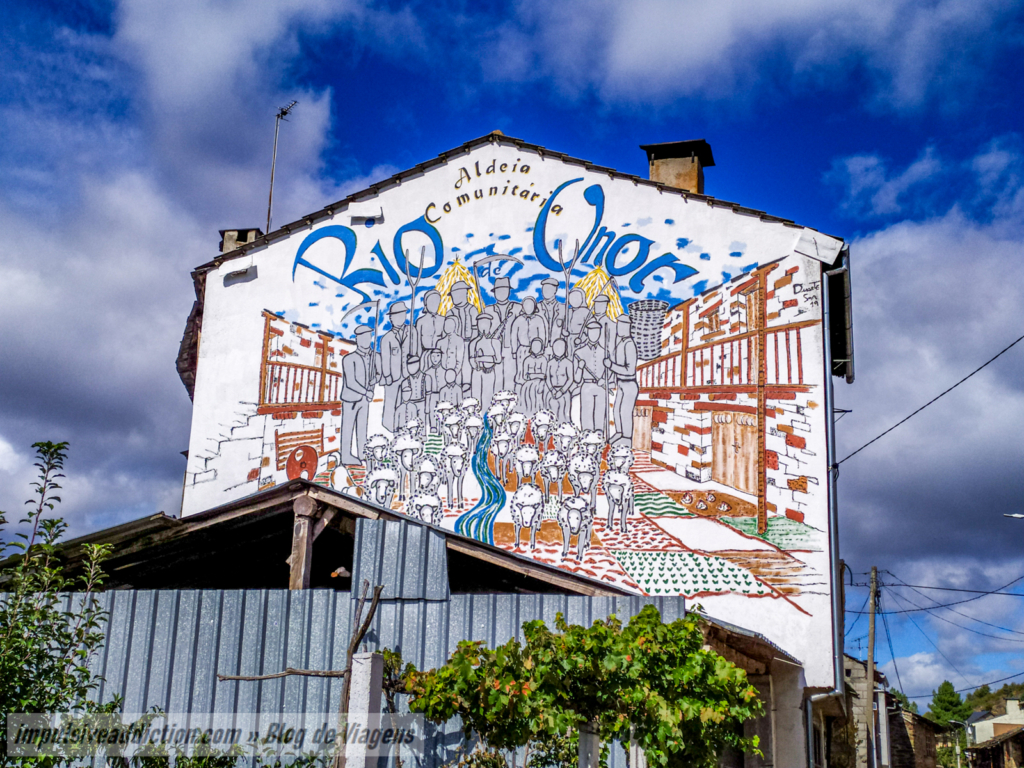
10. Guadramil
Guadramil is an old village with schist roofs in Montesinho Natural Park. Although touristy and well known, it still retains its authenticity, just as I mentioned for Aveleda.
It is said that it is in the area around Guadramil that it is easiest to spot roe deer and deer in the wild. There is a hiking trail there that you can follow: the PR12 – Rota dos Cervídeos .
Don’t forget to go up to Guadramil Church for a beautiful viewpoint over the village.
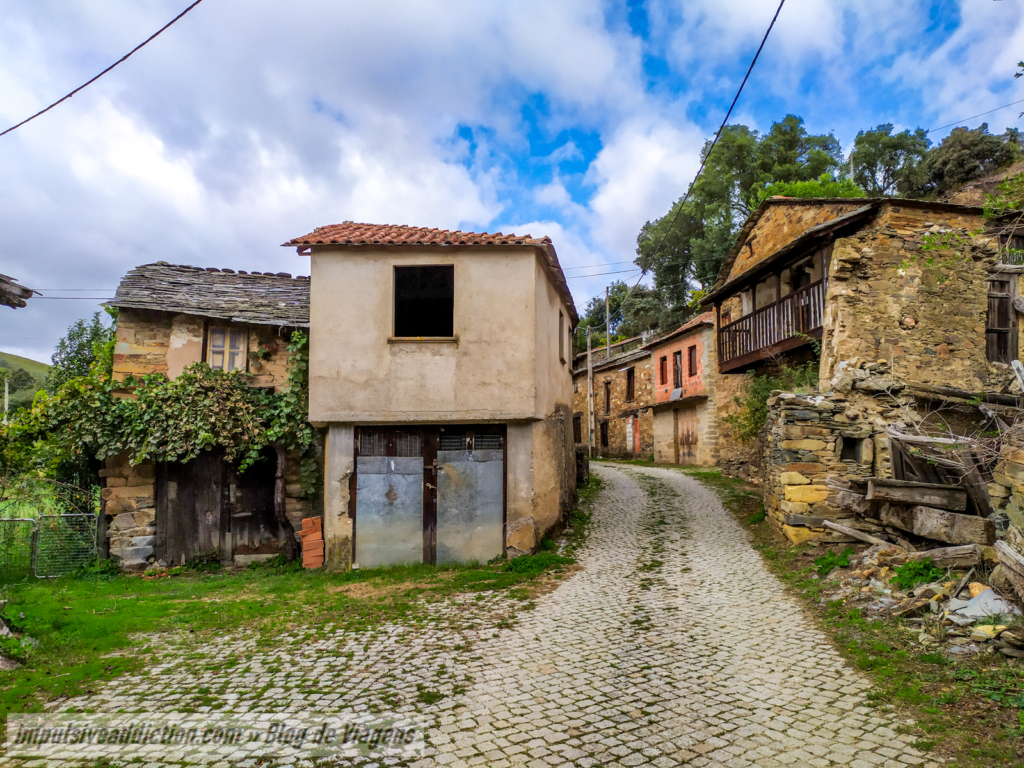
11. Quintanilha
Finally, Quintanilha. I’d like to highlight the Colado picnic area , with an excellent river beach, and the walking route you can take from the village: PR1 + PR2 – Rio Maçãs .
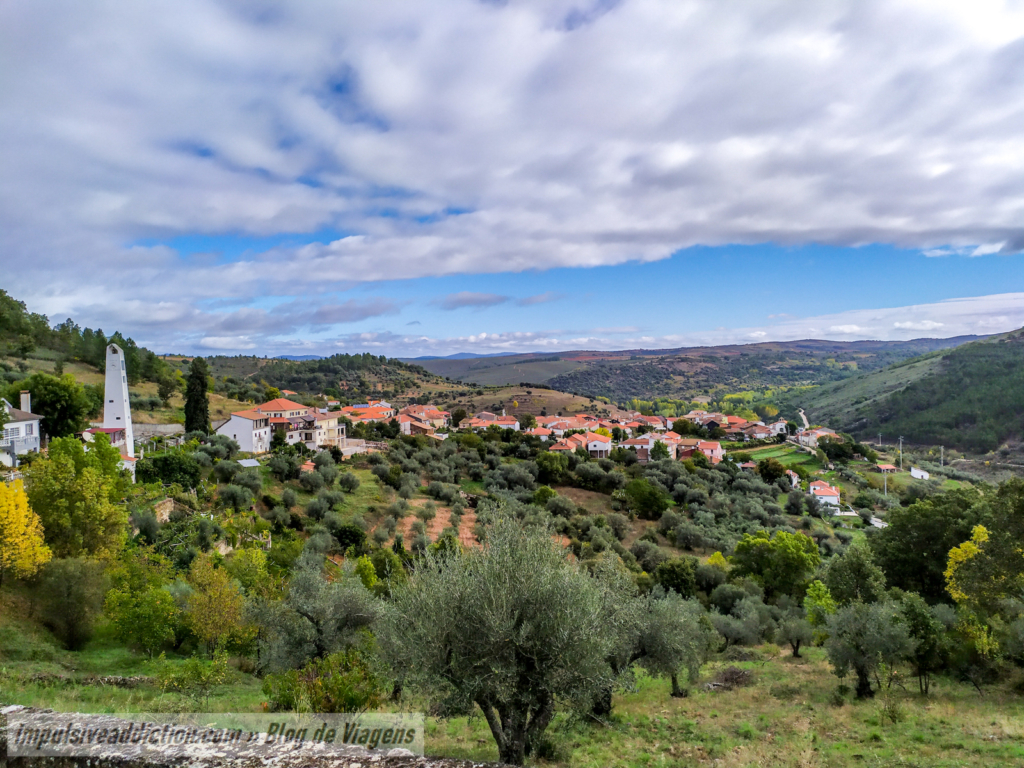
Other villages in Montesinho Natural Park (optional)
I’ve visited several other villages and some of them have beautiful corners, but I don’t consider them unmissable. I’ve left some photos of them below. If you identify with any of the villages, go and explore them too! 😉
1. Deilão and Vila Meã
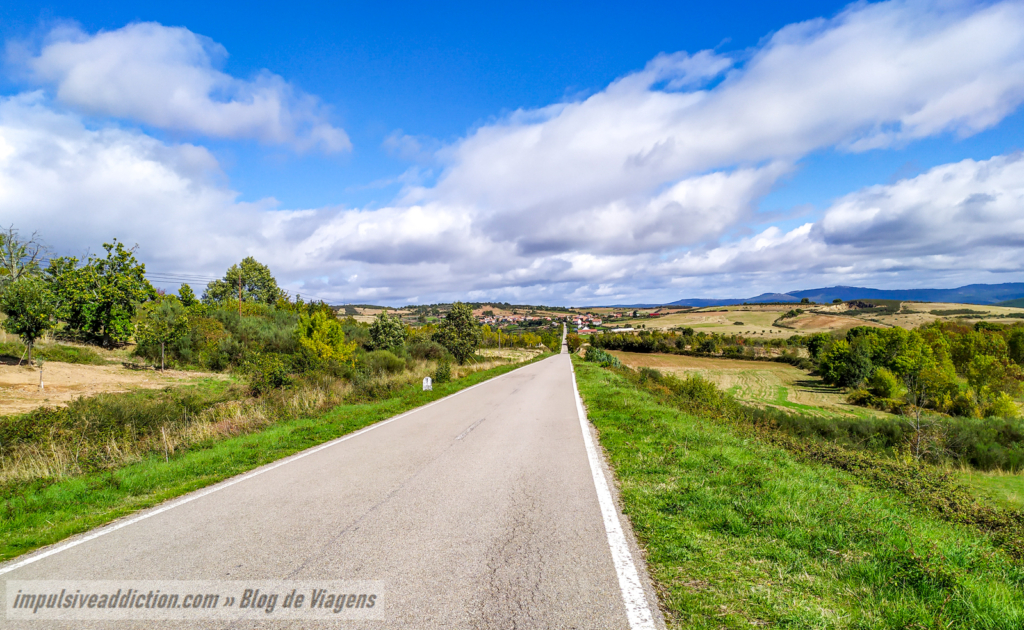
2. São Julião de Palácios
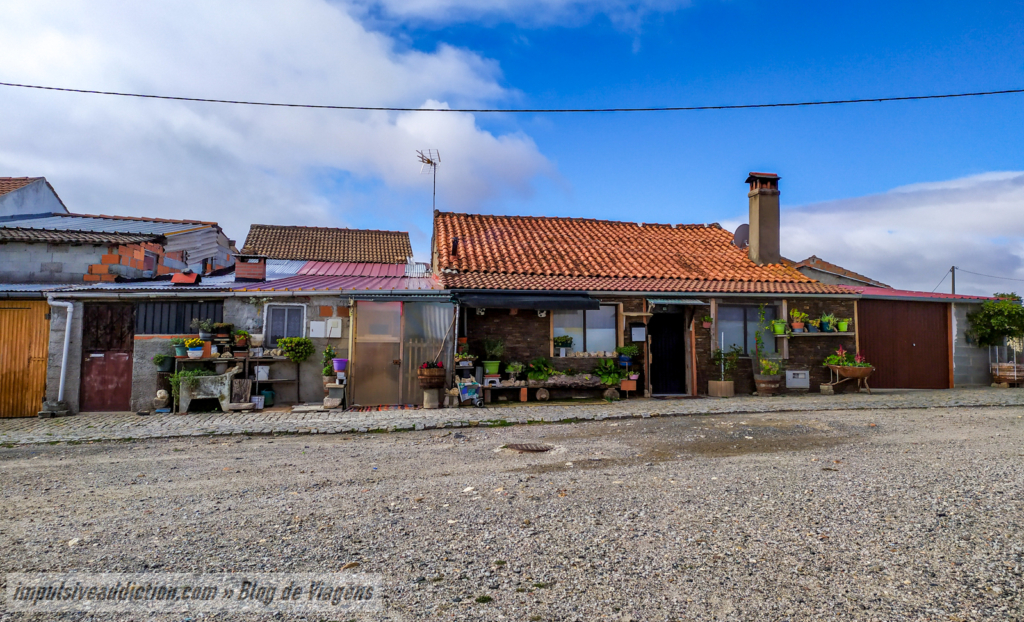
3. Palácios
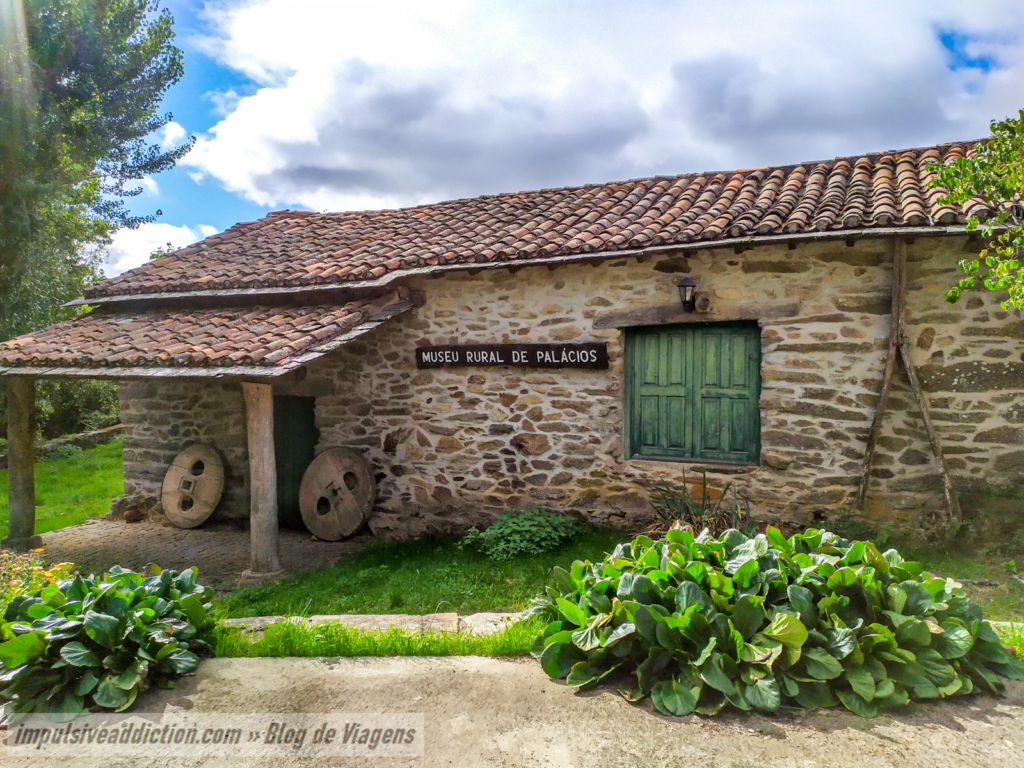
4. Petisqueira
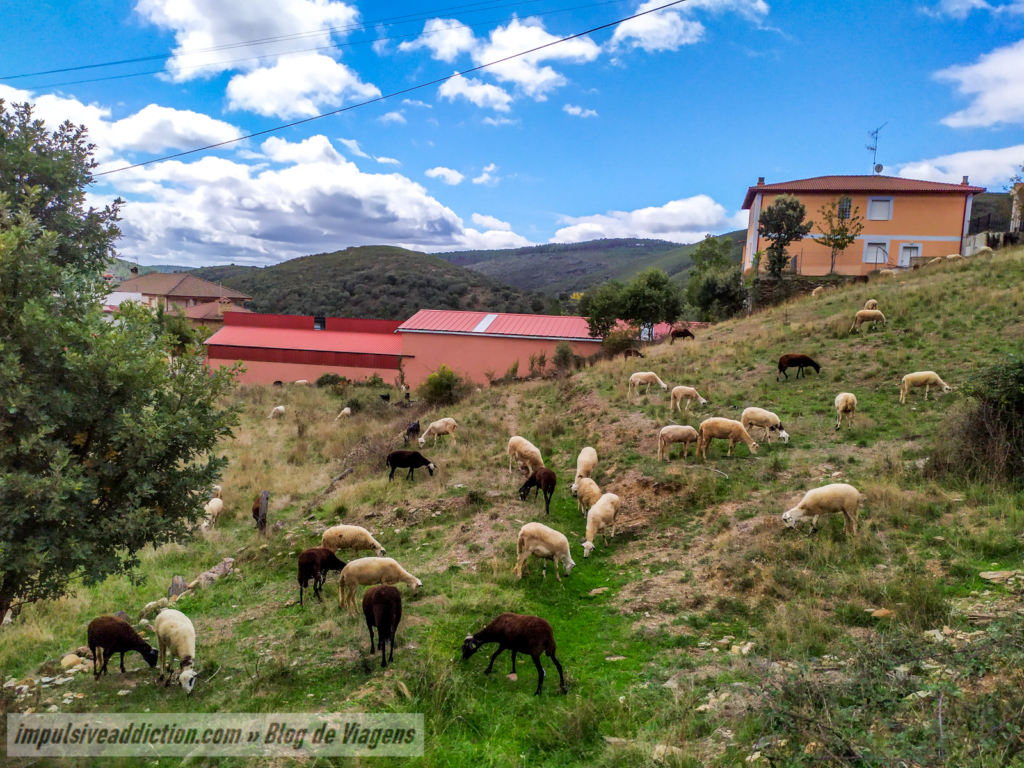
6. Caravela
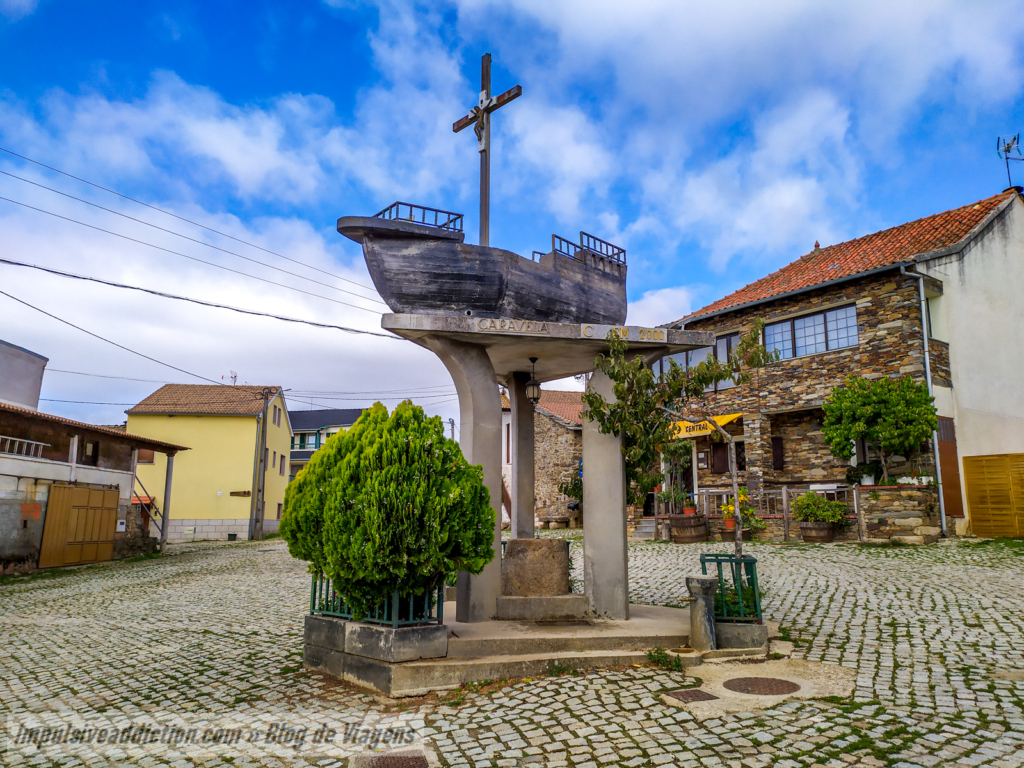
9. Oleirinhos
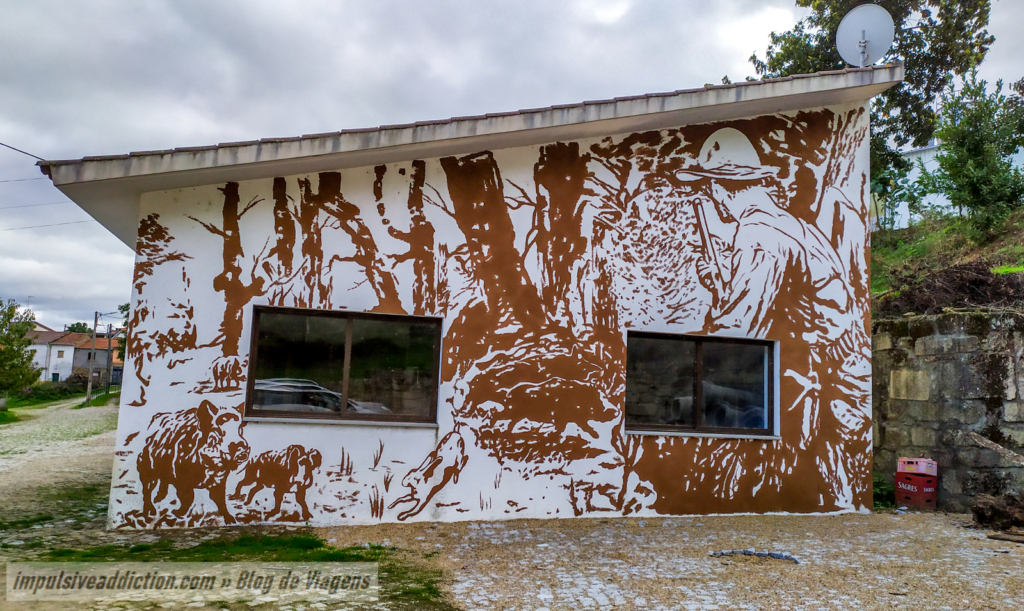
10. Meixedo
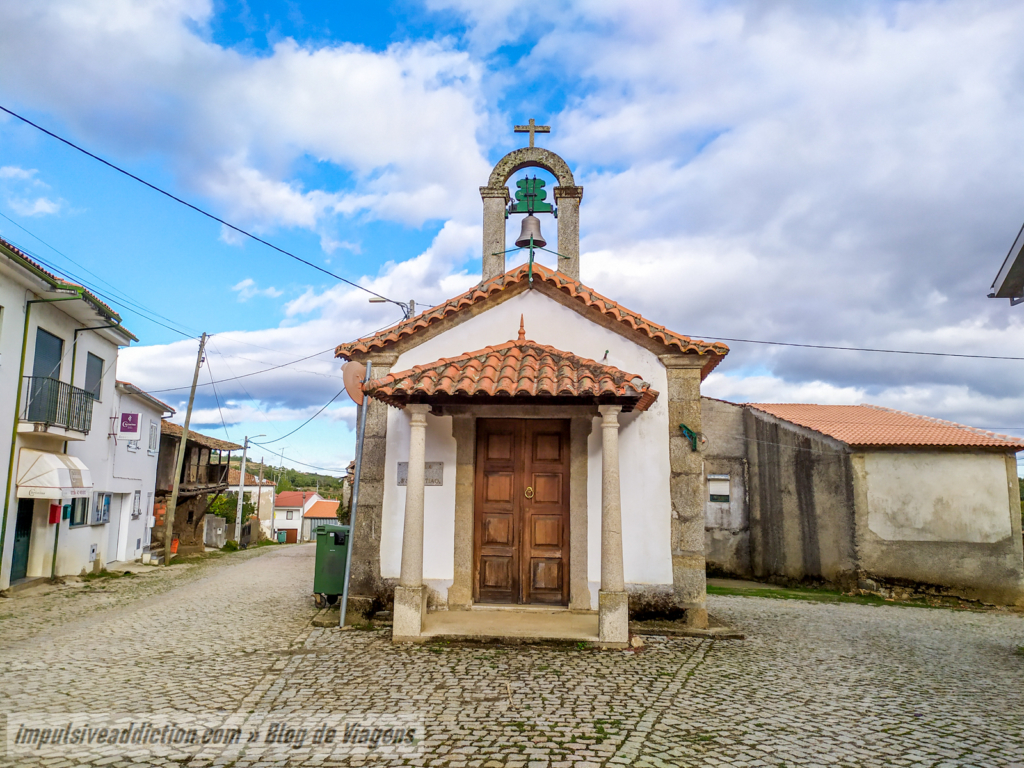
11. Portelo
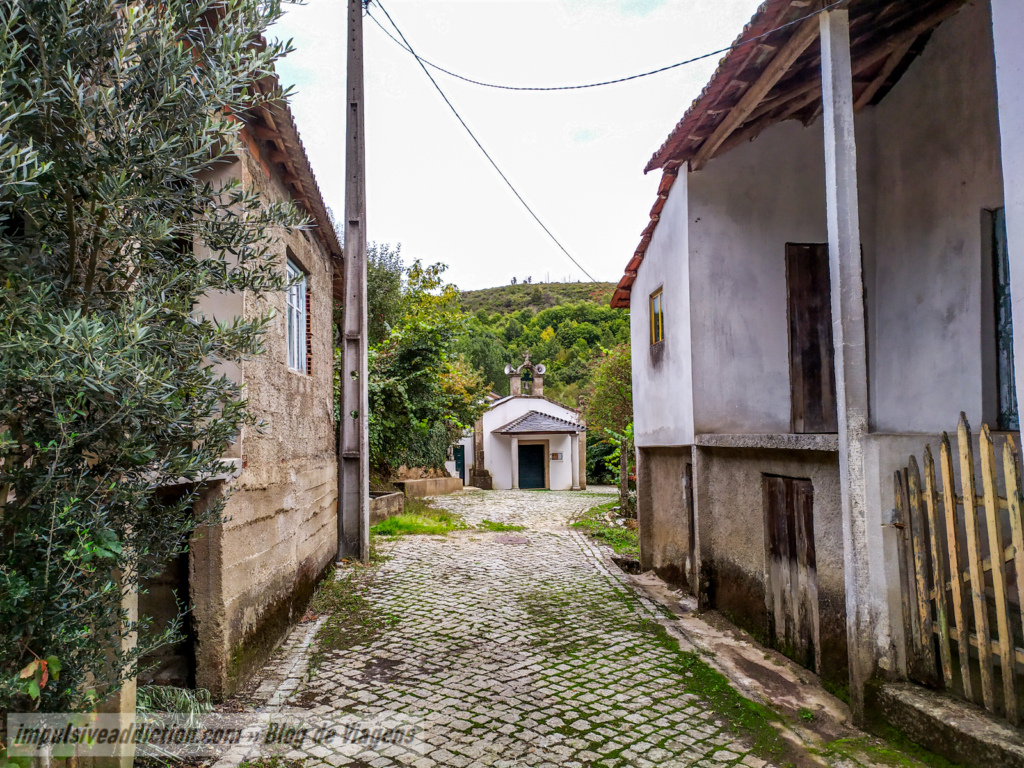
12. Espinhosela
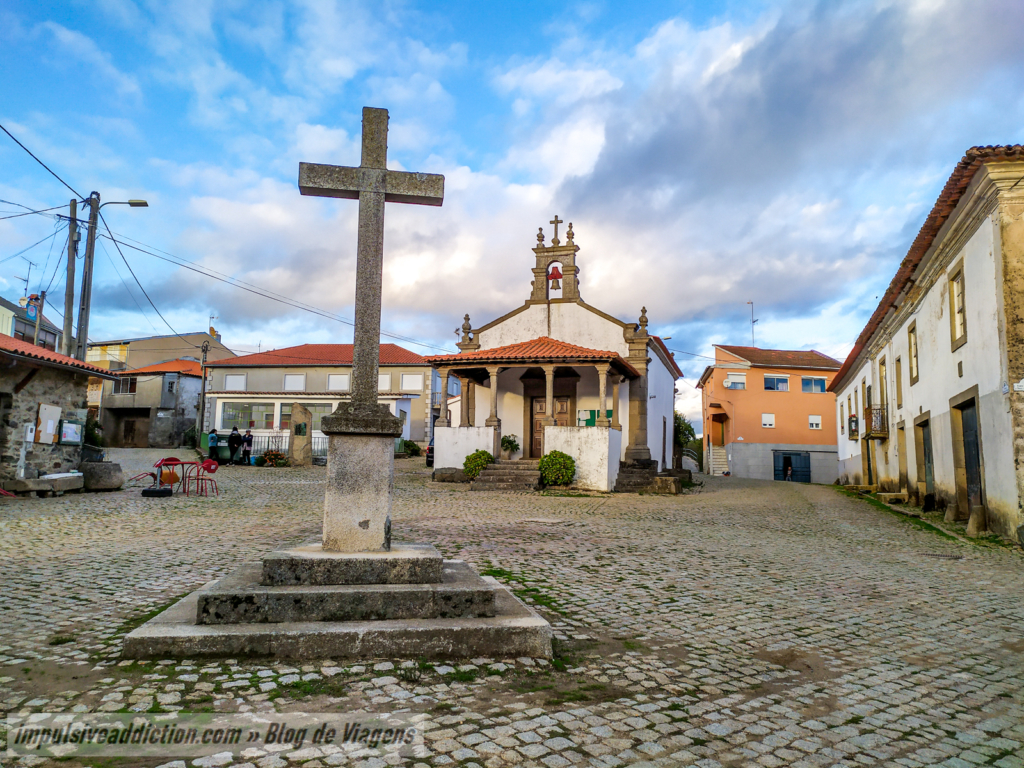
13. Terroso
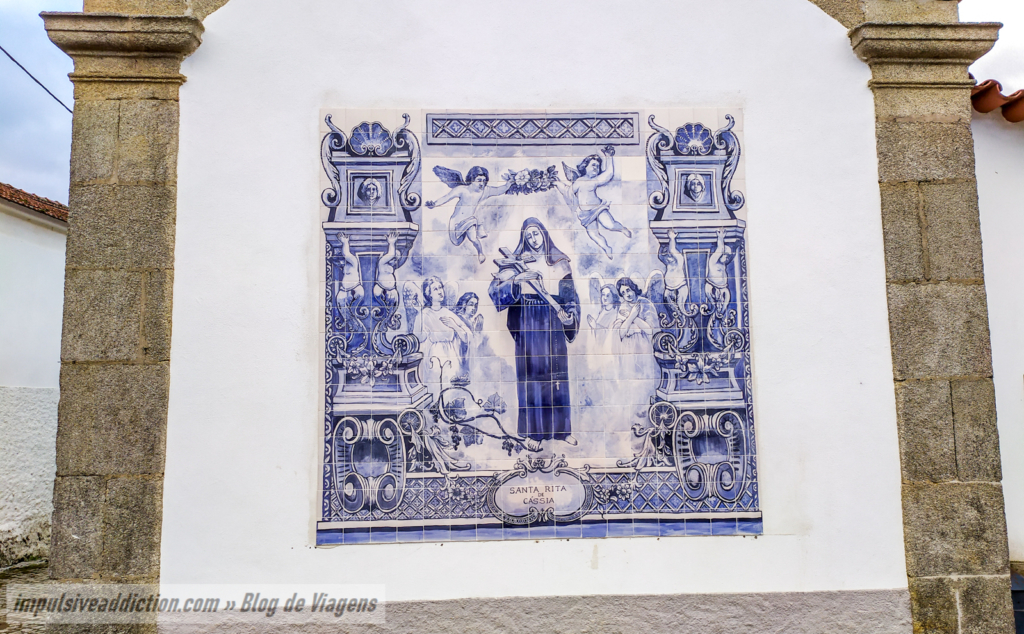
Things to do in Bragança surrounding municipalities
Make a point of reading my article with an itinerary for visiting the region of Trás os Montes , in the north-east of Portugal. In that article you’ll find lots of information and tips about what to do around Bragança, particularly in the other municipalities in the district: Vinhais, Mirandela, Macedo de Cavaleiros, Vila Flor, Carrazeda de Ansiães, Torre de Moncorvo, Vimioso, Alfândega da Fé, etc.
Also check out my article on the Douro International Natural Park, which is so close by, and so impressive! 😉
Other Itineraries and Travel Guides in Portugal
- N2 Portugal Road Trip Itinerary
- Madeira Itinerary and Travel Guide
- São Miguel Itinerary and Travel Guide (Azores)
- Terceira Itinerary and Travel Guide (Azores)
- Pico Itinerary in Azores
- Faial Itinerary in Azores
- Minho | Northern Portugal Itinerary
- Porto Itinerary and Travel Guide
- Things to do In Braga (Minho)
- Things to do in Guimarães (Minho)
- Things to do in Viana do Castelo (Minho)
- Peneda Gerês National Park Itinerary
- Douro Valley Itinerary
- Trás-os-Montes Itinerary
- Montesinho Natural Park Itinerary
- Douro International Natural Park Itinerary
- Things to do in Aveiro
- Things to do in Coimbra
- Things to do in Leiria
- Things to do in Fatima
- Things to do in Nazaré
- Things to do in Peniche
- Things to do in Évora (Alentejo)
- Things to do in Beja (Alentejo)
- Algarve Road Trip Itinerary
- Things to do in Lagos (Algarve)
- Things to do in Portimão (Algarve)
- Things to do in Faro (Algarve)
- Things to do in Tavira (Algarve)
I hope you enjoyed this article and list of best things to do in Bragança. Have a nice stay in my country! 😉
Pedro Domingues
Leave a reply cancel reply.
Your email address will not be published. Required fields are marked *
Quero subscrever a newsletter!
- Miranda do Douro
- Viana do Castelo
- Corvo, The Crow Island of the Azores
- Faial, The Blue Island of Azores
- Flores, The Yellow Island of Azores
- Graciosa, The White Island of the Azores
- Pico, The Black Island of Azores
- Santa Maria, The Sunshine Island of the Azores
- São Jorge, The Brown Island of Azores
- São Miguel, The Green Island of Azores
- Terceira Island, The Festive Island of Azores
- Central Portugal
- Lisbon and Tagus Valley
- Porto & Northern Portugal
- Portugal Survival Guide
- Entering Portugal
- Guide to Learning Portuguese
- Portugal Holidays
- Average Temperatures in Portugal
- Weather in Portugal
- Portugal Visa Guide
- Golden Visa Portugal
- Portugal Digital Nomad Visa 2023
- D7 Visa Guide
- D2 Visa Guide
- Food & Drink
- History and Culture

What Are Conventual Sweets? A Guide to Portugal’s Delicious Desserts
Countertop dining restaurants: the 28 best counters in lisbon, where to eat on new year’s eve in lisbon, where to eat in lisbon on christmas day, 8 portuguese cheeses to taste on your next visit, romanesque architecture in portugal – characteristics and landmarks, manueline architecture in portugal – 9 iconic manueline landmarks, 12 amazing facts about cristiano ronaldo’s workout, let’s learn about portuguese folk dance, the women who made portugal, northeast’s forgotten capital – visiting bragança.
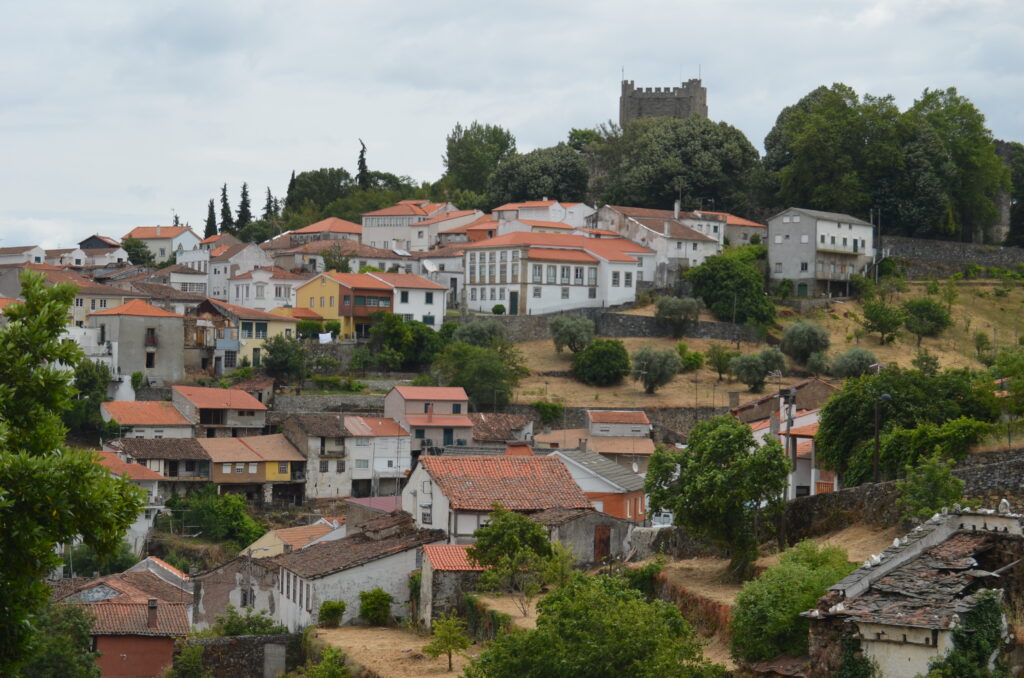
Let’s face it, exploring Bragança is an absolute must, even though it’s a destination often postponed due to perceived distance. From a distance, it miraculously comes closer, revealing the untapped tourist allure of the Municipality of Bragança, situated in the Northeast of Portugal. Here, I present a curated itinerary for your journey through Bragança, featuring notable attractions, recommended accommodations in and around Bragança, culinary landmarks in local restaurants, and an interactive map to ensure you don’t miss a beat during your visit.
This northern Portuguese municipality, nestled in Trás-os-Montes, played a pivotal role in safeguarding the Portuguese border, carrying a historically significant legacy in the nation’s formation. Various civilizations, including Celts, Romans, and Arabs, once occupied this land, and even neighboring Castile coveted this piece of Transmontana Cold Land. Its strategic importance has been acknowledged since 1187, earning a special charter from Portuguese monarchs, and in 1464, it achieved city status.
Bragança’s district forms part of the UNESCO-recognized Transboundary Biosphere Reserve of the Iberian Plateau. The region boasts a natural heritage of rare beauty and diversity, encompassing two natural parks within its boundaries: the lush mountain vegetation in Montesinho Natural Park and the majestic cliffs of the river canyon in the International Douro Natural Park. Additionally, the Terras de Cavaleiros Geopark showcases rock formations unique in the world, and a significant portion of the Regional Natural Park of the Tua Valley contributes to the area’s natural splendor.
Given these remarkable features, it’s no surprise that the latest tourism promotion campaign proudly declares, “Naturally Bragança.” Beyond being a mere phrase, “naturally” perfectly encapsulates this remote region where inhabitants maintain an intimate and respectful relationship with nature, viewing it as sustenance, shelter, and inspiration.
The reality is this: Bragança is much closer than anticipated and stands as a compelling destination for a getaway, a cultural excursion, or even an extended vacation.
How to Get There
Bragança stands as the capital of the northeasternmost district of Portugal, forming, along with Vila Real, the Trás-os-Montes region in the North of Portugal. Positioned along the border, this borderland district shares boundaries with Spain to the north and east, specifically with the provinces of Ourense, Zamora, and Salamanca.
For those journeying by car, it is the preferred means of reaching Bragança. The primary and swiftest routes into the city are the A4 and IP2. It takes less than 5 hours to cover the approximately 500 km between Lisbon and Bragança. This is attributed to Bragança’s well-connected road infrastructure. From Porto, the 200 km separating the two cities can be covered in just over 2 hours. Bragança also enjoys a strategic location in proximity to major Spanish cities such as Zamora, Salamanca, and Madrid.
Traveling by bus is another option, with daily services to Bragança departing from major Portuguese cities. Although the journey is lengthy and time-consuming, it offers an economical solution for solo travelers.
It’s worth noting that Bragança does not have a train connection.
A Bit of History
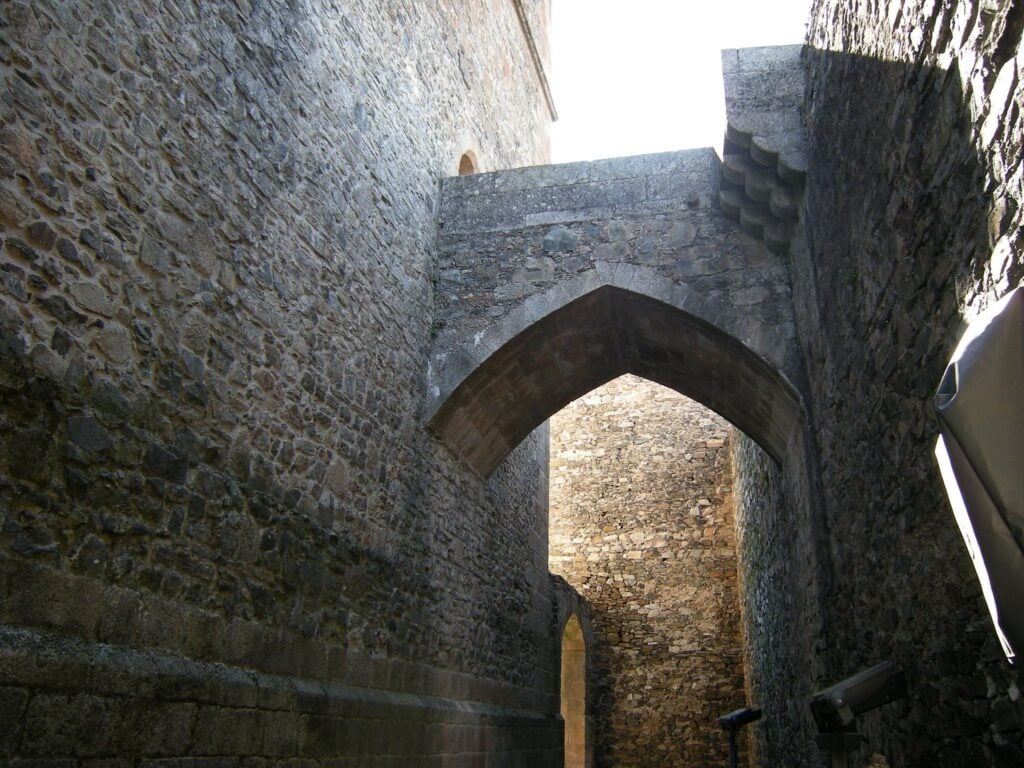
The history of Bragança traces back to ancient times, with evidence of human settlement in the region dating back to the pre-Roman era. The Celts, an ancient Indo-European people, were among the early inhabitants of this land. Their influence and cultural imprint have left a lasting legacy in the historical tapestry of Bragança. As different civilizations ebbed and flowed, the Celts played a crucial role in shaping the identity of the region.
With the rise of the Roman Empire, Bragança became part of the vast Roman territory. The Romans, known for their engineering prowess and strategic vision, recognized the geographical significance of Bragança. The region served as a crucial point in the defense of the northern frontier of the empire. The Roman presence left an indelible mark on the landscape, and remnants of their occupation can still be found in archaeological sites scattered throughout the area.
During the Moorish period in the Iberian Peninsula, Bragança witnessed cultural interactions and influences. The Moors, with their advanced knowledge in various fields, contributed to the development of agriculture, architecture, and arts in the region. The coexistence of different cultures during this time laid the foundation for the rich diversity that characterizes Bragança today.
As the Middle Ages unfolded, Bragança emerged as a key player in the defense of the Portuguese border against neighboring Castile. The strategic location of Bragança made it a focal point in the territorial disputes between the two kingdoms. In 1187, recognizing its strategic importance, Bragança was granted a special charter by Portuguese monarchs, solidifying its role as a fortified stronghold.
In 1464, Bragança reached a significant milestone when it was elevated to city status. This period marked a Renaissance influence, bringing advancements in arts, architecture, and governance. The city’s skyline began to evolve with the construction of notable landmarks, reflecting the prosperity and cultural vibrancy of Bragança during this era.
As Portugal entered the modern era, Bragança continued to evolve. In contemporary times, Bragança gained international recognition with its inclusion in the UNESCO-recognized Transboundary Biosphere Reserve of the Iberian Plateau. This acknowledgment underscores the city’s commitment to preserving its natural and cultural heritage.
When to Visit
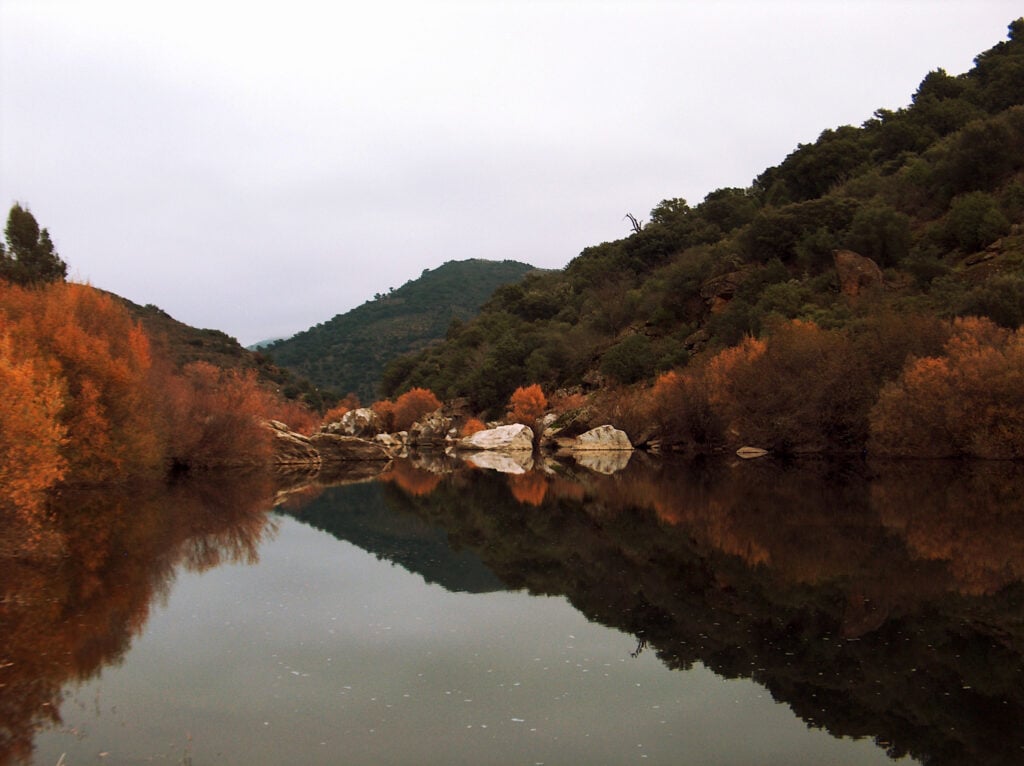
The optimal time to visit Bragança hinges on individual preferences and interests. If your aim is to delve into the rich historical and cultural heritage while savoring regional gastronomy, any season is perfect.
In the local Transmontano vernacular, the phrase “nine months of winter and three of hell” is commonly used to describe the climate of the Cold Lands and Transmontano plateaus prevailing in the Bragança district. It’s true that the region is renowned (and thrives) for its prolonged cold winters and short, hot summers.
Temperatures are milder in late spring and early autumn, making these times ideal for leisurely walks.
In spring, rain and thaw fill rivers, streams, and brooks that run wild. The rolling hills are adorned with floral hues dominated by cistus, broom, heather, and more. Almond trees in bloom, from March to April, create a rare spectacle, blanketing the territory in a white cloak, distinct from the winter snow that makes the city glisten.
Autumn brings the long-awaited freshness after hot summer days, which can be unforgiving here. The landscape is painted in enchanting warm autumnal tones: stubble fields turn rural landscapes to gold, plowed earth presents a complete palette of reddish hues, alder trees trace yellow lines along watercourses, oranges, browns, and Bordeaux dominate vineyards and adorn oaks, the golden foliage of beech trees…
Amidst the two distinct intense greens of chestnut trees, extending as far as the eye can see: the dark green of the foliage and the light green of chestnut husks. With the falling leaves, nature “weaves” plush carpets of multicolored foliage, inviting one to roll around.
Low temperatures don’t deter the locals, known as brigantinos , from celebrating the cycle of life and nature, a central theme in their most distinctive traditions and customs. In fact, a variety of popular and cultural events fill the Winter Festivals (usually from November to February/March), perhaps unknown to most Portuguese but lived more intensely by the locals.
Make a note of these dates in your calendar if you plan to visit Bragança during one of its most significant events:
Bragança Festival (August): The peak time to visit Bragança is in the summer when days are long and the events calendar is brimming with festivals and activities. The highlight is undoubtedly the Festas de Bragança, dedicated to the patron saint, Nossa Senhora das Graças, culminating on the municipal holiday of August 22.
December/January: From Saint Stephen’s Day to Epiphany, there is no lull in the villages of Bragança during the Festas dos Rapazes. After all, the Caretos don’t only hit the streets during Carnival. Each village has its ancient traditions to celebrate the winter solstice, whose origins are lost in memory but intertwine Celtic solstice rites, Zoelas customs, juvenile revelry, and Roman calends.
Burning of the Devil (Carnival): Carnival is always an excellent time to visit Bragança and its surroundings. On the Saturday before Carnival, the city streets fill with Caretos from neighboring villages, and even from León and Zamora. Adorned in their traditional costumes and reviving ancient customs, they run, jump, jingle, and play through the streets, culminating at Bragança Castle with the Burning of the Devil. In the following days, until Ash Wednesday, you can catch them in their respective villages.
Deer Rut Season (September and October): Okay, it’s not a festival, but it’s an experience, and nature enthusiasts appreciate the unique spectacle of the Red Deer Rut (mating season). With some luck, you can hear a dozen males from the red deer population of the Montesinho Natural Park bellowing loudly to attract females.
November: As the harvest season concludes, attention turns to numerous markets and fairs, chestnut-themed festivals and gatherings (a fundamental product in Trás-os-Montes), and mycological routes (for those eager to learn more about wild mushrooms).
What to See
Now it’s time to dive in and embark on an enchanting journey through Bragança, where history unfolds amidst architectural wonders, revealing the city’s rich tapestry. The Historical Center, a relatively compact area, beckons exploration on foot, offering three essential nuclei for first-time visitors: the Bragança Castle and Citadel, Museums Street, and Sé Square.
Bragança’s Historical Center
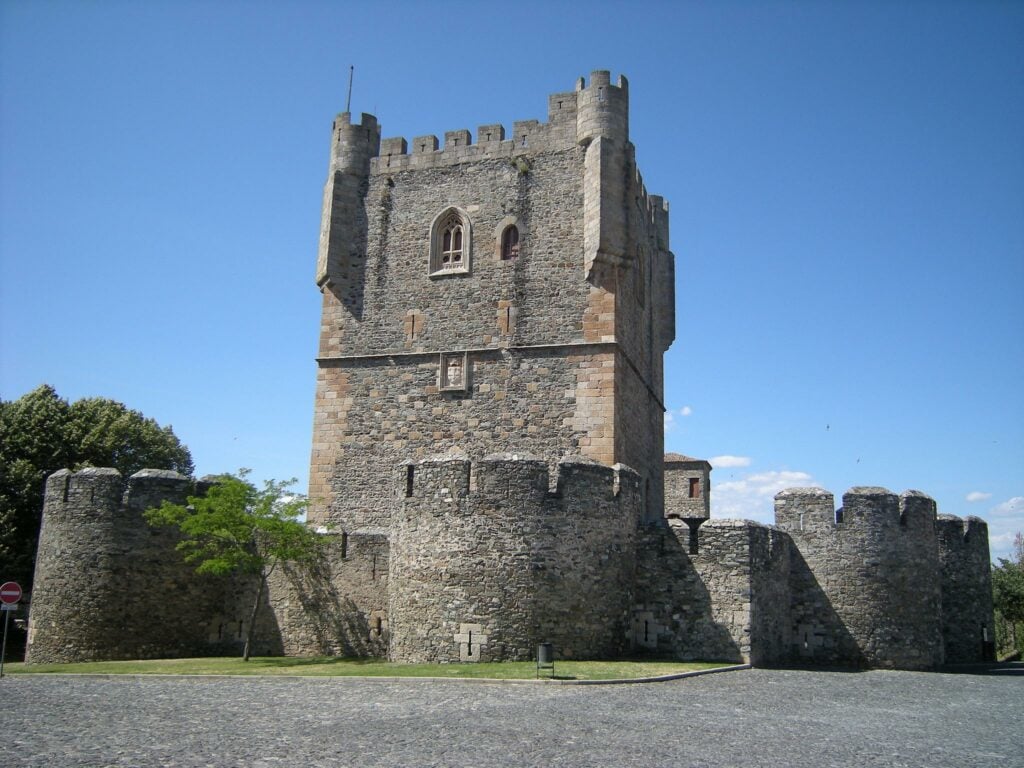
Bragança, a city with heart, symbolized by the embracing walls of Bragança Castle around its oldest and still thriving borough, the Citadel. Your journey begins here, at the elevated part of the city. Whether entering through the Sun Gate (east) or the Village Gate (west), the Castle Square is sure to leave you in awe. Bragança Castle, one of Portugal’s most beautifully preserved castles with stunning Gothic windows, stands tall. Explore the 15 th -century Keep, housing the distinguished Military Museum of Bragança. Immerse yourself in fantasy at the legendary Princess Tower and ascend one of the turrets for breathtaking views of Bragança and its surroundings.
Discover other must-see attractions within the Citadel, including the Church of Santa Maria (or Nossa Senhora do Sardão), the oldest originally Romanesque church in Bragança, now adorned with Baroque and Renaissance elements revealing astonishing three-dimensional paintings. Adjacent to it, find the enigmatic Domus Municipalis, a unique pentagonal Romanesque building, believed to be a meeting place for the “good men,” some of whom convened in secrecy.
Explore the Iberian Mask and Costume Museum within the Citadel, a captivating collection of traditional Caretos masks. Stroll along the castle walls, unraveling more charms of the Citadel, such as the medieval Pillory mounted on a boar, a zoomorphic representation of a carved granite sow, bearing witness to the city’s Celtic origins. Lose yourself in narrow, cobbled streets, ancient and full of character, lined with picturesque houses that seem to have forgotten the passage of time.
Outside the walls, take time to wander through the Castle Garden, and discover the Queen’s Fountain, and the Chapel of Our Lady of Health. Marvel at the aesthetic beauty of the Mudéjar ceiling in the Church of São Bento and the mannerist facade of the Convent and Church of São Francisco, significant on the pilgrims’ route to Santiago de Compostela, where recent discoveries unveiled medieval frescoes.
Museum Street
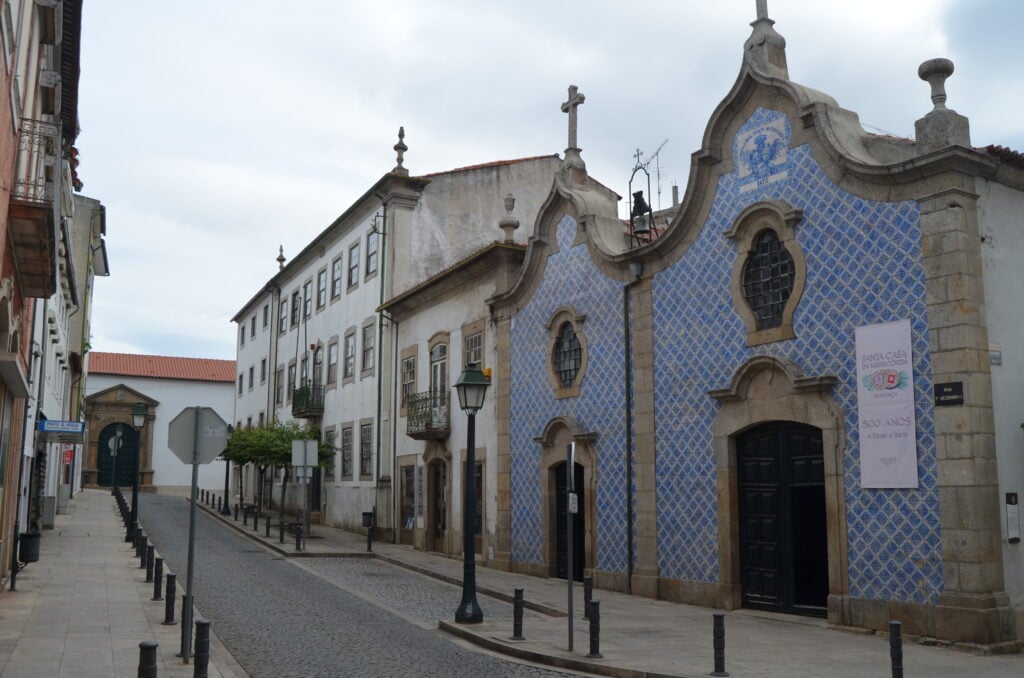
Continue your exploration, descending to Museum Street, officially Abílio Beça Street. In just 500 meters, encounter five noteworthy museums, attracting history, archaeology, ethnography, and art enthusiasts: the Abade de Baçal Museum, the Graça Morais Contemporary Art Center, the Georges Dussaud Photography Center, the Bragança Sephardic Memorial and Documentation Center, and the Northeast Transmontano Sephardic Culture Interpretation Center.
As you stroll down Museum Street, explore the Churches of São Vicente, Mercy, and Santa Clara in the former convent, where the patroness of Bragança, Our Lady of Grace, is venerated.
Main Square
No Bragança itinerary is complete without a visit to the Sé, in the main square, a spacious and airy square centered around a cross, presided over by the Old Cathedral of Bragança. Dating back to the 16th century, the Old Cathedral was initially intended as a convent for the Clarisse nuns. Eventually handed over to the Jesuits, it became one of the most prestigious colleges in the region. In 1764, the episcopal seat was transferred from Miranda do Douro to Bragança, and the convent complex and church, dedicated to Saint John the Baptist and the Holy Name of Jesus, became the diocesan cathedral. Set aside time to explore the church; it is well worth it!
The remaining architectural complex of the convent was renovated in 2004 by the municipality, transforming it into the Municipal Cultural Center Adriano Moreira, the Municipal Library, the Adriano Moreira Library, the Trás-os-Montes Academy of Letters, the Music Conservatory, exhibition halls, and a city memory space. Most cultural spaces are accessible through Camões Square, a vast square used for major city events and the location of the old market.
The Unseen Bragança
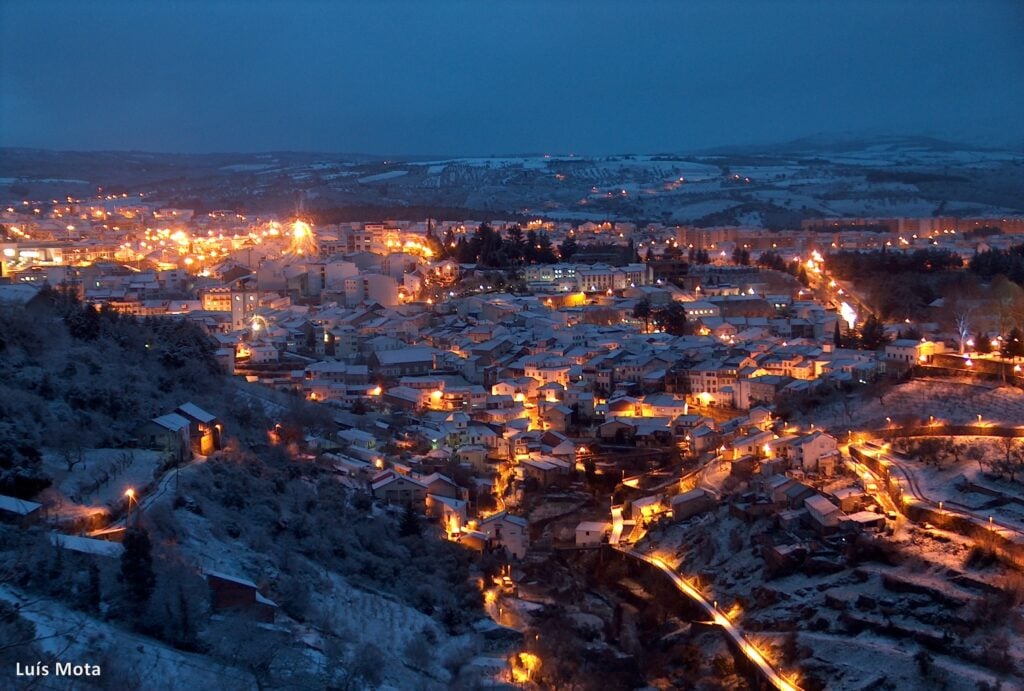
Bragança’s charm extends beyond its architectural heritage and historical and cultural landmarks. A visit to Bragança becomes truly fulfilling when leisurely strolling through its streets, alleys, and squares, appreciating the details and facades of old buildings—some humble, others opulent.
These wanderings unveil hidden gems like the Green Corridor, a sequence of boardwalks flanking the Fervença River (applauded for its riverbank restaurant scene) leading to the Bragança Science Center, Casa da Seda, the viewpoint of the Chapel of Our Lady of Pity, and the lush Urban Park.
In line with the city’s ecological consciousness, emphasizing green space beautification, there’s also a commitment to street art. Drawing inspiration from the region’s identity, Bragança is making its mark on the international street art map. From remarkable murals and installations by globally recognized artists like Bordalo II (whose “Chameleon,” “Genet,” and “Wild Boar” adorn the streets), to subtle decorative motifs with messages, Bragança is earning a spot in the global street art scene.
Challenge yourself to see Bragança with fresh eyes after exploring the vibrant heart of the city. Change your perspective and take in the marvelous views of the city, castle, walled citadel, and colorful houses from the São Bartolomeu Sanctuary Overlook. It’s the perfect vantage point to bid farewell to this “beautiful Transmontana ,” whose enchantment captivates like a spell, leaving a desire to return.
Around Bragança
Explore the wealth of the Transmontana region, where Bragança stands as a testament to secular honors and royal favor for its role in the nation’s construction. This journey goes beyond the city’s invaluable heritage, encompassing two additional treasures: the people of Bragança and the natural heritage.
Montesinho Natural Park
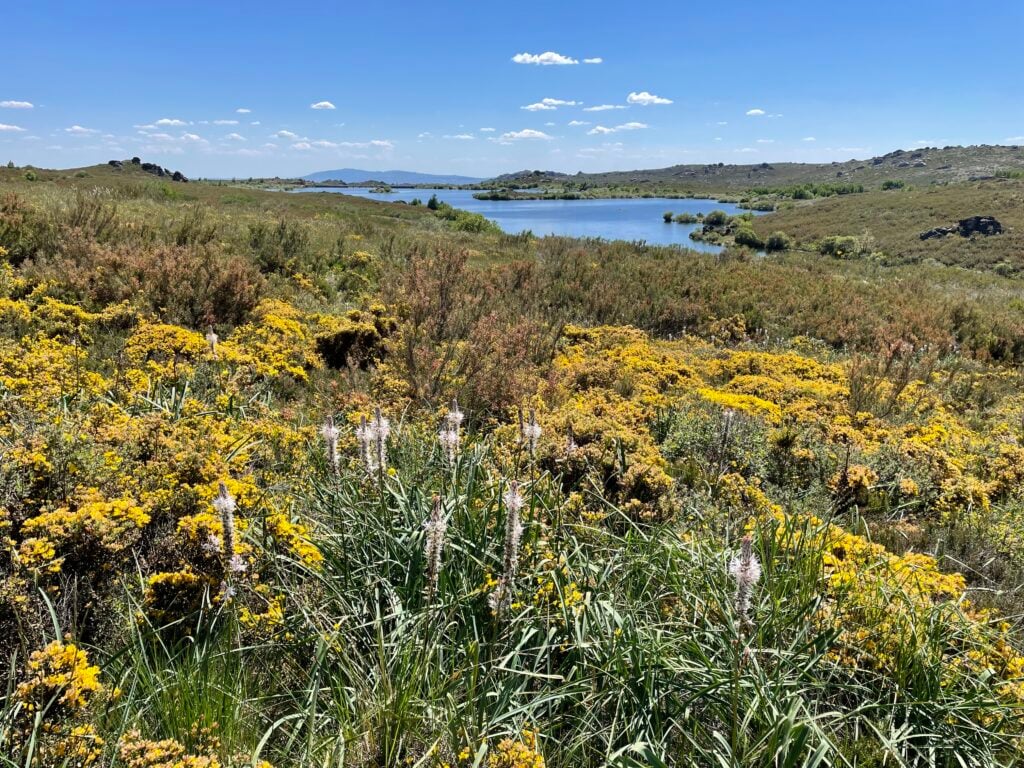
The lush green expanse of the undulating Montesinho Natural Park awaits just beyond Bragança’s gates. Enhance your Bragança itinerary by immersing yourself in pure, untouched, and wild nature. A significant portion of Portugal’s terrestrial fauna, including the Iberian Wolf and Red Deer, finds sanctuary here. September and October bring the fascinating (and spine-chilling) experience of hearing the Red Deer’s Roar, one of the planet’s unique mating calls. Montesinho’s beauty was even visited by a Cantabrian Brown Bear in 2019. Who knows, maybe the next visit will bring a friend to settle in Portugal.
The green palette adorning Montesinho’s mountains is dominated by oak groves, cork oak forests, and chestnut groves (Bragança is the largest chestnut producer in Portugal). The trail opportunities are virtually infinite and surprising. Idyllic waterfalls and river beaches provide refreshing spots after hikes. If walking isn’t your forte, embark on a 4×4 adventure to explore the natural sanctuary that is Montesinho Natural Park.
Rio de Onor
One of the 7 Wonders of Portugal Villages, Rio de Onor is a village literally traversed by the invisible line of the border with Spain and the river it shares its name with. Nestled in Montesinho Natural Park, the village seamlessly integrates into the landscape of this remote Trás-os-Montes, where its greatest heritage is its people. The rhythmic dialect of Rio de Onor still resonates from the flowery balconies of the typical shale houses. Twin sisters, Rio de Onor and Rihonor de Castilla, form a single community with fifty Portuguese and Spanish residents, maintaining the true spirit of communal life, akin to a family. Beautiful and captivating, Rio de Onor rightfully secures a place on our list of the most beautiful villages in Portugal.
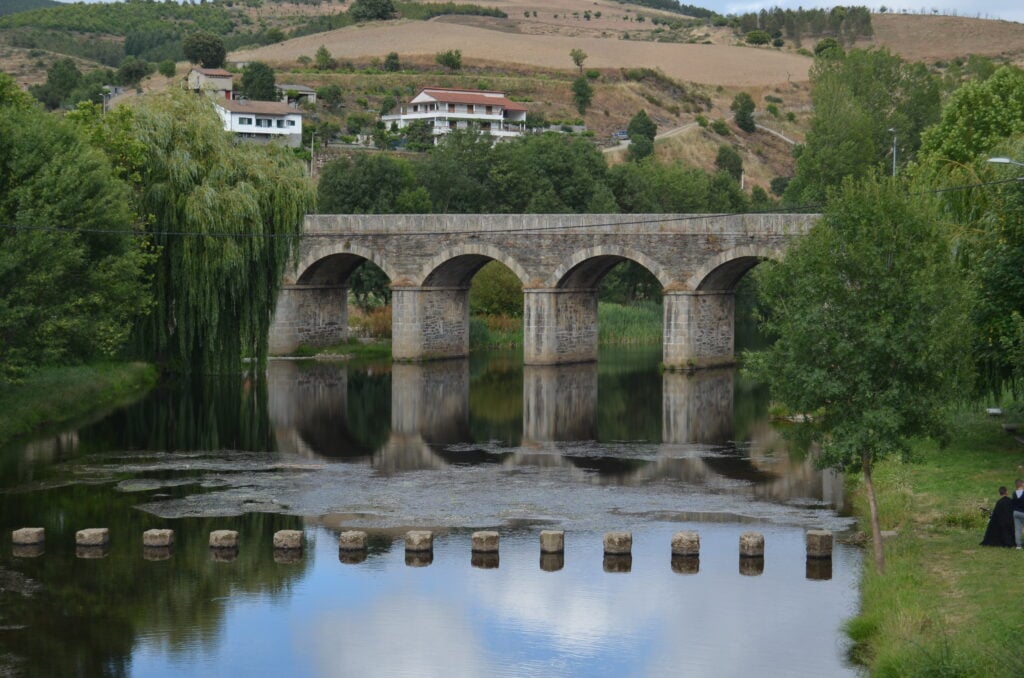
Gimonde is a must-stop village in any Bragança itinerary, renowned for its gastronomic delights. Beyond the excellence of Mirandese Steak and the quality of Porco Bísaro smoked products, there’s a rural charm that captivates everyone. This charm emanates from the typical shale houses, the towering church, life set to the rhythm of the countryside, and the rivers that traverse it—the Igrejas River and the Sabor River. With bridges crossing them—the old shale bridge, the new granite bridge, and stepping stones that we can’t resist hopping across (one day we might misjudge the distance and impulse and end up in the water).
Montesinho Village
The mountain village of Montesinho lends its name to the natural park in its heart. Invisible until the last moment, those arriving by road are surprised by a vibrant, colorful, beautiful, and lively shale village, especially when visitors fill the two squares in front of the village cafes. Recognizing its tourism potential, the village underwent revitalization, offering astonishing Rural Tourism accommodations for a village of this size—a perfect refuge from urban hustle and bustle.
Monastery of Castro de Avelãs
A mere 5 km west of Bragança lies what could be Portugal’s sole example of Mudéjar Romanesque architecture—the Monastery of Castro de Avelãs. The church’s brick masonry apse, likely predating the 12th century, still stands.
Passersby on the road would never suspect that this unassuming village harbors one of Portugal’s greatest treasures of religious architecture—not a church but a basilica. The only village basilica in Portugal belongs to the municipality of Bragança and more than deserves a visit. After marveling at the Basilica of Santo Cristo do Outeiro, wander through the village’s streets and squares, ascending to the hilltop where remnants of the Outeiro Castle, like an imperfect crown, still remain.
Where to Eat
From traditional dishes to innovative creations, these dining establishments promise a delightful experience for every palate.
Taberna do Javali
Nestled within the citadel of Bragança Castle, Taberna do Javali offers a refreshing and intriguing culinary experience. Whether you opt for tapas or a full meal, the enticing names on the menu are surpassed only by the flavorful dishes. Named after the wild boar, the restaurant crafts succulent boar steaks and burgers that stand out. While the wait time might test your patience, every dish is prepared on the spot, ensuring a slow but rewarding service. Take your time, savor the moment, and indulge in the innovative offerings that continually emerge from the kitchen.
Specialties:
- Crispy chicken strips with spicy sauce
- Ham with tomatoes
- Chouriça sausage
- Game burger
- Wild boar steak sandwich
- Wild boar loin
- Transmontana salad
- Ham and avocado risotto
- Mixed sweets
- Chestnut tart
- Chickpea tart
- Lemon mousse
- White chocolate
Restaurante O Careto
Situated in the heart of Varge village, Restaurante O Careto pays homage to traditional Transmontana gastronomy in a meticulously crafted rustic setting. Amidst the acclaimed Mirandese steaks and chops, discover age-old flavors that almost slipped through time. Indulge in generous servings of grilled cod with mashed potatoes, and a surprising open-grilled conger eel. Delight in tastes of yesteryear, such as the homemade Potted Iron Pot Rooster.
- Cheese, ham, and chouriço appetizers
- Grilled cod with mashed potatoes
- Open-grilled conger eel
- Homemade Potted Iron Pot Rooster (available by reservation)
- Cheese with pumpkin jam
- Cheese with cherry jam
- Egg custard
Restaurante O Abel
A must-stop in the village of Gimonde, Restaurante O Abel beckons with over thirty years of dedication to authentic regional flavors and traditional dishes. From a humble tapas joint, it transformed into a renowned restaurant, witnessing its space expand as the clientele multiplied. Despite the transition from “tripe with beans in a bowl” to the finest grilled Transmontana meats, the family atmosphere has remained unchanged. Abel’s Steak has no rival, and the secret lies in the sauce infused with local aromatic herbs, bringing the essence of the region to the palate. Arrive hungry and early, as reservations are not accepted, and you might have to wait your turn.
- Regional smoked sausage, ham, and grilled chouriço
- Sheep cheese
- Abel’s Steak
- Rodeão (beef cut)
- Picantone (grilled chicken)
- Grilled cod with olive oil
- Chestnut pudding
- Cheese pudding
- Chocolate mousse
- Caramelized pumpkin
Solar Bragançano
Reserved in advance yet unreserved in the art of hospitality and culinary excellence, Solar Bragançano, located in Praça da Sé, is an embodiment of nobility. The true aristocracy lies not only in the garden, salons, fine woods, and decor but in the kitchen, elevating game, meat, and fish dishes to unparalleled heights. The menu, a seductive poem to the palate, features carefully selected wines and a culinary experience that is nothing short of captivating.
- Regional smoked sausage
- Fried trout
- Ham, cheeses
- Trout with ham sauce
- Solar’s grilled cod
- Solar’s Veal steak
- Mirandese Veal Sirloin
- Montesinho Kid
- Canhono Mirandês (lamb)
- Partridge, Pheasant, Wild boar, Deer, Hare
- Golden pumpkin
- Burnt custard
- Cherry soup
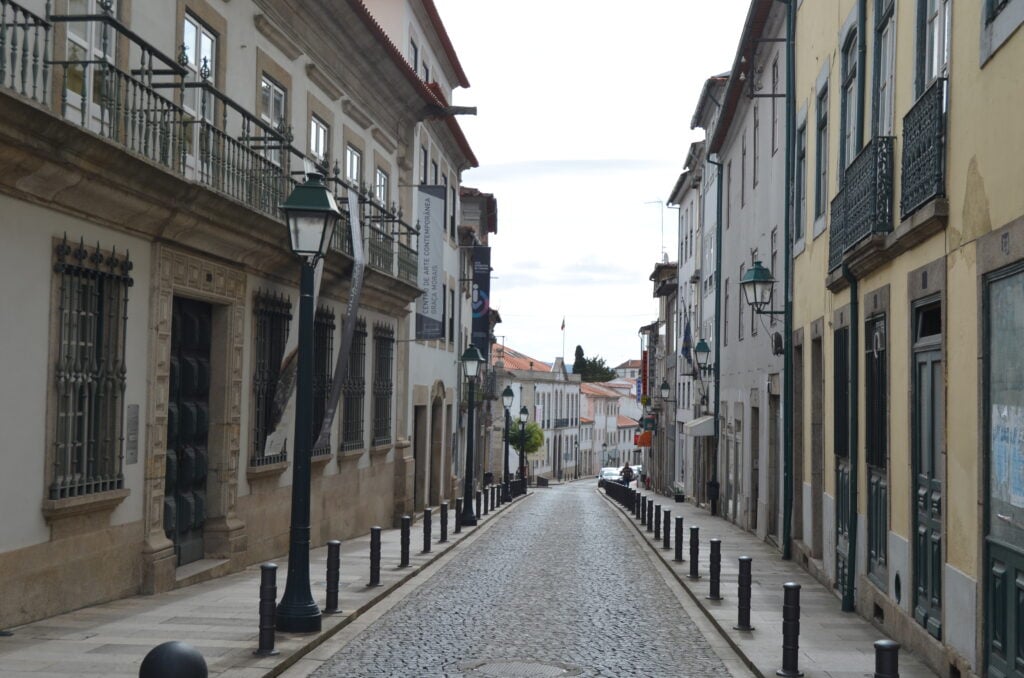
As you can see, the journey through Bragança unfolds as a captivating exploration of history, culture, and natural wonders. This northeastern Portuguese gem, with its rich historical tapestry dating back to ancient civilizations, stands as a testament to the resilience and strategic significance of the nation’s formation.
As you wander through the Historical Center of Bragança, the heart of this enchanting city, we are transported through time. The well-preserved Bragança Castle and Citadel, the intriguing Museums Street, and the serene Sé Square offer a glimpse into the diverse layers of Bragança’s past. The Unseen Bragança reveals hidden gems, from the Green Corridor along the Fervença River to the burgeoning street art scene, adding a contemporary flair to the city’s charm.
Venturing beyond Bragança’s boundaries, you’ll discover Montesinho Natural Park, a haven of biodiversity and tranquility. The villages of Rio de Onor, Gimonde, and Montesinho each contribute a unique flavor to the region, blending natural beauty with cultural richness. Culinary delights further enhance the Bragança experience, from traditional dishes to innovative creations, these establishments reflect the region’s gastronomic prowess.
Bragança is not just a destination; it’s an immersion into a world where history whispers through the cobblestone streets, nature beckons with open arms, and the warmth of the people adds a touch of genuine hospitality. Whether you come for the festivals, the Red Deer Rut, or the winter celebrations, Bragança invites you to discover its allure—”Naturally Bragança.” So, whether it’s a brief getaway, a cultural excursion, or an extended vacation, Bragança awaits, closer and more captivating than one might imagine.
Receive the latest news, travel information, stories, offers and more!
Join our FB group Portugal Travel & Living for all things Portugal and news updates
Related articles, time required to get portuguese citizenship reduced by 12-18 months, spain vs portugal: which golden visa program is best, life after nhr: latest 2024 update, leave a reply cancel reply.
Save my name, email, and website in this browser for the next time I comment.
Most Popular
Latest articles, a sharp increase of the tobacco tax in portugal can lead to the growth of illegal consumption, the portuguese tax burden dropped 0.2% in 2023, 7 events to attend in lisbon to commemorate 50 years of april 25th, national museum of ancient art, the bordalo pinheiro museum – lisbon’s artistic gem.
Portugal.com is an independently owned and operated tourism portal about Portugal. All information should be considered informational and for entertainment purposes. Some content may be promotional and/or have affiliate relationships where Portugal.com earns revenue promoting the content.
Want to advertise on Portugal.com? Would you like to write for us? Something else? Please feel free to Contact Us!
© Portugal.com
- Privacy Policy

Subscribe to our newsletter below to get the latest news, reviews, info and more!
Thanks, I’m not interested
Explore Braganca

Plan Your Trip to Braganca: Best of Braganca Tourism
Essential braganca.

Braganca Is Great For

Eat & drink

Art & history

TheBiteTour.com
The Most Sought-after Tourist Destinations!
15 Must-See Attractions In Bragança, Portugal: A Local’S Guide!
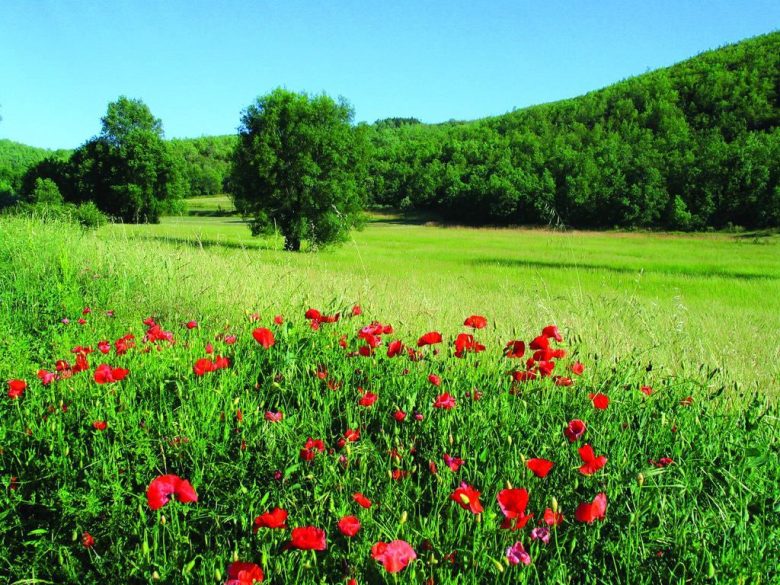
15 Must-See Attractions In Eger, Hungary: A Guide To The City’S Best Experiences!
Welcome to Bragança, Portugal – a city full of history, culture, and stunning attractions! As a local, I’m here to share with you my top 15 must-see attractions in this beautiful city. From ancient castles to breathtaking views, you won’t want to miss out on these amazing sites!

Check out these amazing hotel deals!
1. Castle of Bragança
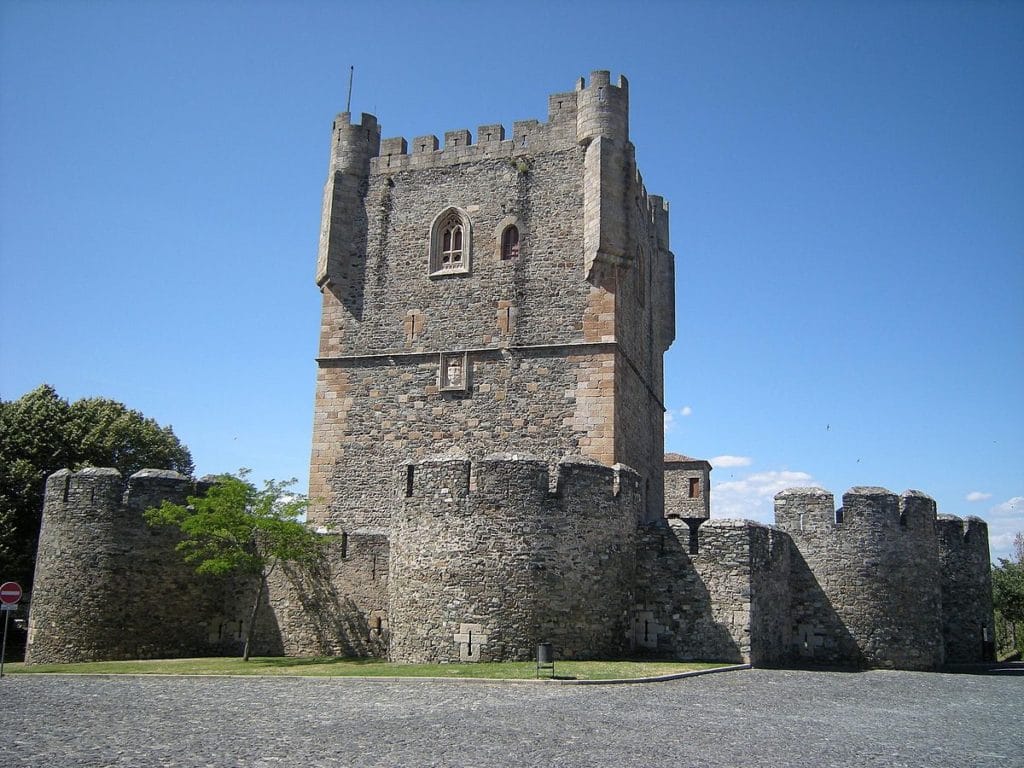
If you’re looking for a truly unique and unforgettable experience, then the Castle of Bragança in Portugal is the perfect destination for you! With its stunning architecture, rich history, and breathtaking views, the Castle of Bragança is sure to leave you with lasting memories. From its ancient walls to its lush gardens, the Castle of Bragança is a must-see for any traveler looking to explore the beauty of Portugal.
Best time to visit:
The best time to visit the Castle of Bragança in Portugal is from June to August when the weather is warm and dry.
How to reach:
Local tips:.
- Visit the Castle of Bragança to experience the history and culture of Portugal.
- Take a guided tour of the castle to learn more about its history and architecture.
- Explore the nearby town of Bragança to experience the local culture and cuisine.
- Visit the nearby churches and monasteries to learn more about the religious history of the region.
- Take a hike in the nearby mountains to enjoy the stunning views of the region.
- Visit the nearby lakes and rivers to enjoy the natural beauty of the area.
- Visit the nearby museums and galleries to learn more about the art and culture of the region.
- Take a day trip to the nearby cities of Porto and Coimbra to experience the vibrant culture of Portugal.
2. Domus Municipalis
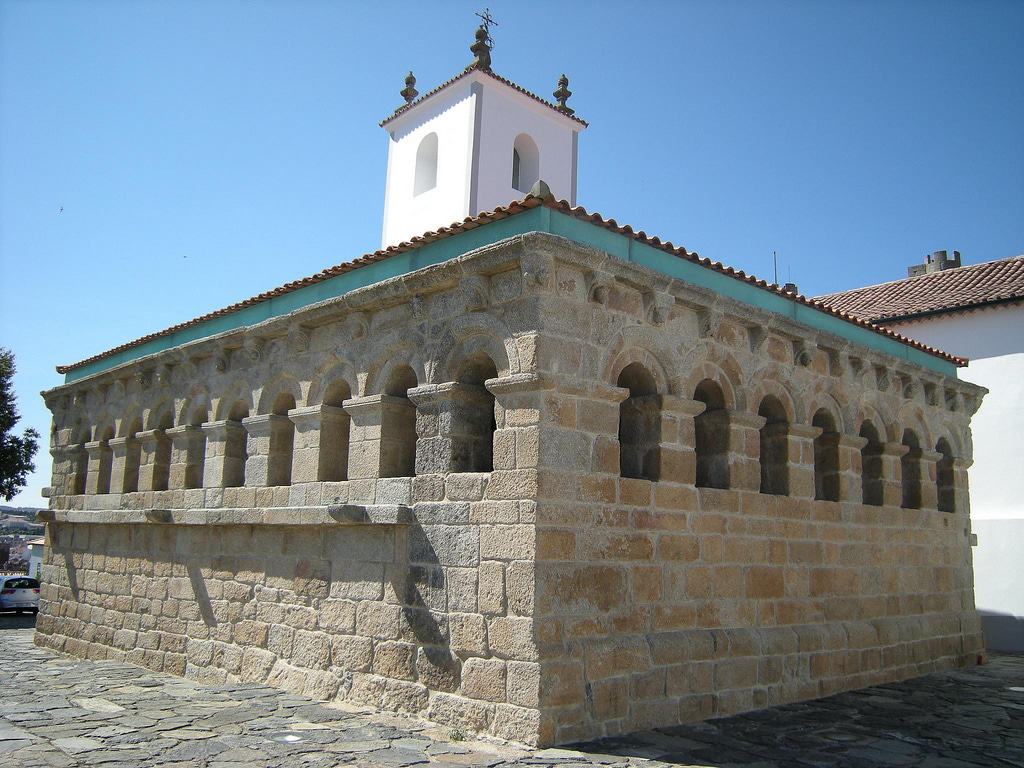
Domus Municipalis in Portugal is a must-see destination for any traveler looking to experience the beauty and culture of the country. From its stunning architecture to its vibrant culture, Domus Municipalis is a place that will leave you with lasting memories. Whether you’re looking to explore the city’s history, take in the breathtaking views, or simply relax and enjoy the local cuisine, Domus Municipalis has something for everyone. So come and experience the beauty of Portugal at Domus Municipalis!
The best time to visit Domus Municipalis in Portugal is from June to August when the weather is warm and dry.
- Visit the Domus Municipalis during the day to get the best view of the city.
- Take a guided tour to learn more about the history of the building.
- Be sure to take plenty of pictures to capture the beauty of the architecture.
- Visit the nearby cafes and restaurants to sample the local cuisine.
- Take a stroll through the nearby parks and gardens to enjoy the scenery.
- Explore the nearby shops and markets to find unique souvenirs.
- Be sure to check out the nearby museums and galleries to learn more about the city’s culture.
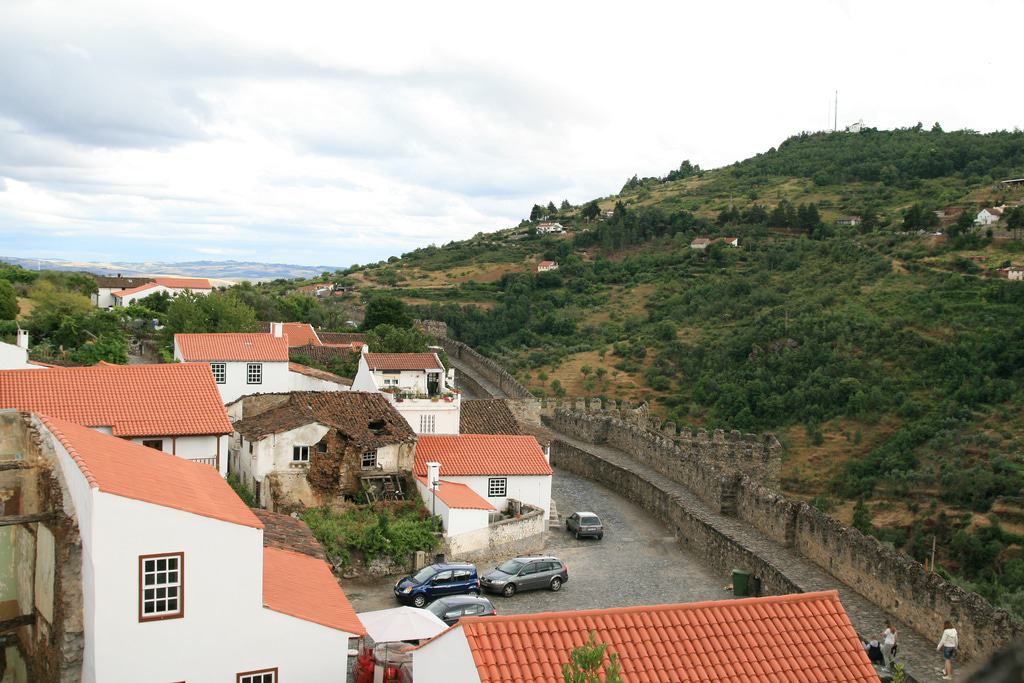
If you’re looking for a unique and unforgettable experience, then look no further than Citadel in Portugal! With its stunning views, rich history, and vibrant culture, Citadel is the perfect destination for anyone looking to explore the beauty of Portugal. From its breathtaking architecture to its delicious cuisine, Citadel is sure to leave you with lasting memories. So come and explore the wonders of Citadel in Portugal!
The best time to visit Citadel in Portugal is from May to August when the weather is warm and dry.
- Visit the Citadel of Elvas, a UNESCO World Heritage Site, for a unique view of the city.
- Explore the historic city center, with its cobblestone streets and old buildings.
- Visit the nearby town of Estremoz, known for its marble quarries.
- Take a day trip to the nearby city of Evora, with its Roman ruins and medieval architecture.
- Visit the nearby town of Monsaraz, with its stunning views of the Alentejo region.
- Take a boat trip along the Guadiana River, which runs through the city.
- Visit the nearby town of Vila Viçosa, known for its beautiful palaces and gardens.
- Explore the nearby Serra de São Mamede Natural Park, with its stunning views of the countryside.
4. Museu do Abade de Baçal
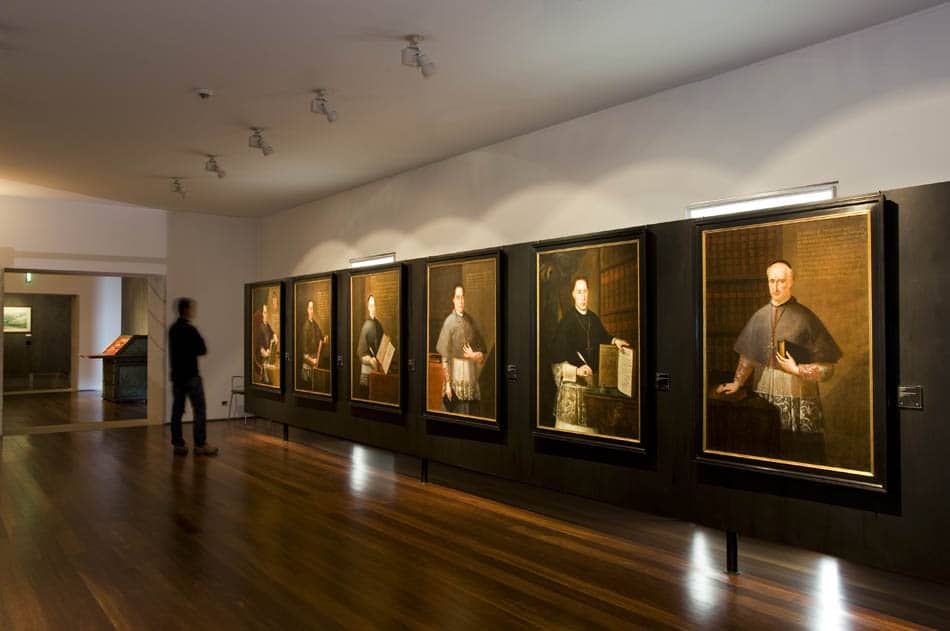
If you’re looking for a unique and unforgettable experience, then a visit to the Museu do Abade de Baçal in Portugal is a must! This museum is home to a wealth of historical artifacts, from ancient manuscripts to archaeological finds, that tell the story of the region’s rich cultural heritage. With its stunning architecture and beautiful gardens, the museum is a great place to explore and learn about the past. So come and explore the Museu do Abade de Baçal and discover the secrets of Portugal’s past!
Best time to visit Museu do Abade de Baçal in Portugal is from May to September when the weather is warm and dry.
- Visit the museum during the day, as it is closed at night.
- Be sure to wear comfortable shoes, as the museum is quite large.
- Bring a camera to take pictures of the museum’s many artifacts.
- Be sure to check out the museum’s café for a snack or light meal.
- Take advantage of the museum’s audio guide to learn more about the exhibits.
- Be sure to check out the museum’s gift shop for souvenirs.
5. Sé Velha de Bragança
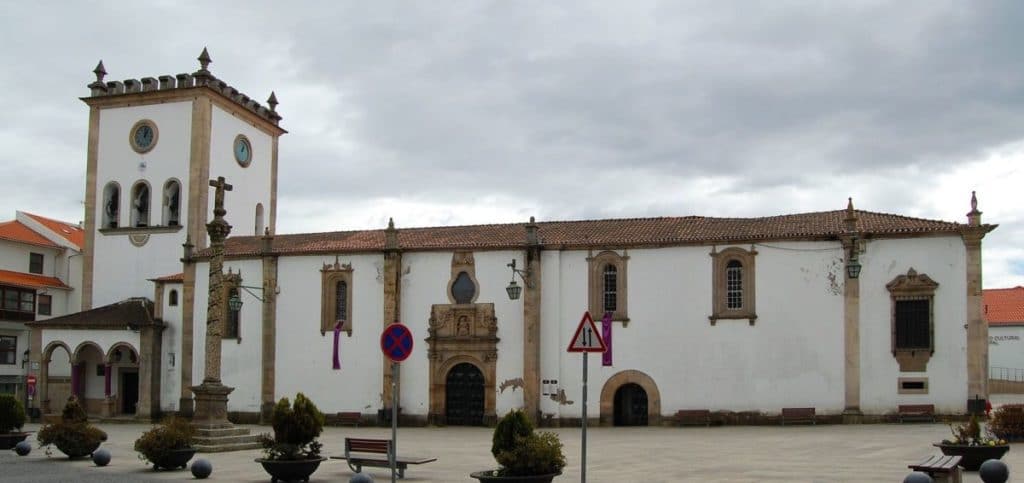
Sé Velha de Bragança is a hidden gem in Portugal, offering a unique blend of history, culture, and natural beauty. From its ancient castle walls to its stunning mountain views, this charming town is the perfect destination for anyone looking to explore the beauty of Portugal. With its cobblestone streets, quaint cafes, and vibrant nightlife, Sé Velha de Bragança is sure to provide an unforgettable experience.
- Visit the local market to get a taste of the local culture and cuisine.
- Take a stroll through the old town and admire the architecture.
- Visit the local churches and monasteries to learn about the history of the area.
- Explore the nearby countryside and take in the stunning views.
- Visit the local wineries and sample some of the local wines.
- Take a boat ride along the Douro River and enjoy the scenery.
- Visit the nearby towns and villages to experience the local culture.
- Go hiking in the nearby mountains and enjoy the fresh air.
- Visit the local museums and galleries to learn more about the area.
- Go fishing in the nearby rivers and lakes and enjoy the tranquility.
6. Museu Militar De Bragança
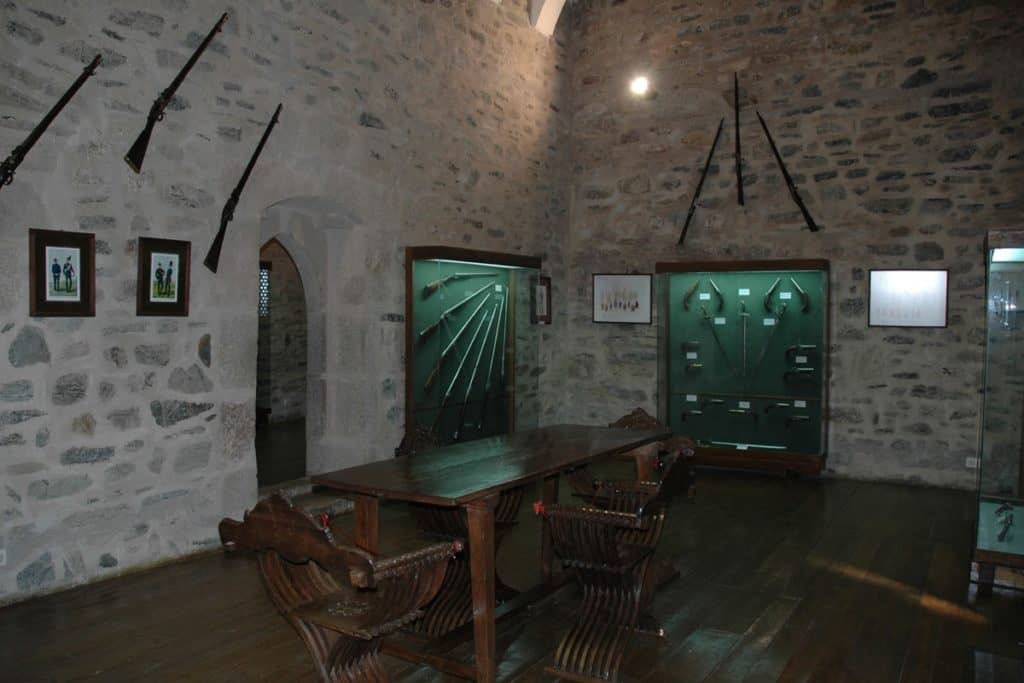
If you’re looking for a unique and educational experience, then the Museu Militar De Bragança in Portugal is the perfect place for you! With its rich history and fascinating displays, this museum offers a captivating insight into the military history of Portugal. From ancient artifacts to modern-day weapons, you’ll be sure to find something that will pique your interest. So come and explore the Museu Militar De Bragança and discover the fascinating stories behind the artifacts that have shaped Portugal’s military history.
The best time to visit Museu Militar De Bragança in Portugal is from May to September when the weather is warm and dry.
- Visit the museum during the weekdays to avoid the crowds.
- Be sure to wear comfortable shoes as the museum is quite large.
- Bring a camera to capture the amazing artifacts and displays.
- Be sure to check out the gift shop for souvenirs.
- Take advantage of the audio tour to learn more about the museum.
- Be sure to check the museum’s website for special events and activities.
7. Igreja Santa Maria
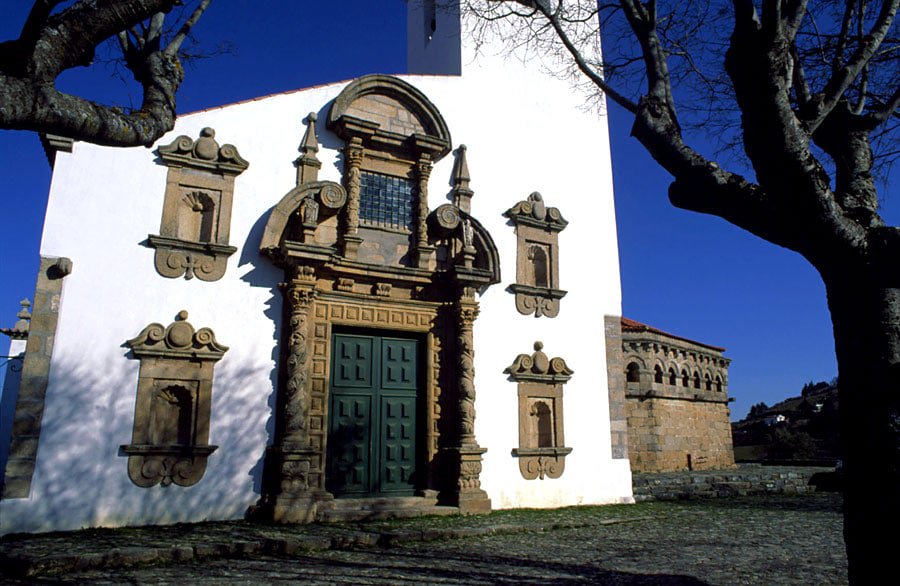
If you’re looking for a truly unique and awe-inspiring experience, then a visit to Igreja Santa Maria in Portugal is a must! This stunning church is a beautiful example of Portuguese architecture, with its intricate stone carvings and stunning stained glass windows. Not only is it a stunning sight to behold, but it also has a rich history and is a great place to learn about the culture and traditions of Portugal. So come and explore Igreja Santa Maria and be amazed by its beauty!
Best time to visit Igreja Santa Maria in Portugal is from July to September when the weather is warm and dry.
- Visit the Igreja Santa Maria during the day to get the best view of the church.
- Be sure to dress appropriately when visiting the church.
- Take time to explore the surrounding area and take in the local culture.
- Be sure to take pictures of the church and the surrounding area.
- Be respectful of the church and its grounds.
- Be sure to check out the local restaurants and cafes in the area.
- Be sure to check out the local shops and markets in the area.
- Be sure to check out the local attractions in the area.
- Be sure to check out the local festivals and events in the area.
8. Igreja de Castro de Avelãs
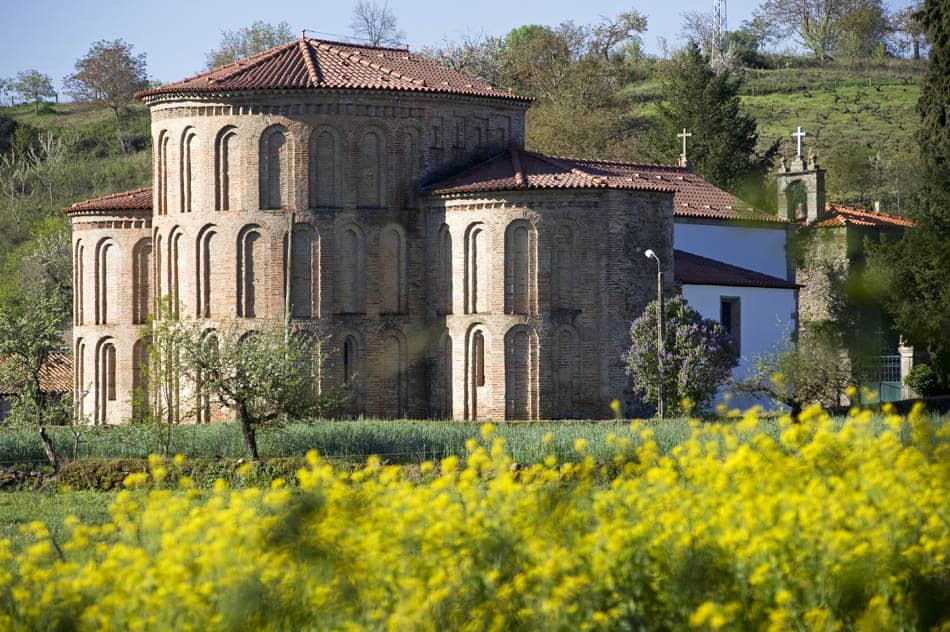
If you’re looking for a unique and breathtaking experience, then a visit to Igreja de Castro de Avelãs in Portugal is a must! This stunning church is nestled in the rolling hills of the Minho region and is a stunning example of Romanesque architecture. With its intricate carvings and beautiful stained glass windows, it’s a sight to behold. Plus, the surrounding area is full of lush greenery and stunning views, making it the perfect place to relax and take in the beauty of Portugal.
The best time to visit Igreja de Castro de Avelãs in Portugal is from July to September when the weather is warm and wet.
- Visit the Igreja de Castro de Avelãs during the day to get the best views of the church.
- Be sure to take plenty of pictures to remember your visit.
9. Centro de Arte Contemporânea Graça Morais
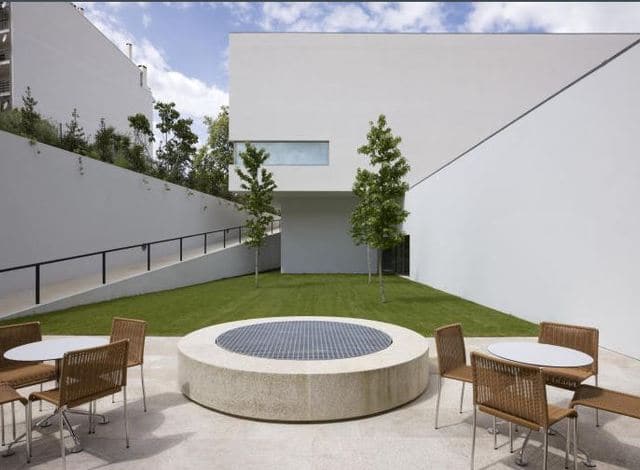
If you’re looking for a unique and inspiring experience, then a visit to the Centro de Arte Contemporânea Graça Morais in Portugal is a must! This contemporary art center is a hub of creativity and innovation, offering a wide range of exhibitions, workshops, and events that will leave you feeling inspired and energized. From the stunning architecture to the thought-provoking artwork, the Centro de Arte Contemporânea Graça Morais is sure to be an unforgettable experience.
Best time to visit Centro de Arte Contemporânea Graça Morais in Portugal is from July to September when the weather is warm and dry.
- Check the museum’s website for special events and exhibitions.
- Bring a camera to take pictures of the artwork.
- Take advantage of the free audio guide to learn more about the artwork.
- Take a break and enjoy a snack or drink at the café.
10. Centro Ciência Viva de Bragança
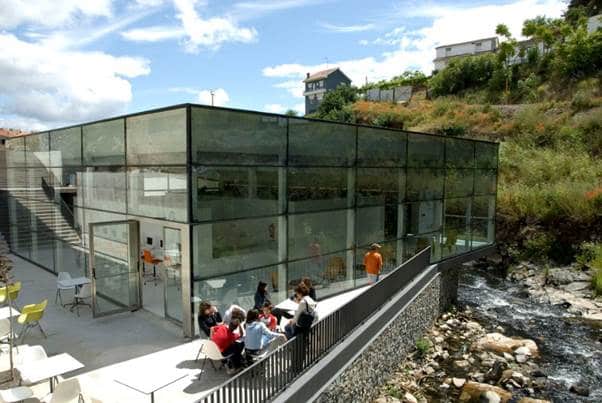
If you’re looking for a unique and educational experience, then the Centro Ciência Viva de Bragança in Portugal is the perfect place for you! With interactive exhibits, engaging activities, and a variety of educational programs, this science center is sure to provide an unforgettable experience for all ages. Come explore the wonders of science and technology at the Centro Ciência Viva de Bragança!
Best time to visit Centro Ciência Viva de Bragança is from May to September when the weather is warm and dry.
- Visit the Centro Ciência Viva de Bragança to explore the interactive exhibits and learn about the local history and culture.
- Take a guided tour of the museum to get a better understanding of the exhibits.
- Visit the nearby attractions such as the Bragança Castle and the Bragança Cathedral.
- Explore the local cuisine and try some of the traditional dishes.
- Take a stroll through the city and explore the local shops and markets.
- Visit the nearby parks and nature reserves to enjoy the natural beauty of the region.
- Take part in some of the local festivals and events to experience the culture and traditions of the area.
11. Montesinho Natural Park
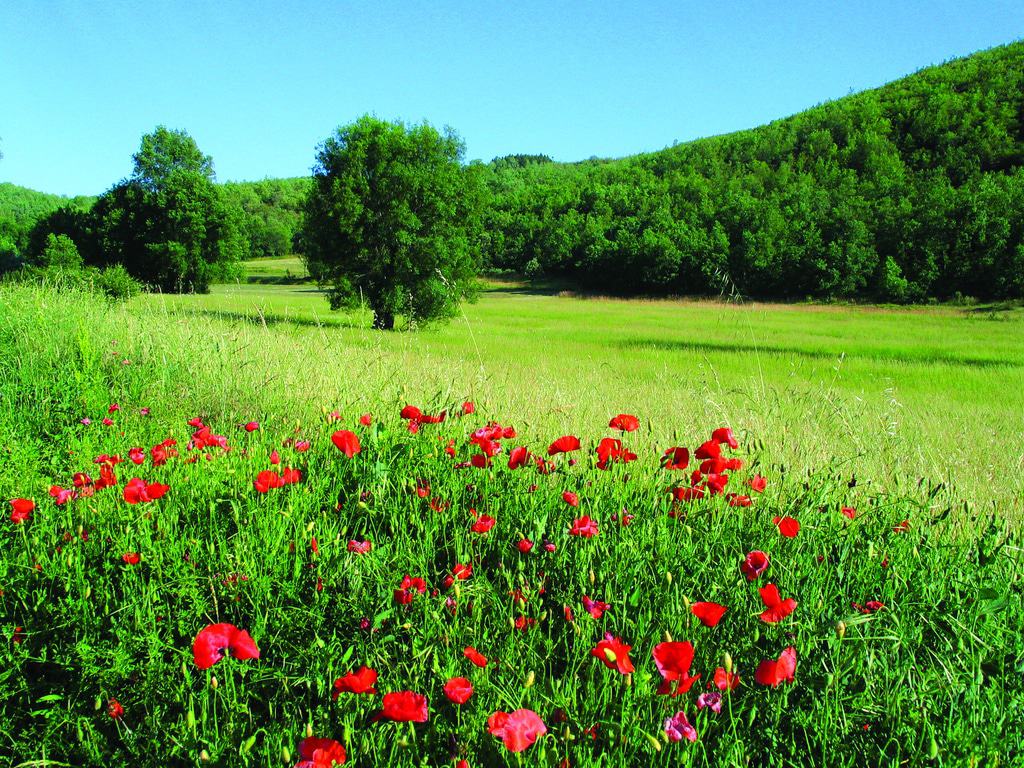
Montesinho Natural Park in Portugal is a hidden gem of nature, offering breathtaking views, unique wildlife, and a peaceful atmosphere. Whether you’re looking for a relaxing getaway or an adventure-filled holiday, Montesinho Natural Park has something for everyone. From its lush forests and rolling hills to its crystal-clear rivers and stunning waterfalls, this park is a must-visit destination for any nature lover. So come explore the beauty of Montesinho Natural Park and experience the wonders of Portugal!
Best time to visit Montesinho Natural Park in Portugal is from May to September when the weather is warm and dry.
- Visit the Montesinho Natural Park in the spring or summer months when the weather is warmer and the days are longer.
- Bring plenty of water and snacks as there are no restaurants or shops in the park.
- Wear comfortable shoes and clothing as the terrain can be uneven and rocky.
- Be aware of the local wildlife and take precautions to avoid any dangerous encounters.
- Bring a camera to capture the stunning views and landscapes.
- Be respectful of the local culture and customs.
- Be sure to follow all posted signs and regulations.
12. Aldeia de Montesinho
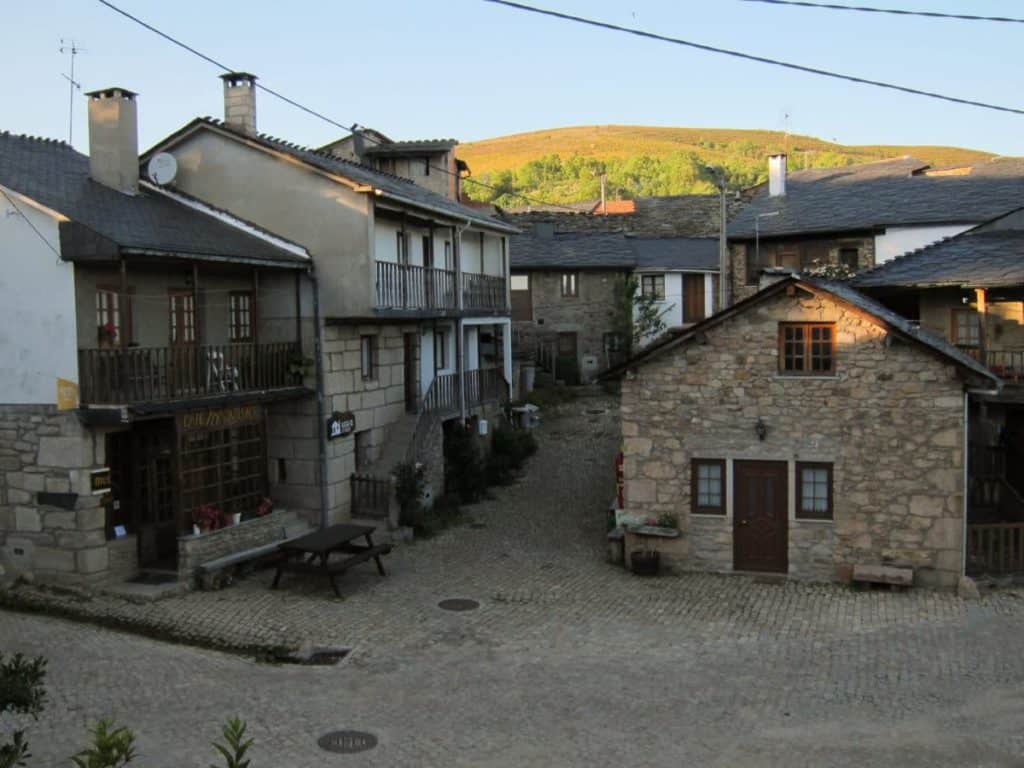
Aldeia de Montesinho is a hidden gem in Portugal, offering a unique and unforgettable experience. From its stunning landscapes to its rich culture and history, this small village is the perfect destination for anyone looking to explore the beauty of Portugal. With its breathtaking views, delicious cuisine, and friendly locals, Aldeia de Montesinho is sure to be an unforgettable experience.
The best time to visit Aldeia de Montesinho in Portugal is from May to September when the weather is warm and dry.
- Visit the Aldeia de Montesinho Natural Park for a unique experience of nature.
- Explore the traditional villages and their unique architecture.
- Visit the local markets to buy local produce and souvenirs.
- Take a hike in the mountains and enjoy the stunning views.
- Go fishing in the rivers and lakes for a unique experience.
- Visit the local churches and monasteries to learn about the history and culture.
- Go on a boat ride on the Douro River and enjoy the scenery.
- Visit the local restaurants and try some of the traditional dishes.
- Go on a hot air balloon ride for a unique view of the area.
13. Rio de Onor
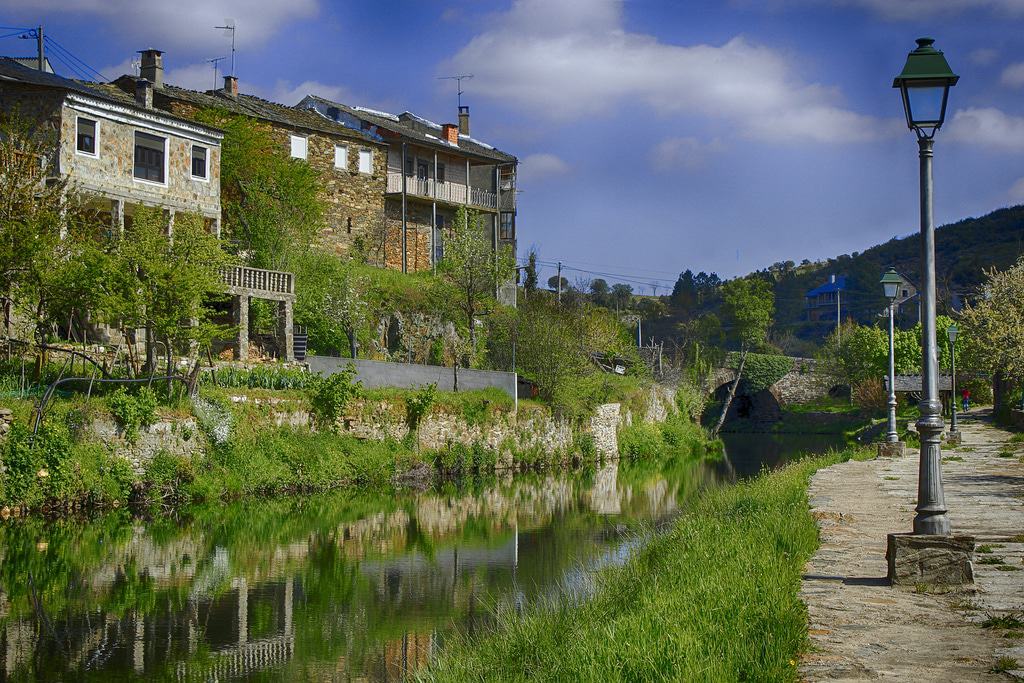
Rio de Onor is a hidden gem in Portugal, offering a unique blend of culture, history, and natural beauty. From its stunning beaches to its vibrant nightlife, Rio de Onor is the perfect destination for anyone looking for an unforgettable experience. Whether you’re looking for a relaxing getaway or an adventure-filled holiday, Rio de Onor has something for everyone. So come explore this beautiful city and discover why it’s one of Portugal’s best-kept secrets!
The best time to visit Rio de Onor is from May to September when the weather is warm and wet.
- Visit the Rio de Onor Castle, a 16th century castle located in the center of the village.
- Take a stroll through the village and admire the traditional architecture.
- Visit the local church, Igreja de Nossa Senhora da Assunção, which dates back to the 16th century.
- Explore the nearby Serra da Freita mountain range, which offers stunning views of the surrounding countryside.
- Visit the nearby town of Vila Nova de Cerveira, which is known for its art galleries and museums.
- Take a boat ride on the Rio Minho, which is the longest river in Portugal.
- Visit the nearby beaches of Vila Praia de Âncora and Moledo, which offer stunning views of the Atlantic Ocean.
- Sample the local cuisine, which includes dishes such as bacalhau (salt cod) and caldo verde (green soup).
- Visit the nearby towns of Valença and Monção, which are known for their wine production.
14. Albufeira do Azibo
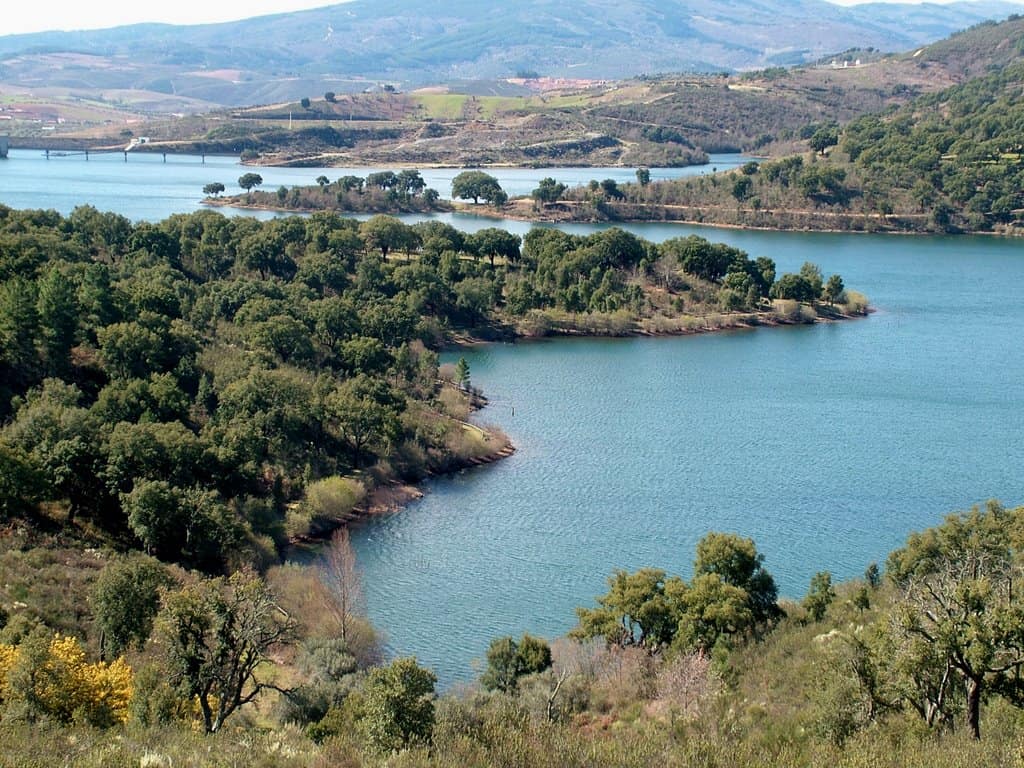
Albufeira do Azibo is a hidden gem in Portugal, offering a unique blend of stunning natural beauty, vibrant culture, and exciting activities. From its breathtaking beaches to its vibrant nightlife, there’s something for everyone in this charming coastal town. Whether you’re looking for a relaxing getaway or an adventure-filled holiday, Albufeira do Azibo is the perfect destination for your next vacation.
- Visit the local markets to get a taste of the local culture and cuisine.
- Take a boat tour of the Ria de Aveiro lagoon to see the stunning scenery.
- Explore the nearby beaches and take a dip in the Atlantic Ocean.
- Visit the nearby towns of Vila Nova de Gaia and Porto for a day trip.
- Visit the nearby historical sites such as the Castle of Santa Maria da Feira.
- Take a hike in the nearby Serra da Estrela mountain range.
- Visit the nearby city of Coimbra to explore its rich history and culture.
- Visit the nearby city of Braga to explore its stunning architecture.
- Visit the nearby city of Guimarães to explore its medieval streets.
- Visit the nearby city of Viseu to explore its stunning landscapes.
15. Local Cuisine
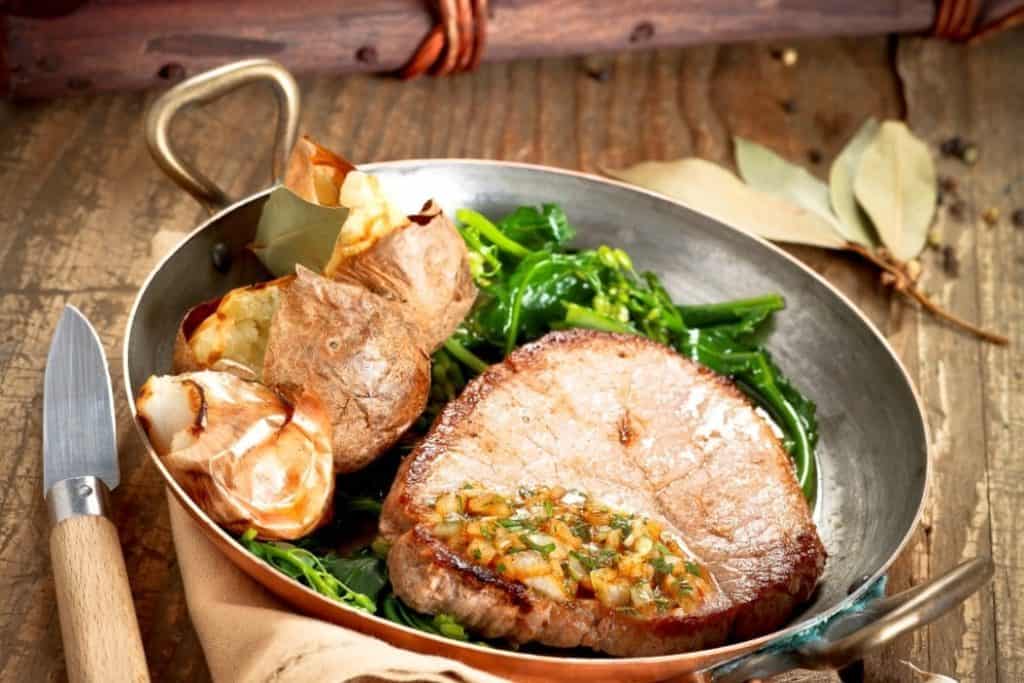
If you’re looking for a unique culinary experience, Portugal is the place to be! From the fresh seafood of the Atlantic coast to the hearty stews of the interior, Portugal’s local cuisine is sure to tantalize your taste buds. With its vibrant flavors and diverse ingredients, Portugal’s local cuisine is a must-try for any foodie looking to explore the world of international cuisine.
The best time to visit Portugal for local cuisine is from May to August when the weather is mild and dry.
- Try the traditional Portuguese dish, bacalhau (salted codfish).
- Sample the local seafood dishes, such as caldeirada (fish stew) and arroz de marisco (seafood rice).
- Taste the regional specialties, such as cozido à portuguesa (Portuguese stew) and feijoada (bean stew).
- Enjoy the local wines, such as Vinho Verde (green wine) and Porto (fortified wine).
- Indulge in the sweet treats, such as pastéis de nata (custard tarts) and bolo de arroz (rice cake).
Meet Amelia, a wanderlust-filled travel blogger on a mission to explore the world one destination at a time. From backpacking through Southeast Asia to luxury escapes in Europe, Amelia has experienced it all and is here to share their tips, tricks, and favorite finds with fellow travelers. Follow Amelia on their journey as they discover new cultures, indulge in delicious cuisines, and create unforgettable memories.
Related Posts:
- 15 Must-See Attractions In Tondela, Portugal: A Local'S…
- 15 Must-See Attractions In Sacavém, Portugal: A Local'S…
- 15 Must-See Attractions In Ílhavo, Portugal: A Local'S…
- 15 Must-See Attractions In Valbom, Portugal: A Local'S…
- 15 Must-See Attractions In Gondomar, Portugal: A Local'S…
- 15 Must-See Attractions In Viseu, Portugal: A Local'S Guide!
- 15 Must-See Attractions In Santa Maria Da Feira, Portugal: A…
- 15 Must-See Attractions In Northern Portugal: A Guide To The…
- 15 Must-See Attractions In Peniche, Portugal: A Guide To The…
- 15 Must-See Attractions In Espinho, Portugal: A Guide To The…

15 Must-See Attractions In Swindon: The Best Of Wiltshire, England!

15 Must-See Puerto Rico Tours: Explore The Island’S Most Spectacular Sites!

15 Hidden Gems: The Best Small Towns To Visit In Idaho!
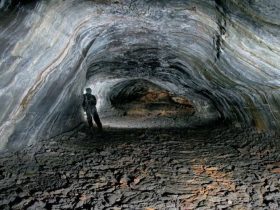
25 Unforgettable Experiences You Can’T Miss In Iceland!
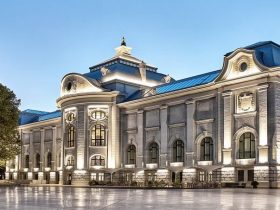
25 Unmissable Experiences In Riga: The Ultimate Guide To Latvia’S Capital City!
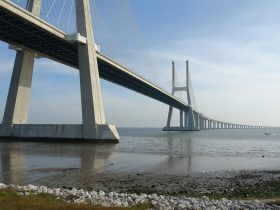
15 Must-See Attractions In Sacavém, Portugal: A Local’S Guide!

Bragança Guide: 5+ Things To See & Do

The small print: Portugalist may generate a commission from mentioned products or services. This is at no additional cost to you and it does not affect our editorial standards in any way. All content, including comments, should be treated as informational and not advice of any kind, including legal or financial advice. The author makes no representations as to the accuracy, completeness, suitability, or validity of any information on this site and will not be liable for any errors or omissions or damages arising from its display or use. Links to external websites do not constitute an endorsement. [Disclaimer Policy]
Bragança isn’t a city which attracts many international visitors, aside from the few Spanish tourists who stray over the border. The city doesn’t have a huge number of attractions, certainly not as much as larger cities like Lisbon and Porto, and it lacks the beauty of places like Sintra, Obidós, or any of the other cities on the tourist trail.
However, Bragança does have a very impressive castle. Whether it’s impressive enough to make the journey this far to the other side of Portugal is another question, but if you are already over this direction, it’s definitely worth taking a look at. It’s particularly worth visiting this part of Portugal, Trás-os-Montes e Alto Douro, for the Carnival in nearby Podence, which takes place between Domingo Gordo (“Fat Sunday”) to Shrove Tuesday – around 40 days before Easter.

Useful Resources for Your Trip to Bragança
Here’s our top tips and tricks for getting the best deals for your trip to Bragança.
- Accommodation: Booking.com and Airbnb are the two most comprehensive websites for finding hotels, hostels, apartments, and other types of accommodation in Bragança.
- Car Rental: Discover Cars and Rental Cars are the two most useful sites for booking local car rental.
- Airport transfers: There are taxis and Ubers at Porto Airport, but you can also pre-book an airport transfer with Welcome Pickups .
- Tours & Things to Do: Both Get Your Guide and Viator list lots of local tours and activities in Bragança and the surrounding Northern Portugal region.
- Luggage Storage: Luggage Hero and Bounce are two great sites for finding places to store your luggage in Portugal.
- Public Transport: Cp.pt is the main website for trains in Portugal. For longer distance buses, see Rede Expressos . Flixbus.pt often has cheap tickets between cities in Portugal.
- Flights: Skyscanner and Google Flights are the two most useful websites for finding flights to Portugal. The nearest airport to Bragança is Porto Airport.
Top Places to Stay In Braganca
Bragança offers a variety of places to stay, most of which is fairly basic but affordable. However, there are a few gems within that list.
- Pousada de Bragança : This is a charming hotel located in the historic city of Bragança. It offers stunning views of the city and the castle. The hotel is housed in a contemporary building and features a swimming pool, restaurant, and bar. The rooms are comfortable and well-equipped, providing a relaxing stay for guests.
- Hotel Tulipa : Situated in the heart of Bragança, the widely signposted Hotel Tulipa provides a comfortable and convenient stay. The hotel offers free Wi-Fi, air-conditioned rooms, and a daily breakfast. It’s located close to various tourist attractions, making it an ideal base for exploring the city.
Another option would be to stay in the historic cidadela, and there are several apartments and smaller guesthouses with the old city walls, which you can view on Booking.com .
What To See And Do
Bragança’s main attraction is, by far, its castle and all of the attractions that are connected to it, such as the military museum, Domus Municipalis
Bragança Castle

Dominating the cityscape of Bragança, the Bragança Castle serves as a grand reminder of the town’s historical significance and strategic importance. This impressive fortress, dating back to the 12th century, is among the best-preserved medieval castles in Portugal. Surrounded by sturdy walls, the castle complex includes the Citadel, the Domus Municipalis – a unique Romanesque civic building – and the Keep Tower, which houses a military museum. Visitors to the castle can climb up the tower for a stunning panoramic view of Bragança and the surrounding Montesinho Natural Park.
Military Museum

Nestled within the Keep Tower of Bragança Castle, the Military Museum is a captivating attraction offering insight into Portugal’s rich military history. This museum is home to a diverse collection of exhibits spanning from the Middle Ages to the present day. As you explore the museum, you’ll encounter everything from ancient weaponry and armours to military uniforms and historical documents right up until the first world war and even later. Each artefact tells a piece of the story of the region’s strategic importance, its battles, and its heroes.
Medieval Cidadela
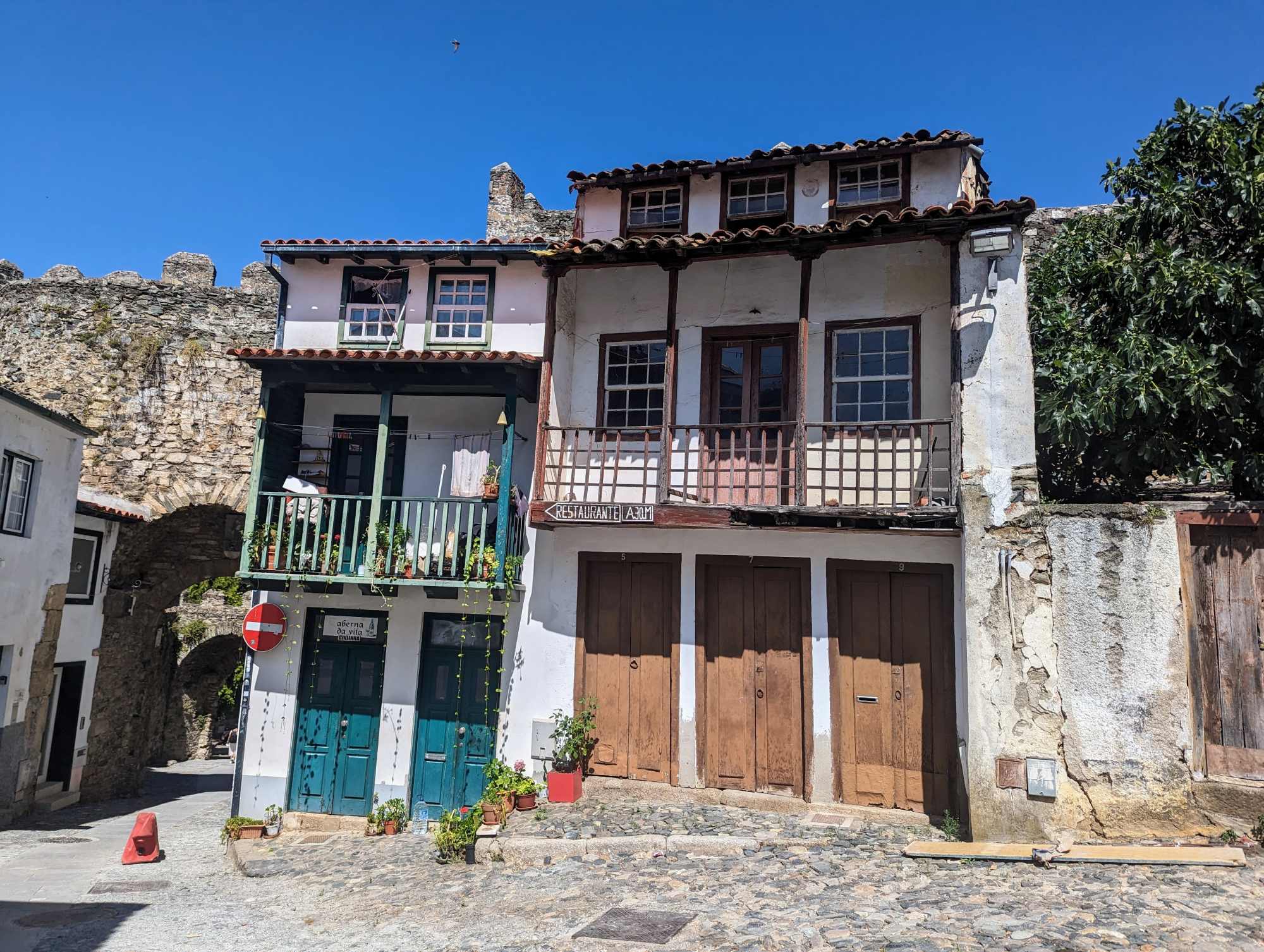
The Medieval Cidadela, or Citadel, is a significant part of the Bragança Castle complex and a compelling symbol of the city’s medieval past. Enclosed within its fortified walls is a charming hamlet that takes you back in time with its quaint cobbled streets, traditional houses, and ancient monuments. A stroll through the Cidadela allows you to immerse yourself in history, with every corner telling tales of the past. Notable landmarks include the Domus Municipalis, an intriguing 12th-century Romanesque civic building, and the Igreja de Santa Maria (Church of Santa Maria), a testament to Bragança’s religious heritage.
Igreja de Santa Maria
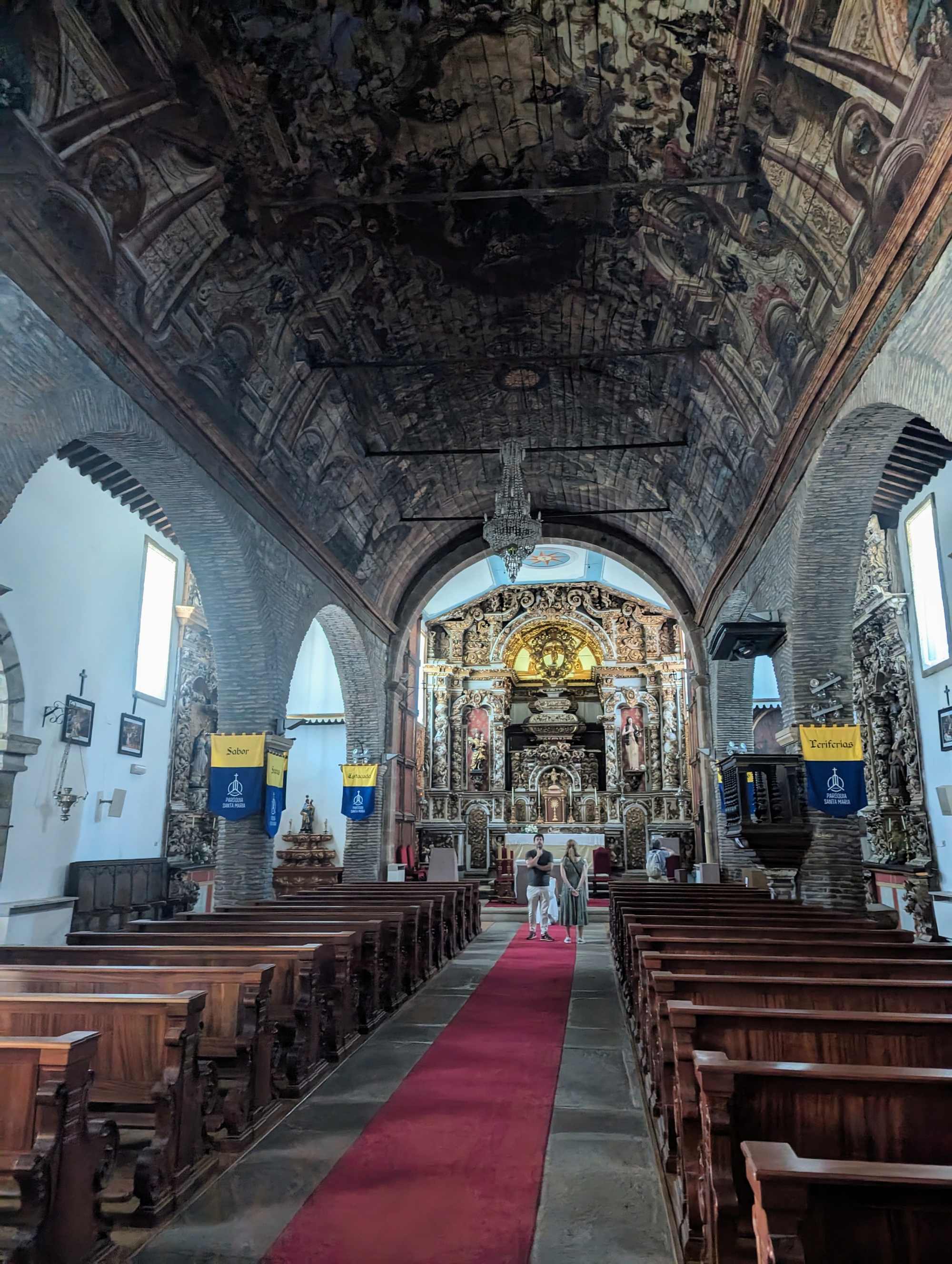
The Igreja de Santa Maria, or Church of Santa Maria, is an important historic and religious landmark situated within the Medieval Citadel of Bragança Castle. Originally built in the 12th century, the church exhibits a blend of Romanesque and Gothic architectural styles. Inside, visitors are greeted by a tranquil, reverent atmosphere, amplified by the simplicity of its interior. The church’s wooden carved altarpiece and beautiful sacred art contribute to its allure.
Domus Municipalis

One of the most intriguing landmarks in Bragança is the Domus Municipalis, a 12th-century Romanesque civic building nestled within the walls of the city’s castle complex. This unique structure, with its characteristic pentagonal shape and ribbed vaulting, is the only one of its kind in Portugal, making it a vital part of the country’s architectural heritage. Originally used as a cistern, the building later served as a meeting place for the city council.
Museu Ibérico da Máscara e do Traje

The Museu Ibérico da Máscara e do Traje, or the Iberian Museum of Mask and Costume, is an intriguing cultural landmark located in Bragança’s old walled city. This museum is dedicated to celebrating and preserving the rich traditions of Iberian mask and costume practices, especially those associated with annual festivities and winter solstice celebrations.
As you wander through the museum’s exhibits, you’ll discover a fascinating array of vibrant masks and traditional costumes, each telling a unique story about regional folklore, mythology, and communal identity. The museum’s interactive displays and engaging descriptions provide deep insights into these cultural traditions, making a visit to the Museu Ibérico da Máscara e do Traje a captivating journey into the heart of Iberian culture. Some of these are very bizarre and perhaps even scary, so be warned if you’re bringing young children. That aside, it is one of the most interesting attractions and offers a glimpse into a unique side of Portuguese culture.
Igreja de São João Baptista
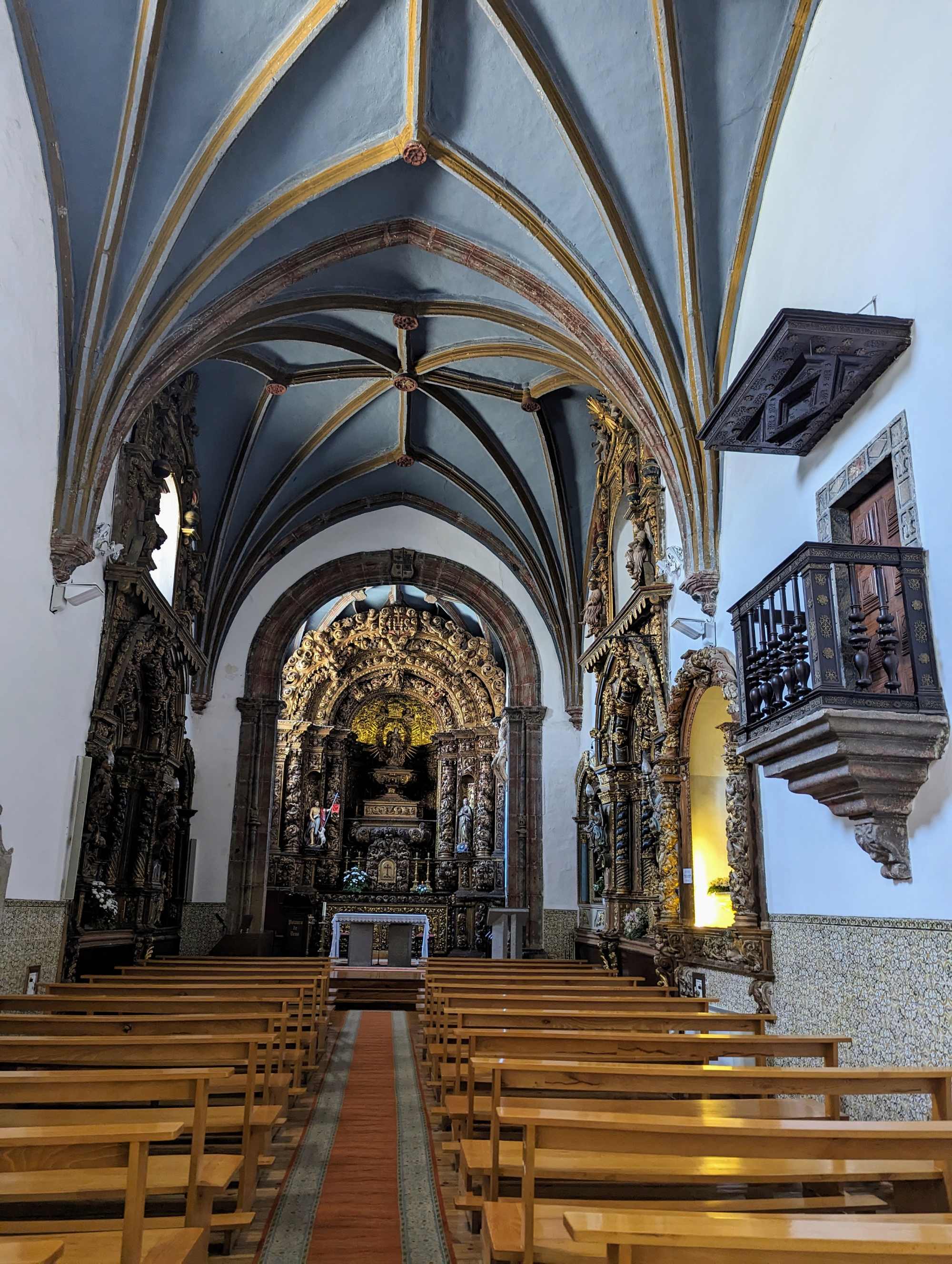
Igreja de São João Baptista, or the Church of St. John the Baptist, is a prominent religious landmark in the city of Bragança. This 16th-century church is renowned for its beautiful Manueline-style architecture, a Portuguese style characterized by elaborate ornamental motifs. The church features a distinctive façade, complete with intricately carved stone elements that capture the attention of passersby. Inside, visitors can admire the beautifully adorned altar, the traditional azulejo tilework, and several sacred art pieces that add to the spiritual ambiance of the space.
Museu do Abade de Baçal
The Museu do Abade de Baçal, or the Abbot of Baçal Museum, is a fascinating cultural destination located in Bragança. Named after its founder, Francisco Manuel Alves, the “Abbot of Baçal”, this museum is dedicated to preserving and showcasing the rich historical and cultural heritage of the Bragança region. Housed in a former episcopal palace, the museum’s collections span a wide range of themes, from archaeology and art to ethnography. Visitors can explore exhibits featuring Paleolithic artifacts, Roman inscriptions, medieval tombstones, sacred art, traditional costumes, and more.
Parque Natural de Montesinho
The Parque Natural de Montesinho is a haven of natural beauty and tranquillity located in the north-eastern corner of Portugal, near Bragança. Spanning over 70,000 hectares, this protected area is one of the largest nature parks in Portugal. It boasts a rich biodiversity, including wolves, wild boars, and golden eagles, as well as a plethora of flora that paint the park with vibrant colors in spring. The park’s stunning landscapes, which range from verdant valleys and oak forests to rugged mountain ranges, offer endless opportunities for hiking, bird watching, and photography.
What to Eat
Bragança offers a rich culinary tradition that is deeply influenced by the region’s pastoral and agricultural lifestyle. Posta à Mirandesa, a beef steak dish from the Mirandesa breed of cattle native to the area, is a must-try. This succulent meat dish is typically served grilled or roasted with locally grown potatoes.
Alheira de Mirandela, a smoke-cured sausage, is another local delicacy, which comes from nearby Mirandela. It was traditionally made with a mixture of meats, often excluding pork, and bread to create a unique and hearty flavor profile.
The region is also known for its honey and olive oil, used extensively in local cooking.
Getting Here
Bragança is one of the remotest cities in Portugal. The easiest way to get here is by car, although there are regular bus connections to the rest of Portugal. See Rede-Expressos and Flixbus.pt for tickets and timetables. There is no longer a train station in Bragança.
You can also fly here as the city has a small, regional airport and Seven Air, a small Portuguese airline, offers flights here from other small airports in Portugal. For most flights, however, the nearest large airport is Porto Airport, which is a little over 2 hours by car from Bragança.
Spotted a mistake? Suggest a correction
Leave a Comment Cancel reply
Save my name, email, and website in this browser for the next time I comment.
This site uses Akismet to reduce spam. Learn how your comment data is processed .
Find Portugalist on Facebook | X | Instagram FR | DE | ES | PT

- North Region
- Viana do Castelo
- Douro Region
- Central Region
- Serra da Estrela
- Castelo Branco
- Lisbon Region
- Castelo de Vide
- Vila do Bispo
- Vila Real de Sto. A.
- Arch. of Madeira
- Porto Santo
- Means of Transport
- Natural Parks
- Theme Parks
- Zoos and Aquariums
- Nightlife Spots
- Centro Region
- Estoril Coast
- Castro Marim
- Vila Real de Sto A.
- All-inclusive Trips
- Portugal with Children
- Weekend in Portugal
- Weekend in Lisbon
- Weekend in Porto
- Organize your tour
- Porto Airport
- Lisbon Airport
- Faro Airport
- V.R de Sto. Antonio

Portugal Travel
Organization of Portuguese agencies

- Customized tours
- Archipelago of Madeira
- Prepare your holidays
- Accommodation
- What to See
- Zoos & Aquariums
- Privacy and Policy
Bragança, Portugal
Don’t miss discovering the city of bragança while in the north of portugal..
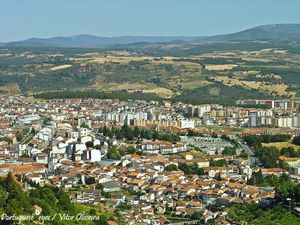
Bragança , the historical capital of the region of Tras-os-Montes , is at once a city of vast avenues and a medieval town with battlements. These will grant you the panoramic views of the fields, forest, and small farms enjoyed for centuries.
The most iconic attraction in the city is the old walled citadel standing atop a hill in the easternmost extreme of Bragança. After crossing it’s arched entrance, you will find yourself in an excellently preserved medieval neighbourhood. Don’t miss the Bragança Castle , the Torre da Princesa and Keep.

The main axis of the city (Av. João da Cruz, Rua Almirante Reis, Rua Combatentes da Grande Guerra y Rua Trindade Coelho) flows towards the southeast, from the bus station to the citadel. The Praça de Sé (Cathedral Square) is the hub of the city.
Among the rooftops of the citadel, two buildings stand out: the belltower of the Igreja da Santa María church , and the Keep of the Bragança Castle , decorated with fashionable Gothic windows. To cross the walls, you have to go along a passageway with two gates, the first nicknamed “ Porta de San António ,” and the other “ Porta da Vila .”
On one side of the castle, a small square full of century-old trees is the setting of the ancient Gothic “ Pelourinho ,” the base of which is the figure of a pre-Roman wild boar. The statue of the boar is believed to date back to as far as the Iron Age.
One of the most interesting monuments in the city is the Domus Municipalis , an old town hall with an irregular floorplan and influences of Medieval styles. It was erected in the 12th century and is almost annexed to the I greja de Santa María church .
Towards the bottom of the citadel, before entering the lowest part of the city, stands the Igreja de São Vicente Church , Romanesque in origin, where legend assures that the secretive wedding of King Dom Pedro and Queen Doña Inês de Castro took place .
In the Rua Abilio Beça street, you can visit the Museu do Abade de Baçal (Abbot of Baçal Museum), which occupies the two floors and gardens of the former Episcopal Palace, and where artworks and archaeological remains are exhibited.
In the lowest part of the city, it’s worth visiting the Sé or Old Cathedral of Bragança , former Jesuit church with Baroque chapels and an interior decoration based on tile panels.
In front of the Cathedral , a Cruceiro (calvary sculpture) from 1869 on top of a Solomonic column.
In the surrounding area to the Praça da Sé square , you can visit several buildings that are part of the city’s heritage, such as the Igreja da Misericórdia Church , decorated with tiles; the Solar dos Calaínhos (17th century), with its nine doors and the coat of arms of the Samentos Pimentéis Morais e Ferreiras family; or the Solar dos Veiga Cabral (1764), nowadays housing the Contemporary Art Centre .
Close by, in Rua Dr. Herclano de Conceição stret, you shouldn’t miss visiting the Dr. Belarmino Formoso Ethnography museum .
Visiting Bragança is not, as many say, limited to the citadel and the cathedral area, since Bragança is one of the cities in Portugal that have best adapt to these changing times. It features a urban planning full of vast avenues, and circuses featuring sculptures of great value and symbolism. The best examples can be found in the Rotunda 23 de Abril, Rotunda Homenagem ao Lavrador, and the Rotunda do Sabor.
As for new buildings, the Filipe Oliveira Dias City Theatre , in Praça Professor Cavaleiro de Ferreira Square, and the Fórum Theatrum Mall are both unique examples of the new ways of this changing Portuguese city.
The city was known as Bragantia by the Celts and Juliobriga by the Romans. It is a century-old city located just a few kilometres from the border with Spain, which made the city a common setting for skirmishes and full-blown wars between Spain and Portugal .
It’s walled citadel was erected by Alfonso Henriques, first king of Portugal in 1130; whereas his son, Sancho I, improved the fortifications and ordered the building of Bragança Castle after taking the king from the kingdom of Leon in 1187.
In 1442, King Alfonso V created the Duchy of Bragança for his uncle, who was the bastard son of King JoãoI, giving raise to one of the wealthiest and most powerful families of Portugal.
Bragaça exerted an important role during the Napoleonic wars being the very place form which Sapúlveda exhorted to resist the French troops.
An interesting period during which to visit Bragança is early May, when Bragança hosts the three-day-long Feira das Cantarinhas , the largest street craft festival in the region. In the surrounding area, it’s also worth visiting the Montesinho Natural Park , and the towns of Miranda do Douro and Mirandela .
Mapa Interactivo:
What to see :
- Bragança Castle
- Bragança Museum of the Military
- Domus Municipalis of Bragança
- Igreja de Santa Maria Mother Church of Bragança
- Old Cathedral of Bragança
- Igreja de São Vicente Church
- Igreja de São Bento Church
- Museu Ibérico da Máscara e do Traje Museum
- Graça Morais Contemporary Art Museum
- Abade de Baçal Museum
- Castro de Avelãs Monastery
- Miradouro do Santuário de São Bartolomeu Lookout
- Dr. Belarmino Afonso Ethnographic Museum
- Montesinho Natural Park
- Távoras Palace
- Miranda do Douro
- Museu da Terra de Miranda Museum
- Sé or Former Cathedral of Miranda do Douro
Other worth-visiting nearby towns and cities:
- Valença do Minho
- Ponte de Lima
- Ponte da Barca
- Peneda Gerês National Park
- Vila do Conde
- Vila Nova de Gaia
- Peso da Régua
- Vila Nova Foz Côa
Why "Portugal Travel"?
Portugal Travel is an organization of Portuguese agencies whose objectives are:
- ✓ To make Portugal , its culture and its heritage known .
- ✓ To promote sustainable tourism .
In collaboration with:
Escola Superior de Hotelaria e Turismo do Estoril
Turismo de Portugal

Travel Blog
Things to do in Bragança (Portugal)
Bragança is a city with a historical legacy that reveals its importance in the country. Surrounded by nature where you can see wolves, deer, and hundreds of species of birds, it invites you to take a deep breath among biodiverse trails and to slow down in charming villages where the black of the slate roofs contrasts with the bold colors of the traditional caretos that stroll through the streets like beings from another world. And all this sprinkled with the transmontane hospitality . Nature, culture, gastronomy, or adventure , Bragança has all the ingredients for a surprising getaway where the best thing is its smiling people.
In this guide, we try to reflect all that Bragança and its surroundings have to offer with practical suggestions, itineraries, where to sleep, and even where to eat so that your trip to Bragança is as incredible as ours was.

If you don’t have much time, jump directly to the section of What to see in Bragança in one day .
Basic facts for traveling to Bragança
When to visit bragança, how to get to bragança, how many days to spend in bragança, map of bragança, braganza castle, domus municipalis and church of santa maria, pelourinho de bragança and porca da vila, iberian mask and costume museum, rua dos museus (street of museums), marron oficina da castanha, praça da sé and sé velha, praça camões, misericórdia church, são vicente church, são francisco church and convent, national railway museum of bragança, urban art in the center of bragança, corredor verde (green corridor), rio de onor, aldeia de montesinho, montesinho natural park, miradouro da cidadela, capela e miradouro de são bartolomeu and miradouro do castelo de bragança, mosteiro de castro de avelãs, basílica de santo cristo de outeiro, capela de nossa senhora da ribeira, serra de nogueira, best hiking trails in bragança, where to stay in downtown bragança, where to stay near bragança, best restaurants in downtown bragança, best restaurants around bragança, things to do in bragança in one day, things to do in bragança in 2-3 days (a weekend), transportation: rent a car in bragança, how much does it cost to travel to bragança, useful apps for traveling to bragança, checklist: what to pack in your backpack/suitcase for bragança.
Bragança is the capital of the homonymous and cross-border district in the northeast of Portugal bordering to the north and east with Spain , specifically with Galicia (the province of Ourense) and with Castilla y León (the province of Zamora). It belongs to the Portuguese region of Trás-os-Montes and played a crucial role in the defense of the Portuguese border with a historical legacy visible at every step we take in the city. In addition, the municipality is part of the Iberian Plateau Transboundary Biosphere Reserve recognized by Unesco and enjoys a natural heritage with a lot of biodiversity with two natural parks (Montesinho Natural Park and Douro International Natural Park), the Geopark Terras de Cavaleiros and an important part of the Regional Natural Park of Vale de Tua.
Currency : Euro
Language : Portuguese
Population : 34581 (in 2021)
Daily budget : From 50€/day per person (approx.). More info here
Climate : Very wide temperature range, the climate of the area is known as “9 months of winter, 3 months of hell”. The best times to visit Branganza are usually spring and autumn. More info here
Accommodation : You can base yourself in Bragança to explore the city and its surroundings or, as in Randomtrip, sleep in one of its villages like Rio de Onor (we did it in Casa da Portela ) or Montesinho for a rural tourism experience. More info here
Duration : Minimum 1 day to visit the city, recommended 2 or 3 days to explore the surroundings and villages. More info here
How to get there : From Spain, the most common way is by car. If you are traveling from far away, the closest airport would be Porto (2h15 by car). We recommend you use flight comparators like Skyscanner and Kiwi and be flexible with dates. More info here
Transportation : The best option to move around the region is by car. If you need to rent one, find the best price in comparators like Discover Cars . More info here
Time zone : UTC +0. The time in Portugal is one hour less than in mainland Spain.
Covid-19 measurements : Check current measurements in Portugal here

It will depend on what you want to do. In general, the best time to visit is spring or autumn since it is an area with a wide thermal amplitude of very cold winters and very hot summers (it is commonly said in the area that the climate consists of 9 months of winter and 3 months of hell).
If you want to go during a particularly lively time culturally, then aim to visit Bragança during the city’s festivities (in August), the “Festas de Rapazes” (between Christmas and Epiphany), or during Carnival.
Table of weather in Bragança, with temperatures and rainy days by month:

Bragança is located in the northeast of Portugal, bordering Ourense and Zamora. The most common if you are going to visit the city from Spain or Portugal is to visit it by car since it will be useful to have your own car to visit the area calmly.
If you are traveling from far away or do not want to arrive by car, the closest airport is Porto (2h15 by car), where you can get low-cost flights like Easyjet or Ryanair from several European cities (we recommend you use flight comparators like Skyscanner and Kiwi and to be flexible with dates).
In Bragança there is no train connection, so if you don’t have your own car or a rental car, the only way to get there is by bus. You can check timetables and prices at, for example, https://rede-expressos.pt/ (tickets from Porto from 5€/trip).

If you just want to get to know the city center, one day may be enough to get an idea, although two days would be ideal, especially if you want to visit the city at your leisure and enjoy its museums.
If you also want to visit the surrounding area (Rio de Onor, Montesinho, etc.), which we strongly recommend, then ideally you should dedicate at least 2-3 days (a weekend or a long weekend).

Things to do in Bragança
Here we leave you a Google Maps map with all the places of interest in Bragança that we recommend in the guide, so you can take it with you on your smartphone:
We leave you also a tourist map of the city of Brangaza and a tourist map of the whole area of Terras de Trás-Os-Montes .
Bragança City Center
A walk through Bragança is a walk through more than five centuries of history . Its beautiful walled old town with narrow cobblestone streets dominated by schist has one of the most well-preserved castles in Portugal (or at least the ones we know of) as its protagonist. From a bird’s eye view, it is possible to clearly see the citadel within another, more recent Bragança, which is separated by no less than 900 years of history. Its monuments take us back to the Bronze Age and the presence of Romans, Suevi, and Visigoths. And outside the walls? Urban art, squares, gardens, and even a very cultured street full of museums known, of course, as the “Rua dos Museus”: five museums in just 300 meters of street. All this is accompanied by rich gastronomy, good wine, and even an original chestnut craft beer. Have we whetted your appetite? Let us introduce you to the center of Bragança.

One of the most beautiful and well-preserved castles that we know in Portugal due to several restorations throughout history, the Castelo de Bragança is a medieval castle that houses, in its Keep, the Military Museum of the city, distributed on five floors. It is located, next to the citadel, in the upper part of the city, on the left side of the Fervença River.

It is open from Tuesday to Sunday (from 9:00h to 12:00h and from 14:00h to 17:00h) and the entrance fee is 3€ per person (free entrance for children under 12 years old). You can climb the Princess Tower , recreating the legend that gives it its name.

The legend of the Princess Tower tells of an orphan princess who lived here with her uncle, the lord of the castle. One day, the princess fell in love with a noble and brave but (all these stories have a but) penniless young man. The young man left in search of fortune, promising the princess that he would not return until he was worthy enough to ask for her hand. Meanwhile, the princess refused any proposal from other interested parties. Until one day her uncle forced her to accept the proposal of a rich gentleman who had promised to marry his niece. The princess unburdened herself to the suitor by telling him that her heart belonged to another but her uncle found out. Very angry with the princess for what she had done, the princess’s uncle decided to use another form of coercion and manipulation: that night he invaded the princess’s chambers by entering through a door disguised as the ghost of the young man to whom his niece’s heart belonged. That ghost said that the princess had to marry the new suitor or she would be condemned to disgrace and burn in hell. The princess was heartbroken and was about to agree to the proposal when a ray of sunlight came through the window, even though it was night, revealing that it was not a ghost but her uncle. At that moment the princess decided not to break her promise of love and locked herself in the tower of the castle that has borne her name ever since. It is not known if the young man who had gone in search of fortune ever returned, but the two gates of the castle became known as the Gate of Betrayal and the Gate of the Sun.
A unique example of Romanesque civil architecture in the entire Iberian Peninsula, the Domus Municipalis is a must-see. Built during the 12th century, it is believed to have served as a place for meetings and for the use of rainwater and water from the nearby Fervença River.

Almost next to it and, in our opinion, stealing some of the protagonism that the Domus Municipalis deserves, is the Church of Santa Maria . Also known as Igreja de Nossa Senhora do Sardão and originally Romanesque, it is considered the oldest church in Bragança . In its interior, we can contemplate three-dimensional paintings.

It is open from Tuesday to Sunday (from 9:00 a.m. to 5:00 p.m.) and admission is free.
The Pelourinho de Bragança , a symbol of autonomy and lordly power, is one of the oldest in the country . It follows a typology typical of the northern region of Portugal, composed of a protohistoric base (500 years B.C.), in the form of a berrão (zoomorphic sculpture) seated on a column from the 12th or 13th century.
The berrão is known as “Porca da Vila ” and takes us back to the origins of the city as it was part of a cult of the primitive peoples of Trás-os-Montes, characterized by an agro-pastoral economy. They have a mystical and protective character and therefore are usually located (there are more examples in Portugal and in the province of Salamanca) at the entrance or in the center of the towns.
As a curiosity, I would like to tell you that in the place of the Pelourinho, originally erected in front of the Domus Municipalis, there was the old Church of Santiago.
Located on the main street of the citadel of Bragança, this museum tells the story of one of the most important cultural traditions of Trás-os-Montes : the famous caretos transmontanos through their masks and costumes.

Loaded with symbolism, it is impossible to talk about Trás-os-Montes without talking about its masks . They are the symbol of rites and rituals, of the passage from one state of consciousness to a more mystified one: those who wear the mask acquire another personality and live a mystery, especially in the rituals of the Winter Festivals. We tell you more about the caretos in the village of Aveleda, where we saw how they are created and how they are used .
Actually, in this museum, we can find not only masks and costumes from Trás-os-Montes but also from neighboring Zamora as it is the result of cross-border cooperation, and masks and costumes from that area are also represented.

Through his collection of costumes, masks, photographs, and various objects , we realized that there are more caretos than villages ! and that each one has a story to tell and a party associated with it. Most of the caretos and costumes are worn during the “Festas dos Rapazes” or during Carnival.
Wood, wool, tin, or cork are the raw materials used to give life to these characters of bold colors that take us back to the time of the Celts. The most elaborate ones, made of leather, fur, and cork, resort to more zoomorphic elements, such as foxes, wolves, and snakes, and others simply represent diabolical figures, terrifying but mysterious and fascinating at the same time. They are the masks of the transmontane winter and bring fun to every corner of this land, symbolizing life.

The museum presents about 50 characters spread over three floors with a soundtrack of traditional music to accompany this journey: one floor dedicated to the Winter Festivals of Trás-os-Montes, another to the Winter Masquerades of Zamora, and another dedicated to the costumes used in the Carnival Festivals of the two regions, leaving also a space dedicated to the artisans, artists of these works of art, and to temporary exhibitions.
The museum is open from Tuesday to Sunday from 9:00 am to 1:00 pm and from 2:00 pm to 5:00 pm. Admission is free and if you want a guided tour you have to request it in advance.
And we arrived at the most cultural street in Brangaça, Rua Abílio Beça , better known as Rua dos Museus (Museum Street) because on this street you find five museums in less than 300 meters:
- Graça Morais Contemporary Art Center : in addition to exhibiting in seven rooms the works of one of my favorite Portuguese painters, Graça Morais, this museum is an architectural project by Souto de Moura, winner of a Pritzker Prize in 2011. Beyond works by Graça Morais , it also features exhibits from other contemporary art collections. Open from Tuesday to Sunday from 10:00h to 18:30h. Admission: 2€/person, free for children under 10 years old.
- Centro de Interpretação da Cultura Sefardita do Nordeste Transmontano : aims to preserve the experiences of the Jewish communities that inhabited the Trás-os-Montes region by narrating their history. Open from Wednesday to Sunday from 9:30 am to 1:00 pm and from 2:00 pm to 5:30 pm. Free admission.
- Memorial e Centro de Documentação Bragança Sefardita : a space that complements the previous center and teaches, in a didactic and interactive way, a more religious side . Open from Wednesday to Sunday from 9:30 am to 1:00 pm and from 2:00 pm to 5:30 pm. Free admission.
- Centro de Fotografia Georges Dussaud : dedicated to the work of the French photographer and photography in general. There are several temporary exhibitions and a unique collection of Dussaud who developed his work in Portugal and, in particular in Trás-os-Montes, since 1980. Open from Tuesday to Sunday from 9:00h to 12:30h and from 14:00h to 17:30h. Free admission.
- Museu do Abade de Baçal : located in the building of the former Episcopal palace of the city, this museum aims to show the history of the region of Trás-os-Montes at the religious, social, political, and economic level from the pre and protohistory of the region (gathering societies) to the 19th century. Open from Tuesday to Sunday from 9:30 am to 12:30 pm and from 2:00 pm to 6:00 pm. Free admission.

The Trás-os-Montes region is the largest national producer of chestnuts (and one of the largest in Europe) and this is visible in its gastronomy where we have tasted this delicious fruit in the transmontane pastries, as a garnish in various dishes and even in some more gourmet proposals. What we did not expect was to try a delicious chestnut craft beer!

We did it in Marron Oficina da Castanha , an interactive interpretation center dedicated to the process of elaboration and transformation of the chestnut where it is possible not only to learn about all this but also to do a tasting of liqueurs, beer, and chestnut sweets and also buy products in their store. If you have a craving for any of the above, you should know that they have an online store .

You can visit the Marron center every day from 10:00 am to 1:00 pm and from 2:30 pm to 7:30 pm. Admission is free. If you want to complement your visit with a tasting of liqueurs and chestnut sweets, you can book it for 5 €/person here
A central point of the city of Bragança, the name of this large square comes from its neighbor, the Sé Velha , the old cathedral of the city, built in the 16th century.

Initially, the cathedral was designed to serve as a convent for the Poor Clare nuns, at the request of the Duke of Bragança, but it ended up as a Jesuit college, one of the most prestigious in the region. With the expulsion of the Society of Jesus from Portugal, the building passed into the hands of the diocese of Miranda do Douro. The diocesan seat was transferred from Miranda do Douro to Bragança in 1764 but the diocese (always thinking big), believed that the building did not have the dimensions for a Sé and ordered the addition of a new building, converting the conventual complex and the church consecrated to St. John the Baptist and the Holy Name of Jesus into a diocesan cathedral.
The square has in its center the Cruzeiro da Sé which deserves to be contemplated in detail.
Very close to the previous one, Praça Camões was the Municipal Market in the past and is currently the stage for several events such as the Carnaval dos Caretos . It is also from this square that you can access several cultural spaces such as the Municipal Library, the Conservatory of Music, the Academy of Letters of Trás-os-Montes, the Adriano Moreira Library, and the Adriano Moreira Municipal Cultural Center (located in the rest of the architectural complex of the convent, recovered in 2004).

This small church was built in 1539, and its façade was covered with tiles in the 19th century . In its interior stands out its altar, carved by Manuel de Madureira, in 1682, with the central figure of the Senhora da Miséricordia .
The church can be visited daily from 9:30 am to 5:30 pm.

According to popular belief, the greatest love story in the history of Portugal – the legend of Pedro and Inês (below is a summary of this Portuguese “Romeo and Juliet”) – happened in Bragança and, more specifically, in this church, the Igreja de São Vicente . Apparently, it was here, in the church of São Vicente, that D.Pedro I secretly married Inês de Castro and a tile panel on the north façade of the church recalls this union.

We do not know if the secret union is true but what we believe is that for this reason alone it is worth a visit and, in addition, the church (and, above all, its roof) is very beautiful.
The legend of Pedro and Inês : Prince D. Pedro I of Portugal (son of King D. Afonso IV) and Inês de Castro, the lady-in-waiting of D. Constança (with whom D. Pedro I contracted an arranged marriage) fell madly in love and lived a forbidden romance. When the king found out, he had Inês de Castro exiled and expelled from the court. Before this happened, D. Constança died and Pedro and Inês felt free to live their love story, even believing that they married in secret to make their relationship official here, in Bragança, in the Igreja de S. Vicente. They had children and lived happily for 10 years until King D. Afonso IV ordered the murder of Inês and their children in Quinta das Lágrimas, Coimbra. Legend has it that D. Pedro I never forgave his father and that when D. Afonso IV died and D. Pedro I was crowned king, he would have exhumed the body of Inês and ordered a funeral procession through the streets of Coimbra with all the honors of the nobility and then crowned her queen of Portugal, forcing all members of the court to kiss the hand of her corpse. Inês de Castro is known in Portugal as the woman who, after death, was queen.
This huge 13th-century building (rebuilt on a pre-existing medieval structure), was initially a convent, which underwent several renovations over the years. Later, the conventual area came to be adapted for the installation of the military hospital, and today part of the building is used as the Arquivo Distrital de Bragança .
Located in the old building where trains used to sleep after traveling along the winding railroad line of Tua, this museum takes us back in time and exhibits more than two hundred pieces that were part of the daily life of thousands of passengers and railroad workers in their day.

We were very impressed by the cabinet displaying old train tickets and carriages transformed into authentic interactive exhibition rooms where you can learn more about the “Linha do Tua”, considered one of the most beautiful in Portugal.

Open from Tuesday to Sunday from 9:00 am to 1:00 pm and from 2:00 pm to 5:00 pm. Admission is free.
There are two other museums in the city that we have not visited but that you may find interesting:
- Centro Ciencia Viva : ideal if you go with children, this museum is located in a former electricity production plant and has an interactive exhibition dedicated to science, geological and biological heritage of the region as well as energy, environment, and recycling. Open from Tuesday to Friday from 10:00 am to 6:00 pm, Saturdays and Sundays from 11:00 am to 7:00 pm. Admission is 2,50€/person (1€ for children under 6 years old).
- Centro de Memoria Forte S. João de Deus : due to its strategic position, Bragança had a very important role in the defense of the Portuguese borders and the fort S. João de Deus was built precisely to reinforce the defensive system of the city after the restoration of independence in 1640. This museum has an interactive space where it talks about the military presence in the city. Open from Monday to Friday from 08:30h to 17:30h. Free admission.

Bragança has art for all tastes and if you like street art , here you can find more than 50 works of art in its streets .

As part of the Sm’arte-Street Art Festival of Bragança , several national and international artists have been invited to fill the streets of Bragança with their art. For example, if you like Bordalo II know that you have three of his works in the city: Gineta , Camaleão and Javali . More info about all the works of Street Art of Bragança in this link

Walk along the Fervença river through which you can reach the Centro Ciência Viva de Bragança (ideal to go with children), the Casa da Seda, the viewpoint of the Chapel of Nossa Senhora da Piedade or the Urban Park of the city.
Surroundings of Bragança
While it is true that the city of Bragança was a surprise, it was in its surroundings that we found our favorite spots of the trip. If you have time, do not hesitate to spend a couple of days in some of these natural gems and charming villages of the municipality.
We started this transmontane journey in Rio de Onor , just as one of my favorite writers, José Saramago (Nobel Prize for Literature in 1998), chose to begin his “Journey to Portugal “. As soon as you arrive in this village you understand why it has been chosen as one of the 7 wonders of Portugal . Around here, “time is in no hurry” as the kind Paulo, our host in the beautiful Casa da Portela where we stayed, told us.

Its name comes from the river that runs through it and in its emblematic narrow streets of schist houses it is understood that we are a step away from Spanish lands (from Rihonor de Castilla) because you never know if who you cross will greet you in Portuguese, Castilian or even in Rihonorês (its own dialect) but rest assured that there will. be a greeting, in whatever language or dialect it is. In reality, these two towns are “the same”, separated by a virtual border (although very physical and real after the Carnation Revolution and recently, at the beginning of the pandemic). Their inhabitants refer to both areas as “aldeia de cima” and “aldeia de baixo” (village above and village below).

It is located 26 km from Bragança and is characterized by its communitarianism , a trait that persists to this day where the oven, the mills, the agricultural land, and even the herds are shared among its people.
It is, therefore, a special village, as already told by Jorge Dias in his book “Rio de Onor-Comunitarismo Agro-Pastoril ” of 1953, a work that attracted Saramago to begin his journey here. This trait (and pride) of being a communitarian village is also evident in the mural that we find as soon as we arrive in the village that says “Rio de Onor, Aldeia Comunitária”.

Although the best plan in Rio de Onor is to stroll through its streets and engage in conversation with its people , from whom you will learn for sure, there are several things to do in Rio de Onor. In the Casa do Touro (whose name comes from the community bull of the village) they tried to create a space of memory that takes us to the past both through photographs and videos where we can see the community work and through the soundtrack, with traditional music of bagpipes.
Also in this space, they explained to us what the vara da justiça (the justice stick) was in Rio de Onor: a wooden stick where they wrote down the fines with stripes, and the best thing, the fines were paid in wine. This stick had marked the neighbors of the village, divided by the river, and there the fines were written down. As a curiosity, the worst fine was to exclude the neighbor from the community. You can visit Casa do Touro from Wednesday to Sunday, from 12:30 to 18:30 (free entrance).

Rio de Onor also has a church from the 19th century and a photogenic bridge from the same century, over which the river flows. It is precisely here where you will find a wonderful option to stay in this special village: Casa do Rio .

It was at the beautiful bridge that we started walking towards the “Percurso do Carvalho ” trail, a route between lameiros (mountain pastures), waterfalls, and viewpoints of 7.5km (2 hours approximately) passing by a centenary oak tree that gives it its name. The Carvalho Negral is a tree (an oak in this case) of public interest , and as soon as we saw it we had to embrace it. We will tell you more about this and other routes in the area in Hiking Routes

On this trail, you may be lucky enough to spot deer, foxes, javelinas, or wolves . If you want to learn more about the latter, go to the Iberian Wolf Interpretation Center ( very close, in Zamora ), as this is the area with the highest concentration of this animal.
When we returned from the trail, a surprise awaited us: Bruno, an expert bartender , had prepared two very transmontane cocktails for us: one without alcohol and one with alcohol based on chestnut liqueur. He also offered us to taste the regional sweet, the brigantina , made from chestnut flour, honey, and walnuts.

If you don’t have cocktails waiting for you, don’t worry, you can always do the Ronda das Adegas de Rio de Onor, a tour through the different wineries of the village where you can taste the wine of each neighbor.
We also went to the Casa das Mascaras in Rio de Onor where you can get some handmade souvenirs of one of the wonders of Portugal. By the way, Rio de Onor is the only place in Trás-os-Montes where there is a careta (woman) because, in the other transmontane villages, the characters are always men.

Thanks to Paulo from Casa da Portela for his hospitality, for sharing so much knowledge, and for that delicious homemade traditional folar (a bread with sausages from the northeast of the region, which reminded us of the hornazo from Salamanca), we can’t think of a better welcome to start a trip through Terras de Trás-os-Montes.

“Sometimes you start with what is farthest away. The natural thing would be, having been in Bragança, to see what the city has to show, and then take a look at the surroundings, a stone here, a landscape there, respecting the hierarchy of places. But the traveler brings a fixed idea: to go to Rio de Onor. It is not that he expects worlds and wonders from the visit, after all Rio de Onor is only a small village, there are no signs of Goths or Moors there, but when a man gets into reading, names, facts, impressions are always stuck in his memory, all this is elaborated and complicated until reaching, as in this case, the idealizations of the myth. The traveler did not come to do the work of an ethnologist or sociologist, no one can expect supreme discoveries from him, not even minor ones: he has only the legitimate and most human desire to see what others have seen, to set his feet where other feet have left their mark. Rio de Onor is for the traveler like a place of pilgrimage: from there someone brought a book that, being a work of science, is one of the most moving things ever written in Portugal. It is that land that the traveler wants to see with his own eyes. Nothing more. “ “Um Bagaço em Rio de Onor”, Journey to Portugal, José Saramago
In the small village of Varge (on the road that connects Rio de Onor with the city of Bragança) we stopped with one goal: to eat at the famous restaurant “O Careto “, which specialized in grilled meats (although they also have codfish, as they told us “because of the large number of people from Spain who visit them looking for that dish”), with good prices and abundant portions.

If you go, be sure to take a walk through the narrow streets, crossing the river with its stone bridge, and admiring the works of urban art centered on the “ caretos ” (which we talked about above in this guide), both next to the bridge (here exactly ). During the 25th and 26th of December (Santo Estevão ) the Festa dos Rapazes is celebrated in Varge, the town is full of people and “ caretos “, a spectacle worth visiting.

If in the Costume and Mask Museum of Bragança we learned about the different caretos of the region, in the village of Aveleda we saw how they are born! It was in Máscaras d’Aveleda that we met Isidro Rodrigues, the artist behind these works of art, watching him create live his particular tin caretos .

The caretos are an ancestral tradition, one of the most emblematic of the region and its origins date back to pagan antiquity , when a new cycle of nature was commemorated at the Winter Solstice. The diabolical figures, a union between the world of beasts and the human world , celebrate a renewed time and the approach of spring, with the promise of abundant harvests. They are also used in the ritual of transition from adolescence to adulthood, and for this reason, some costumes carry cowbells and pig bladders as a symbol of fertility. It is not until the Christian era that the festivities were integrated into the religious calendar and the reason why they are held between the twelve days separating Christmas and Epiphany (Festas dos Rapazes) or during Carnival.

All the caretos have their particularities depending on the town where they are created and in Aveleda the raw material used is mainly tin, the chin of the careto is usually shaped like a beak and the nose is also usually pointed. The artisan Isidro told us that he is inspired by the masks of the 60s and 70s since he has not found any previous ones.

This is a visit that we highly recommend in Aveleda and one of the most beautiful memories you can bring home. A face of Aveleda already inhabits one of the walls of our house. If you want to make sure Isidro is there when you go, call him at +351 924 491 484 or send him an email to [email protected] .
This typical transmontane village , in the middle of the Serra de Montesinho, is located at almost 1000 meters of altitude and is, together with Rio de Onor, one of the most beautiful villages we passed through on this trip. The schist houses with slate roofs reminiscent of a dragon’s back are neat and flowery and sometimes even invite you to enter.

That happened to us when we passed in front of the Lagosta Perdida , a beautiful rural house of a Dutchman and a British woman who fell in love on the Scottish Isle of Skye (where he was in the lobster business) and after much traveling and searching chose Montesinho to live. The name of their incredible house where you can stay , the Lost Lobster, comes from the fact that a lobster in Montesinho can only be lost…

While you are strolling through the narrow streets of Montesinho, go to the Igreja de Santo António or, a little further in the beautiful Vinhais, to the Centro Interpretativo de Montesinho – Casa da Vila where it is possible to learn about the geological characterization and the modus vivendi of its people.

One of the region’s jewels, the Montesinho Natural Park is home to 74 thousand of hectares of biodiversity starting in Quintanilha and ending in Vinhais.

There are several ways to get to know the park, the best is walking, doing some of its hiking trails , off-road biking, or 4×4 like the tour we did with Nélio Fraga from Aventura Norte .

On these walks, it is possible to contemplate the Park’s rich and diversified flora and fauna . It concentrates more than 70% of the mammals in Portugal and it is possible to see species such as the Iberian wolf, wild boar, fox, roe deer, or deer. Of the latter, we saw a few and we highly recommend the deer-watching activity with Aventura Norte . The best time to see them is during the rutting season (September-October), when the probability of hearing and seeing them is much higher, especially at dawn and dusk.

If you like birdwatching , the natural park of Montesinho has more than 120 species of birds that you can observe (we were left with the desire to see the black storks) and a privileged place to do so: Lama Grande , which is located in the upper part of the Serra de Montesinho, between the villages of França and Montesinho, the only place in Portugal where the alpine pipit lives and nests. In the skies above the park, you can also observe golden eagles, white wagtails, rock thrushes, grey herons, and little sandpipers.

You will also discover unique species of butterflies, a great variety of mushrooms (part of the gastronomic treasure of Trás-os Montes), and if you go in Spring, a great concentration of poppies.
The Natural Park of Montesinho surprises with its nature that leaves no one indifferent and is established as one of Europe’s largest centers of biological diversity. We recommend some stops on your way through the park:
- Barragem Serra Serrada and Barragem de Veiguinhas , which supply the water consumed in Bragança
- Casa da Lama Grande : small houses that were built to visit the park but are now abandoned. On the way, you will see some very photogenic groups of rounded stones.
- An old mill now in disuse
- A small waterfall
- Stop at any point to appreciate the marvelous views.

From the Miradouro da Cidadela , on the Estrada do Turismo , you will have one of the best views of the citadel of Brangaça, with its castle in the center. Weather permitting, it is also an excellent spot to watch the sunset.
Continuing along the same street (Estrada do Turismo ) we will find another area with viewpoints over the city of Bragança with excellent views, such as the Miradouro do Castelo de Bragança and the Miradouro de São Bartolomeu , the latter next to the chapel of the same name. Due to the height, the views are spectacular, almost aerial, so we can appreciate the entire city of Bragança with its citadel and castle as protagonists.

A few kilometers from Bragança is this medieval monastery that once served as a refuge for wealthy Benedictine monks. It became extinct in the mid-16th century, but today what attracts visitors is that it is the only example of Mudejar Romanesque architecture in Portugal , evoking an Ibero-Muslim style. It is said that many of the most illustrious figures of the time when there were kings and queens in Portugal spent the night here.
It is worth a visit, not only for its architectural magnitude but also because it is the only basilica in the country built in a village , not in a city. The Basilica of Santo Cristo de Outeiro was built in the 17th century and was originally a temple that, after being abandoned, was involved in a miracle when, in 1698, it is said that the image of Santo Cristo shed blood. After the miracle, a sanctuary was built and became a place of pilgrimage. In 1927 the basilica was classified as a National Monument. After contemplating the basilica, stroll through the streets and square of the village of Outeiro and, if you have the energy, climb the hill where there are still vestiges of the Outeiro Castle.
If you like legends come to this chapel that tells the medieval legend that the Virgin Mary appeared here to a mute shepherdess who, after the encounter, began to speak. It is a National Monument and has been preserved over the centuries.
Shared by Bragança with the neighboring municipalities of Macedo de Cavaleiros and Vinhais, the Serra da Nogueira (also known as Serra da Pena Mourisca) is home to the largest area of black oak (Carvalho Negral ) in Europe. It has a sanctuary, Santuário de Nossa Senhora da Serra , from which we can get excellent views of the surroundings, and also a couple of picnic areas. We leave you here a route (not official) in case you want to get to know this place better off-road.

We didn’t get to go there, but we still wanted to. If after Rio de Onor and Montesinho, you have time and more of a desire for rurality, don’t miss the village of Gimonde and its photogenic bridges: the old bridge , made of schist (and Roman origins), the new bridge, made of granite.
One more reason to fall in love with the charming villages of the Trás-os-Montes region.
- Percurso do Carvalho Route ( PR11) : one of the official routes of the “Nove Passos” (nine passes) of Trás-Os-Montes of which we talk about below, a circular route of 7km (about 2h approximately). More info and the official brochure

- Route to the summit of Montesinho mountain: circular route of approximately 8 km (with about 270 meters of elevation gain) from the village of Montesinho to the Serra Serrada dam. More info

You can see more official hiking trails in Bragança here
The Intermunicipal Community of Terras de Trás-os-Montes created a natural passport called “Nove Passos” (Nine Steps) in which you can get stamps for each of the nine hiking trails in the transmontane community . At Randomtrip we already have our first stamp in the Percurso do Carvalho and we can’t wait to come back to get the others: Percurso Sabor (in Alfândega da Fé), Percurso Quercus (in Macedo de Cavaleiros), Percurso São João das Arribas (in Miranda do Douro), Percurso Vale de Lobo (in Mirandela), Percurso Cascata da Faia da Água Alta (in Mogadouro), Percurso Vilarinho das Azenhas e Ribeirinha (in Vila Flor), Percurso Castelo de Algoso (in Vimioso) and Percurso Biospots Alto da Ciradelha (in Vinhais).

In addition to hiking, if you like mountain biking, you have the Serra de Montesinho mountain bike route, about 40 km from the village of Montesinho passing through Cova da Lua. The itinerary follows the park with the constant presence of the Sabor river.

Bragança is also the venue for several nature sports events such as the Bragança Granfondo (a cycling tour through historic villages with the support of the Caretos), the Iberian Chestnut Marathon (a mountain bike race in the Montesinho Natural Park) or the Zoelae Trail (a trail race through the land of centuries-old oak trees).
Where to stay in Bragança
As in this guide, we recommend you to visit not only the city of Bragança but also the surrounding areas of the region, we believe that the ideal is to sleep in the outskirts, in a rural area such as the wonderful village of Rio de Onor (we stayed there, in Casa da Portela ), although you can also stay in the city center where there are more options.
- Baixa Hotel : in the historic center, double rooms with views of the castle from 45€/night
- Hotel Ibis Bragança : small and basic double rooms, from €45/night
- Casa da Praça : Also in the center of town, this renovated house with a modern style has 2 bedrooms and views of the city, from 75€/night.
- Hotel Sao Lazaro : Hotel with spacious and modern rooms, swimming pool, views of the castle and breakfast included, from 95€/night.
- Pousada de Bragança : 5 min from the center of Bragança you can sleep in a pousada with views of the castle and the city, from 160€/night.

You can see more accommodations in the center of Bragança here .
- Casa da Portela (Rio de Onor): The accommodation where we stayed, is brand new and with everything you need. Double rooms from 70€/night, breakfast included. At Randomtrip we stayed in a suite with a balcony and views of the village. The bed was super comfortable and the silence is absolute at night, ideal for resting.

- Casa do Rio (Rio de Onor): traditional house for 4 people (2 rooms) with breakfast included and river view, from 140€/night

- A Lagosta Perdida (Aldeia Montesinho) double rooms with breakfast and dinner included from €130/night

- Estrela de Montesinho (outskirts of Bragança): villas for 6 people (6 bedrooms) with views, breakfast included, and shared swimming pool, from 220€/night.
- O Abel Hotel Rural (Gimonde): in the same O Abel Restaurant (which we recommend below) is this rural hotel with modern double rooms, with garden views and breakfast included, from 50€/night.
You can see more accommodations in the surroundings of Bragança here .
Best restaurants in Bragança
- Solar Bragançano : family restaurant with traditional food, specializing in hunt dishes (wild boar, deer, partridges, …). From what we tasted, we highlight the chestnut soup, the alheira, and any of the homemade desserts.

- Alma Lusa is in the center of Bragança, a cozy space with Portuguese fusion food. If you want to escape from the meat dishes, which are traditional in this area of Portugal, this is your place, with vegetarian options and dishes to share. The service was excellent and so was everything we tried, highlighting the smoked mackerel, the pica-pau, and the cod and vegetarian bruschettas. The homemade desserts are also incredible so leave room to try some.

- Taverna do Javali : overlooking the castle of Bragança, an excellent fusion restaurant of traditional transmontane food. Ideal for snacking and sharing, we tried several dishes highlighting the brás de outono , the balls of alheira , and the hamburger.

- Restaurant O Javali : the “original” restaurant from which Taverna do Javali was born is located on the outskirts of town and serves traditional transmontane food.
- O Celta : it was recommended to us for a drink in the evening, next to the castle, although we didn’t go there.
- Tasca do Zé Tuga : also next to the castle, a traditional restaurant of the chef Luis Portugal, famous for participating and winning in the Master Chef program in its Portuguese version.
- Marron Oficina da Castanha : although it is not exactly a restaurant, it is worth the visit to taste different sweets and drinks made with chestnut (such as chestnut beer or chestnut cake), as well as to visit its chestnut museum.
- Restaurante O Careto (Varge): famous restaurant in the area where you can eat grilled meats and cod in abundance at a very good price.

- Palheiro (Rio de Onor): vegetarian restaurant, one of the few in the area, owned by a charming couple (he is from the German part of Switzerland).

- O Abel (Gimonde): traditional restaurant with a small menu, abundant food, and good prices. The star dish is the Posta Á Abel (grilled meat).
Bragança itineraries
As you may have seen when reading our tourist guide of Bragança, the area has a lot to offer, so depending on the days you have available you will have to prioritize the places to visit. As a guideline, we leave you two suggested itineraries, one for a day in the center of Bragança and one for a weekend also visiting the surrounding areas.
If we have only one day, we would dedicate it to visiting the historic center of Bragança :
- Visiting the Rua dos Museus (street of museums ) and entering the museums that we want to visit
- Walking through its citadel (Castle, Domus Municipalis…).
- Lunch break (e.g. at Taverna do Javali)
- We continued our visit by walking around Bragança to visit some of its churches.
- Visit the Museu Ibérico da Máscara e do Traje (Iberian Mask and Costume Museum)
- We visited Marron Oficina da Castanha
- If we have time, on the outskirts, we visit the Mosteiro de Castro de Avelãs and the Capela de São Bartolomeu , from where we say goodbye to Bragança with incredible views of the city.

- Day 1: Arrival at rural accommodation (e.g. Casa da Portela in Rio de Onor), first walk around the village, and dinner in downtown Bragança (e.g. Alma Lusa).
- Day 2: hiking route in Rio de Onor (PR 11 passing by Carvalho Negral), walk through the streets of Rio de Onor, and lunch in O Careto (Varges). After lunch, take a walk in Varges. If possible, visit Isidro’s workshop in Aveleda to see how a careto (traditional mask) is made and even buy one as a souvenir. Afterwards, 4×4 tour through the Montesinho Natural Park with Aventura Norte (Aldeia Montesinho, reservoirs, etc.). If we have time, we can also visit Gimonde. Dinner in downtown Bragança (for example at Solar Bragançano).
- Day 3: we start early in the morning with a tour for sighting deer in freedom. After that, we dedicate the day to the center of Bragança, visiting the Rua dos Museus (street of museums ) entering the museums we want to know, and walking through the citadel (Castle, Domus Municipalis…). Lunch break (for example in Taverna do Javali) and continue the visit walking around Bragança to visit some of its churches, the Museu Ibérico da Máscara e do Traje , Marron Oficina da Castanha and if we have time, on the outskirts, we visit the Mosteiro de Castro de Avelãs and the Capela de São Bartolomeu , from where we will say goodbye to Bragança with incredible views of the city.

Randomtip : If you have the time, take a look at the other eight nearby municipalities that make up the Terras de Trás-os-Montes region. You also have guides to explore all of them: Alfândega da Fé , Macedo de Cavaleiros , Miranda do Douro , Mirandela , Mogadouro , Vila Flor , Vimioso and Vinhais
In addition, and especially if you are a wine lover, add a couple of days to your trip to the beautiful Portuguese Douro Valley . It is next to Trás-os-Montes (in fact they are part of the same province Trás-os-Montes and Alto Douro) and is an incredible destination. You can take a boat trip on the Douro River with views of the vineyards, a visit to a winery where some of the best wines of the country come from (with a corresponding tasting) or visit the cave engravings of Foz Côa (the world’s largest set of paleolithic art in the open air) are some of the surprises that the region hides. Briefly our article with suggestions.

If you don’t have your own car and you want to visit the surroundings of Bragança, we recommend you rent a car (either at your place of origin if you come from nearby or when you arrive in Porto if you come by plane). Car prices vary greatly depending on the company, type of car, and how far in advance you book, so ideally you should compare prices on comparison sites such as Discover Cars and try to book as far in advance as possible.
In our case, we visited Bragança together with the Douro Valley on a 10-day trip from Lisbon, so we rented a car in Lisbon using Discover Cars and chose a local company, Cael, where they gave us a new Citröen C3 (with 700km) for 19€/day and everything was perfect. Always remember to compare not only the final price but also the conditions (excess policy, what is included and what is not included in the insurance, other people’s opinions, etc.).

As always, giving a generic budget is very difficult as it depends greatly on your style of travel. What we can do is give you an orientation of prices and that you calculate your budget with them:
- Accommodation: starting from 45€/night for a room with a private bathroom or apartment with a kitchen, centrally located.
- Restaurant meals : between 10 and 25€ per person per lunch/dinner in a restaurant
- Tours : from 30€/person
You would have to add the travel costs from your place of origin, which vary greatly depending on the method of transport and distance. To calculate the budget, let’s say about 60€ round trip with gas and tolls.
In total, as a guideline, a weekend trip (two nights) to Bragança with your own car can cost between 250€ and 350€ per person (with the cheapest options of accommodation and restaurants and doing some tours).

- Windy (Android / iOS / Web ): essential app for our trips. It allows you to see forecasts of rain, clouds, wind, etc. to help you plan your days based on the weather (as there are places that lose a lot depending on the weather). Obviously, the forecasts are not 100% reliable. It also shows the available webcams.
- Google Maps (Android / iOS ): is the one we use to save/classify all the places we want to go/have gone and as GPS in rental cars. You can see other people’s opinions of the places, photos, restaurant menus, telephone numbers to contact them, etc.
- Maps.me (Android / iOS ): an application similar to Google Maps but works offline (although Google Maps can also work offline) and in many cases has information that Google Maps does not have, especially trails.

Here is a list of must-sees that, in our opinion, you cannot forget to take with you on your trip to Bragança:
- Comfortable shoes to walk around the city or any of the surrounding trails . At Randomtrip we have these waterproof, puddle-proof shoes from Columbia .
- A water bottle like one of these to carry water with you at all times. You will avoid using single-use plastic.
- A raincoat to carry in the backpack because the weather is unstable.
- A neck warmer like one of t hese to protect you from the wind: it’s light, it doesn’t take up space and it can prevent a sore throat.
- Camera to record adventures in Bragança and surroundings. At Randomtrip we carry a Sony A5100 and a GoPro for underwater or aerial images in case there are activities of this type.
- Power bank : with so many photos you will spend a lot of battery, so it always comes in handy to carry a good power bank. At Randomtrip we travel with these 2 (Xiaomi and Anker ), which allow us to charge our smartphones, camera, and GoPro.
- First-aid kit : our first-aid kit should include medicine against seasickness (such as biodramine for seasickness on boats, for example), antibiotics, antidiarrheals (and a probiotic to recover more quickly), antihistamines, painkillers, and antipyretics.
- Always travel with travel insurance : medical expenses, theft, or problems with your plane on a trip are unforeseen events that can cost you a lot of money , so it is ideal that you take out travel insurance. At Randomtrip we always use IATI and we recommend it. If you purchase your insurance through this link you have a 5% discount .

Thanks to the incredible travel companions with whom we shared this adventure that made it so much more fun: Paloma from Un blog de Palo where you will find this article she published about our transmontane experience and Nélio Fraga from Aventura Norte , our tireless guide who explained every step in detail and made us feel at home at all times. Hope to see you soon!
Thanks to Pablo from Viaje con Pablo for inviting Randomtrip and organizing this transmontane adventure.
Thanks to João Cameira, from the municipality of Bragança, for sharing his knowledge and passion for his land. We learned so much with you in a few hours that we wish it would extend for a few more. A special edition of Saramago’s “Viagem a Portugal” already lives at home because of you and the desire to return to Rio de Onor, too.
And, of course, thank you Trás-os-Montes and, especially, Bragança and Rio de Onor, for your people, your gastronomy, and your nature. We will be back!

Disclaimer : the Intermunicipal Community of Terras de Trás-os-Montes invited us to visit Bragança and its surroundings but all opinions and information expressed in this post are our own.
All photos and contents are copyrighted by Randomtrip (except those that clearly state their source) and all rights are reserved.
Disclaimer: This travel guide contains affiliate links. When using them, Randomtrip receives a small fee. It doesn't add any cost for you and sometimes you even get a discount, and while using them you are helping and motivating us to create more free complete travel guides like this one.
Did you like our guide? Save money and support us!
If you liked our travel guide and it was helpful in planning your trip, you can support us and save money on your travel bookings using the following links:
- 5% discount on your travel insurance with IATI
- Up to 15% discount on Booking.com
- Find car rentals with the cheapest prices at DiscoverCars
- Book your tours before you travel with Viator , GetYourGuide and Civitatis
- Find cheap flights with Skyscanner and Kiwi
- Get a https://www.revolut.com/ and an N26 , two cards to withdraw money without fees in ATMs all over the world
Also, if you want to help us continue creating complete and free travel guides, there is another way you can support our project: you can donate (with Paypal or card) and invite us to breakfast (€5) , a street food meal (€10) or dinner at the destination we are exploring (€20) and then recommend where to eat in the destination guide. You can also make a donation of any amount you wish here . More info here
Thank you so much for your support, Randomtripper, see you around the world!
Related content
Leave a comment.
Your email address will not be published. Required fields are marked *
Notify me of follow-up comments by email.
Notify me of new posts by email.
Privacy Overview
- Privacy Policy
Vegan Family Adventures
Our vegan family adventures and explorations
Europe , Portugal , Travel Guides · November 3, 2023
Unlocking Bragança’s Treasures: 12 Must-Do Experiences in Bragança Portugal
12 must-do experiences in bragança portugal, have you ever dreamt of stepping into a world where charming streets wind their way through ancient fortresses, and every corner reveals a hidden gem look no further than bragança, portugal. nestled in the ne corner of the country, this captivating city is home to a treasure trove of experiences just waiting to be discovered. from exploring majestic castles to savoring authentic flavors, get ready to unlock the wonders of bragança through this ultimate bucket list of 12 must-do experiences. so, lace up your walking shoes and prepare to create unforgettable memories as we embark on a journey through the picturesque streets, historical landmarks, and breathtaking natural beauty that make bragança a destination like no other. get ready to fill your itinerary with these 12 must-do experiences in bragança, portugal ., logistics: the easiest way to travel around portugal.
It’s easiest to get around Portugal via vehicle. The best way to explore Northern Portugal is by vehicle. Our favorite car rental aggregator is DISCOVER CARS . Click HERE to get the best rates on car rentals. DISCOVER CARS LINK

Stroll Through the Picturesque Streets of Bragança
Walking through the charming streets of Bragança is like stepping back in time, as the architecture reflects the rich history of the city. Cobblestone paths lead you past colorful buildings adorned with intricate balconies and flower-filled window boxes. The scent of freshly baked pastries wafts through the air, enticing you to stop at a local café and take in the lively atmosphere.
As you stroll through the streets, you’ll encounter small shops and boutiques showcasing the craftsmanship of local artisans. From handmade ceramics to delicate lacework, each piece tells a story of Bragança’s traditional artistry and heritage. Take your time exploring these hidden treasures, and perhaps find a uniquely Portuguese souvenir to bring back home with you.
Domus Municipalis
Amidst the picturesque streets, historical landmarks beckon you to delve deeper into Bragança’s past. Visit the Domus Municipalis. This is a medieval council house that stands as a testament to the city’s administrative history. Step inside and imagine the conversations and decisions that took place within these walls centuries ago.
Bragança Castle
Continuing our journey, we find ourselves in the heart of the city, where the Bragança Castle proudly stands. As we approach this majestic fortress, its imposing stone walls and watchtowers transport us to a time of knights and battles. Venture inside and explore the castle’s museum, where artifacts and exhibits narrate the story of Bragança’s past.
Whether you choose to explore the picturesque streets on your own or join a guided tour, one thing is certain – the experience will leave an indelible mark on your memory. The charm, history, and undeniable beauty of Bragança’s streets offer a truly immersive and unforgettable journey through the heart of Portugal.

Explore the Majestic Bragança Castle
Explore the Majestic Bragança Castle and step back in time to uncover the rich history of this enchanting city. Perched atop a hill, the castle stands as a proud sentinel, offering panoramic views of the surrounding landscape. The experience of exploring this castle is sure to transport you to a bygone era.
As you enter through the castle gates, be prepared to be awe-inspired by its majestic architecture. The stone walls, adorned with medieval motifs, hold within them centuries of stories waiting to be discovered. Take your time to explore the various rooms and chambers, each one offering a glimpse into the past. From the elegant chapel to the imposing keep, the castle’s interior showcases the craftsmanship and ingenuity of a bygone era.
What to See at Braganca Castle
One of the highlights of your visit will undoubtedly be the breathtaking views from the castle’s battlements. As you look out over the city of Bragança, you’ll understand why this fortress was strategically built in this location. From here, you can marvel at the rolling hills, the lush countryside, and the meandering river that winds its way through the valley below. It’s a sight that will leave you in awe of the natural beauty that surrounds this historic gem.
Beyond its architectural beauty, the Bragança Castle also houses a museum that delves into the city’s fascinating past. From medieval tapestries to ancient artifacts, the museum’s collection offers a deeper understanding of the cultural heritage that shaped this region. As you wander through the exhibits, you’ll gain insights into the lives of the people who once called this castle home.
After immersing yourself in the history and beauty of the Bragança Castle, you’ll be ready to continue your exploration of this captivating city.

Visit the Historical Domus Municipalis
Located in the heart of the city, the Domus Municipalis stands as a testament to Bragança’s architectural heritage. This medieval masterpiece, built in the 12th century, served as the town hall during ancient times. And continues to captivate visitors with its unique charm and historical significance.
As you step through its ancient doors, you’ll find yourself transported to the past. The Domus Municipalis exudes an undeniable aura of antiquity, with its sturdy stone walls and striking Gothic arches. This architectural marvel beautifully showcases the craftsmanship of the past, leaving you awestruck and intrigued.
Domus Municipalis Interior
Take your time to explore the interior of the Domus Municipalis , as every nook and cranny holds a story waiting to be discovered. Admire the intricate details of its vaulted ceilings, marvel at the ornate wooden structures, and imagine the voices that once echoed within these hallowed halls.
Venturing further, you’ll come across the Domus Municipalis’ main attraction: the ancient council chamber. This majestic room, adorned with historic artifacts and symbolic decorations, invites you to imagine the important decisions that were made within its walls centuries ago. Enveloped by the weight of history, you’ll find yourself transported back to a time when this room served as the epicenter of Bragança’s governance.

Hike to the Breathtaking Montesinho Natural Park
This enchanting natural wonderland, nestled in the heart of Trás-os-Montes , promises awe-inspiring landscapes and unforgettable hiking trails. As you set foot onto the winding paths of Montesinho, be prepared to be captivated by the natural beauty that surrounds you.
The Montesinho Natural Park boasts an array of diverse ecosystems, each with its own unique charm. From ancient oak forests to picturesque river valleys, this park is a haven for nature lovers and outdoor enthusiasts. As you hike deeper into the park, you’ll be greeted by sweeping vistas of rolling hills and rugged mountain peaks. The air is crisp and invigorating, rejuvenating your senses with each breath. It’s easy to see why Montesinho is often referred to as a hiker’s paradise.
Hiking at Montesinho Natural Park
The hiking trails within Montesinho Natural Park cater to all levels of experience, ensuring that everyone can partake in the adventure. Whether you’re an avid hiker or a casual walker, there are trails suited to your preference. For those seeking a leisurely stroll, the park offers gentle paths that wind through meadows and past crystal-clear streams. If you’re up for a challenge, tackle the more rugged trails that lead to breathtaking viewpoints, rewarding you with panoramic vistas that stretch as far as the eye can see.
As you navigate the trails, keep an eye out for the park’s abundant wildlife. Montesinho is home to a diverse array of species. You may see the elusive Iberian wolf, wild boar, and golden eagles. Spotting these magnificent creatures in their natural habitat is a truly awe-inspiring experience.
After a day of exploring the wonders of Montesinho, take a moment to rest and soak in the tranquility of the park. Find a quiet spot to sit and reflect, allowing the beauty of nature to wash over you. It’s in these moments that you’ll truly appreciate the splendor of Bragança’s surrounding wilderness.

Admire the Magnificent Bragança Cathedral
Located in the heart of Bragança, the cathedral stands as a testament to the city’s rich history and architectural grandeur. Its imposing structure, with its intricate details and soaring spires, is sure to captivate your attention. As you approach the cathedral, you can’t help but be drawn to its magnificent facade, a stunning display of artistry and craftsmanship.
The cathedral’s interior is a harmonious blend of Gothic and Renaissance styles. This includes ornate altarpieces, beautifully carved choir stalls, and stunning stained glass windows. Take a moment to soak in the serene atmosphere and appreciate the intricate details that adorn every corner of this sacred space.
As you explore further, you’ll come across the cathedral’s chapels, each telling its own story through carefully curated artwork and delicate sculptures. The Chapel of São Tiago, dedicated to St. James, is particularly awe-inspiring, with its impressive collection of religious artifacts and stunning frescoes.
Stepping back outside, take a moment to admire the cathedral from a different perspective. Its impressive bell tower, rising high above the city’s rooftops, offers a panoramic view of Bragança’s charming streets and surrounding landscapes. It’s a sight not to be missed.
With your visit to the Bragança Cathedral complete, you’ll be ready to delve further into the city’s rich heritage at the remarkable Iberian Museum. Prepare to be amazed as you uncover the stories and artifacts that make Bragança a true cultural treasure trove.

Discover the rich heritage at the Iberian Museum
Prepare to be transported back in time as you continue your exploration of Bragança’s rich heritage at the awe-inspiring Iberian Museum . This remarkable institution is a treasure trove of stories and artifacts that offer a glimpse into the city’s captivating past. As you step through its doors, be prepared to embark on a journey of discovery that will leave you in awe of Bragança’s cultural significance.
The Iberian Museum showcases an extensive collection of exhibits that span centuries, shedding light on the city’s vibrant history. Immerse yourself in the fascinating tales of ancient civilizations, as you marvel at artifacts that have stood the test of time. From intricately carved statues and beautifully preserved pottery to priceless artworks and ancient weaponry, each item tells a unique story that adds to the tapestry of Bragança’s heritage.
History of Bragança
As you explore the museum, you’ll encounter exhibitions that shed light on the city’s prehistoric origins, its Roman occupation, and its evolution under Moorish and Christian rule. Learn about the customs and traditions of the different cultures that have shaped Bragança over the centuries. And gain a deeper understanding of the city’s place in the larger historical narrative of Portugal.
One of the highlights of the Iberian Museum is its impressive collection of medieval artifacts, which showcases the city’s prominence during the Middle Ages. Admire ancient manuscripts, delicate tapestries, and exquisite jewelry that once adorned the noble families of Bragança. As you admire these treasures, you can’t help but feel a sense of admiration at the craftsmanship and skill that went into creating these works of art.
Before you leave the museum, be sure to take a moment to reflect on the profound impact that Bragança’s rich heritage has had on shaping its identity. It is a testament to the resilience and spirit of its people, who have preserved and celebrated their cultural legacy throughout the centuries.
Admire Pelourinho de Bragança
The Pelourinho de Bragança, also known as the Pillory of Bragança, stands tall and proud in the heart of the city . Its intricate carvings and impressive structure demonstrate the craftsmanship and skill of the artisans who created it. As you approach this iconic landmark, prepare to be enveloped by a sense of awe and wonder.
Built during the medieval period, the Pelourinho de Bragança holds great historical significance. It served as a symbol of authority and justice in the past, where punishments and sentences were carried out. Today, it stands as a symbol of Bragança’s resilience and perseverance throughout the test of time.
exploring more of pelorinho de braganca
Take a leisurely stroll around the Pelourinho de Bragança, marveling at its unique blend of architectural styles. The combination of Gothic and Renaissance elements creates a harmonious and visually striking structure that is truly a sight to behold. Each intricate detail tells a story of the past, offering a glimpse into the lives of those who lived in Bragança centuries ago.
As you soak in the beauty and grandeur of the Pelourinho de Bragança, take a moment to reflect on the city’s rich history. Imagine what life was like in medieval times, as you stand in the shadow of this magnificent monument. It’s a humbling experience that allows you to connect with the roots of Bragança and gain a deeper understanding of its cultural heritage.

Meander through the Bragança City Walls
As you approach the Bragança City Walls, you’ll feel a sense of wonder and anticipation. These ancient fortifications have withstood the test of time. Therefore, serving as a testament to Bragança’s strategic importance throughout history. The walls were originally built in the 12th century by Dom Sancho I and have since undergone various renovations and expansions.
Walking along the stone path that winds its way atop the city walls, you’ll be transported back in time. The remnants of the medieval era surround you, evoking a sense of wonder and curiosity. You’ll pass by watchtowers, bastions, and gateways, each with its own story to tell.

views from Bragança city walls
The views from the walls are simply breathtaking. As you gaze out over the city, you’ll see the terracotta roofs of traditional Portuguese houses contrasting with the lush green hills in the distance. On a clear day, you might even catch a glimpse of the Montesinho Natural Park, a pristine wilderness waiting to be explored.
Take your time to explore the nooks and crannies of the city walls. As you walk, you’ll come across hidden gardens, cozy cafes, and charming alleyways. The walls provide a unique vantage point to admire the city’s architecture and observe the daily life of its inhabitants.
After enjoying your stroll through history, the Bragança City Walls will leave you with a sense of reverence for the past and a renewed appreciation for the present. As the sun begins to set, casting a warm golden glow over the landscape, you’ll be ready to continue your journey through Bragança’s treasures.
Visit the Solar de Santa Maria
Visit the Solar de Santa Maria , a historic manor house nestled within the vibrant city of Bragança . The Solar de Santa Maria showcases the region’s rich history and cultural heritage, offering visitors a glimpse into the opulent lifestyle of the past.
Inside the manor house, you’ll find beautifully preserved rooms adorned with intricate woodwork, ornate furniture, and exquisite artwork. Take a leisurely stroll through the opulent salons, admire the stunning frescoes on the ceilings, and imagine the conversations that once filled these grand halls.
Beyond its visual splendor, the Solar de Santa Maria also hosts a variety of cultural events, including art exhibitions, concerts, and performances. Immerse yourself in the local arts scene and experience the vibrant cultural life of Bragança firsthand.
As you explore the Solar de Santa Maria, take a moment to appreciate the craftsmanship and attention to detail that went into creating this architectural masterpiece. The manor house is a testament to the region’s rich heritage and serves as a reminder of the importance of preserving and showcasing our cultural treasures.

Enjoy the panoramic views from Miradouro de Santa Bárbara
Perched high above the city, Miradouro de Santa Bárbara offers visitors an exhilarating vantage point where they can truly appreciate the splendor of Bragança. The panoramic views stretch out before you, revealing the historic architecture, rolling hills, and charming streets that make up this picturesque city.
As you stand at the Miradouro, allow yourself to be swept away by the stunning vista that surrounds you. The warm hues of the terracotta rooftops against the backdrop of the vibrant blue sky create a scene straight out of a painting. It’s a sight that will leave you in awe and paint a lasting image in your mind.
take great photos at the viewpoint
Take your time to explore the Miradouro de Santa Bárbara fully. Walk along the stone pathway that leads to various viewpoints, each offering a different perspective of the city. Feel the gentle breeze on your face as you take in the sweeping views of the medieval walls encircling the old town, the shimmering river cutting through the landscape, and the distant mountains that provide a majestic backdrop.
Miradouro de Santa Bárbara is a must-visit spot in Bragança. Capture the essence of this enchanting city from its highest point and create memories that will last a lifetime.
Seek out delicious vegan-friendly restaurants in Bragança
Once you’ve had your fill of the captivating views, it’s time to continue your exploration of Bragança’s delights. Seek out delicious vegan food that perfectly complements the beauty and history you’ve encountered thus far. In recent years, Bragança has experienced an exciting surge in vegan-friendly dining options. From cozy cafes to upscale restaurants, there is no shortage of places to satisfy your plant-based cravings.
Start your vegan food quest at one of the city’s charming cafes. These cozy spots not only offer a warm and inviting atmosphere but also boast a menu filled with innovative vegan options. But it’s not just the food itself that makes Bragança’s vegan scene so special. Each dining establishment takes pride in sourcing their ingredients from local farms and producers. Therefore, ensuring that you’re not only indulging in delicious food but also supporting sustainable and ethical practices.
Don’t miss the opportunity to seek out the delicious vegan food that Bragança has to offer. It’s a delightful way to continue your exploration of this captivating city and immerse yourself in its vibrant culture.
Here is a list of vegan-friendly restaurants in Bragança: Happy Cow List

where to stay in bragança
- Pousada de Bragança – an extra special stay at a gorgeous hotel with lovely views
- Solar de Santa Maria – this is a lovely, affordable place to stay that is high on sustainability
- Mimo da Se – a gorgeous 1-bedroom apartment for a wonderful price
- Hotel Tulipa – perfectly located, comfy hotel right in the middle of town
- Casa do Javali – an incredibly affordable apartment in town, comes highly recommended
Take a Day Trip to Rio de Onor Village
Rio de Onor is a historic village located in the northern region of Portugal, on the border with Spain. Driving to Rio de Onor will take approximately 30 minutes from Bragança. The village has a rich history deeply rooted in traditional Portuguese culture. The history of Rio de Onor is intertwined with its unique communal system and the way of life of its inhabitants.
The village’s origins date back centuries, and it has maintained many traditional customs and practices. One of its most distinctive features is the “comunidade” system. This is a collective community model where villagers share resources and work together for the common good. This communal lifestyle has been preserved for generations, reflecting a strong sense of community and solidarity among the inhabitants.
Historically, Rio de Onor’s economy was primarily based on agriculture, livestock farming, and other rural activities. The village’s layout, characterized by its traditional granite houses with thatched roofs (schist), is a testament to its long-standing heritage.
Over the years, the village has retained its unique cultural identity and lifestyle. This attracts visitors interested in experiencing a glimpse of traditional Portuguese rural life. The preservation of customs and the picturesque setting have made Rio de Onor a place of interest for cultural enthusiasts, historians, and tourists seeking an authentic and historically rich experience.
While the village has evolved and adapted to modern times, it has managed to maintain its cultural heritage. It is a fascinating destination for those interested in exploring the historical roots of rural Portugal and experiencing a community-based way of life that has largely disappeared from many other parts of the world.

What to do in Rio de Onor
Explore the Village: Take a leisurely walk through the village and admire the traditional granite houses with thatched roofs. The architecture and layout of the village offer a glimpse into the traditional way of life in the region.
Cultural Immersion: Engage with the locals and learn about their unique communal system known as “comunidade” where the villagers share resources and work together in a collective way.
Hiking and Nature Walks: The surrounding area offers beautiful natural landscapes. Consider taking a hike or nature walk to appreciate the scenic beauty of the region. There might be local trails or paths to explore the countryside.
Photography: The village and its surroundings offer fantastic photo opportunities. Capture the charm of the traditional architecture, the natural beauty, and the local way of life.

Bragança, Portugal is a treasure trove just waiting to be unlocked. From the charming streets to the ancient fortresses, this hidden gem offers a plethora of experiences that will leave you with unforgettable memories. By strolling through picturesque streets, exploring majestic castles, and tasting authentic flavors, you will immerse yourself in the rich history and natural beauty that Bragança has to offer. Whether it’s hiking to breathtaking natural parks, admiring magnificent cathedrals, or discovering the city walls, each activity adds another layer to the tapestry of this enchanting city. As you plan your trip to Bragança, make sure to check off these 12 must-do experiences and unlock the true essence of this remarkable destination. So, pack your bags, indulge your curiosity, and embark on an adventure that promises to captivate your senses and feed your soul. Don’t just visit Bragança; become part of its story.

This post contains affiliate links, which means I’ll receive a commission if you purchase through my link, at no extra cost to you.
We would be thrilled if you would use our Affiliate links attached here . If you buy something using our links, we receive a small commission. This helps us to continue creating amazing content on the blog for free. Thank you so much!
Affiliate links – click here, the 5 items we were so happy to have for all of our trips:.
- Merrell women’s light hiking shoes – these are amazing because they are lightweight, but are extra grippy and helpful! I also have this pair that I always get compliments on: Merrell Rainbow shoes . Fernando loves his Asics trail runners which are also grippy and perfect for walking on cobblestone streets.
- Thermoflask water bottle – like a Hydroflask , but more affordable! We don’t go anywhere without these water bottles full of purified water.
- North Face Aphrodite 2.0 capris – Seriously, I wear these pants every.single.day! I couldn’t live without these ultra-comfy, lightweight pants that dry so quickly. They are 100% worth the money!
- Osprey Day Pack – this is an awesome lightweight backpack! We easily put the belongings we need at hand for traveling around the city and on public transportation.
- Travel-friendly chewable toothpaste tablets – these are so fantastic for keeping your teeth clean on the go!
OUR FAVORITE PORTUGAL SERVICES:
- DISCOVER CARS – If you want to rent a car while you’re in Portugal, our favorite car rental aggregator is Discover Cars . We frequently rent cars and they always have the best prices and great quality vehicles.
- iTalki – if you want to learn some Portuguese before traveling to Portugal or while you’re here, we love iTalki. We highly recommend their language services.
- SURFSHARK VPN – works great for our VPN needs!
RELATED POSTS
The Best Things to Do in Lisbon
Where to Stay in Lisbon
10 Must-See Museums in Lisbon
Top 10 Parks in Lisbon
How to have the most amazing trip to The Algarve, Portugal
Portugal’s Best Kept Secret?
How to have an amazing trip to Coimbra and Aveiro
How to have an insanely fabulous weekend in Ericeira
Best Things to Do in Peniche
Why Porto is Such an Enchanting and Magical City
The Best Things to do in Braga
Why Viana do Castelo Should Be Your Next European Vacation
The Hidden Gems of Ponte de Lima
10 Must-See Things in Douro Valley
VEGAN GUIDE TO LISBON
Uncovering the Natural Wonders of Peneda-Geres National Park
Get on the List
You’ll also love.

Leave a Reply Cancel reply
Your email address will not be published. Required fields are marked *
Save my name, email, and website in this browser for the next time I comment.

Uncovering the Natural Wonders of Peneda-Geres National Park, Portugal
Trending now.

Our Portugal life
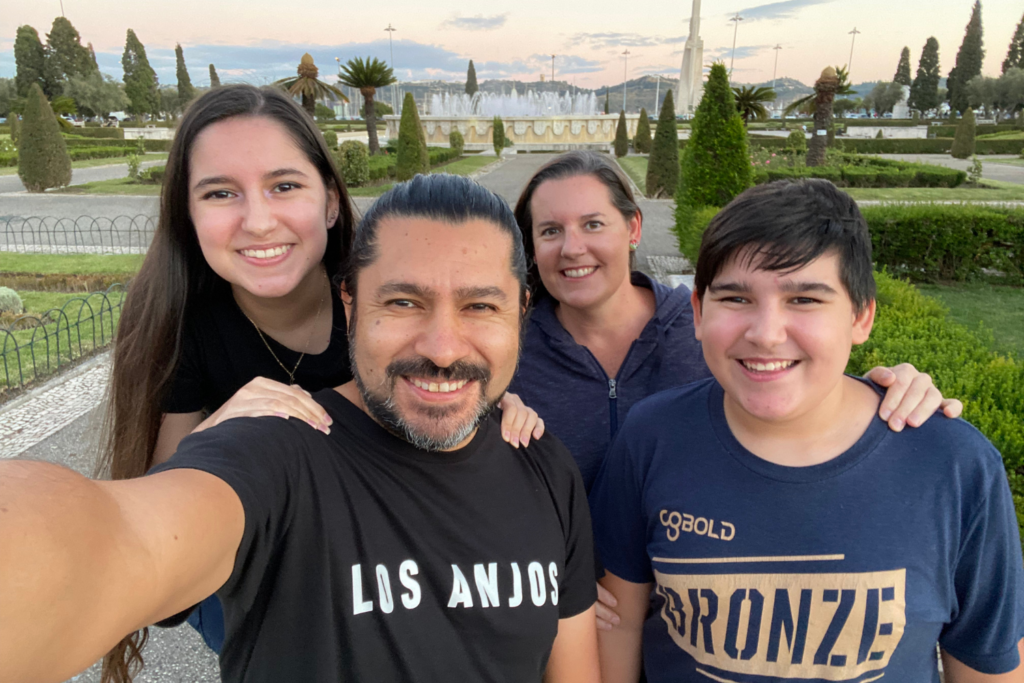
Become an Insider
Join our mailing list for exclusive content, giveaways and more!
We are the Muñoz family! We hope you love what you see. Thanks so much for joining our adventures!
Shop My Favorites
- Travel Essentials
Destinations
- Eco-Friendly Life
Latest on Instagram
Copyright © 2024 Vegan Family Adventures · Theme by 17th Avenue
Privacy Overview

Discover the wonderful city of Bragança, located in Northern Portugal
Recently I went on a road trip to visit some other beautiful places in Northern Portugal : the wonderful village of Gimonde and the beautiful city of Bragança. This city is the main city in this Portuguese region and is only a few kilometres away from Montesinho Natural Park and Spain.
- Discover the village of Gimonde
Getting to know Bragança
What will also interest you:.
My itinerary in the northern Portuguese region, Bragança, began in the beautiful small village of Gimonde. This village, with little more than 300 inhabitants, is located in the most amazing place, where two rivers come together: Onor river and Sabor river .
Disclosure: This post may contain affiliate links, meaning i get a commission if you decide to make a purchase through my links, at no cost to you. Please read my disclosure for more info.
There were several reasons that took me and take tourists to this picturesque village throughout the year: the warmth of its inhabitants, breathtaking landscape, monuments and also the amazing gastronomy of this region, of which I must point out the wonderful smoked foods and the delicious jams.
Head to Gimonde, just 7 km away from Bragança, and take the opportunity to relax and explore this magnificent village, like I did.
I strolled through the narrow streets until I got to the church. Here, I found a breathtaking view of the surroundings; on my way down, I found a milestone noting the fact that this village is a waypoint in the Way of St. James ( Camino de Santiago ) .
- Location: Rua da Costa, 5300-553, Gimonde, Bragança
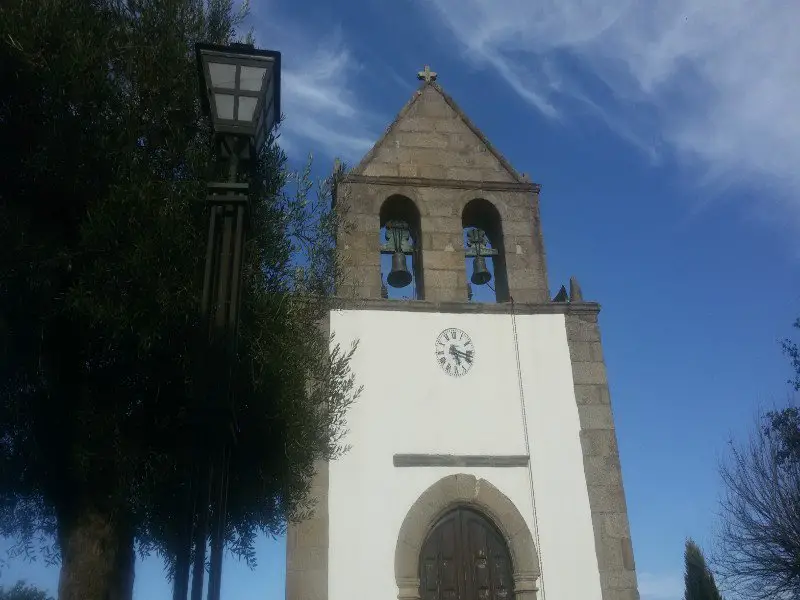
I headed down to the river where I found a beautiful Roman bridge fully made of schist and far away I saw another bridge, a modern granitic bridge.
Between the two bridges I could admire a steppingstone, basically a series of raised stones used to step when crossing this river. This steppingstone gave and still gives the possibility to the inhabitants to cross the river from one shore to the other – I had the chance to see an old couple crossing without any problems, but still, I preferred to cross the river through the Roman bridge.

It was in Gimonde that I spent the night and had lunch and dinner in my first day of this road trip. I stayed at one of the rooms of Casa da Mestra that belongs to the group A. Montesinho Turismo – a rustic house fully refurbished and with all the amenities you’ll need to spend a great night, both on warm and cold days.
Every room has free Wi-Fi, private WC, air-conditioning and access to a communal kitchen and a shared living room with fireplace for the cold days – definitely I had a good night’s sleep!
I had my meals just next to Casa da Mestra, in the famous Restaurante Típico D. Roberto . Here, I had the chance to try the wonderful smoked products like blood sausage and the smoked ham; the desserts were also divine – I ordered chestnut pudding and cheese pudding.
If you want to get to know the beautiful village of Gimonde, then watch this short video:
After discovering Gimonde, I headed to the beautiful city of Bragança – there were many places to visit and I only had a few hours.
As you can imagine, I decided to begin my visit to the city by going to the amazing castle. Bragança’s castle is located in the historic centre of the city and near the shores of Fervença river and is considered to be one of the most beautiful and better preserved Portuguese castles.
If you want, you can leave your car in the centre and then make your way to the castle on foot; if you can’t or don’t want to, you can instead drive your car to the interior of the citadel – here you’ll find some parking spaces. Much like the castle of Óbidos, Braganças’s castle also has a citadel .
My first thoughts were visiting the donjon, however it was lunch time and so I decided to get to know the citadel and make a stroll on the ramparts . One of the things you must do is definitely stroll through the full extent of the ramparts because you’ll have the opportunity to admire the landscape, Fervença river, the park and part of the city.
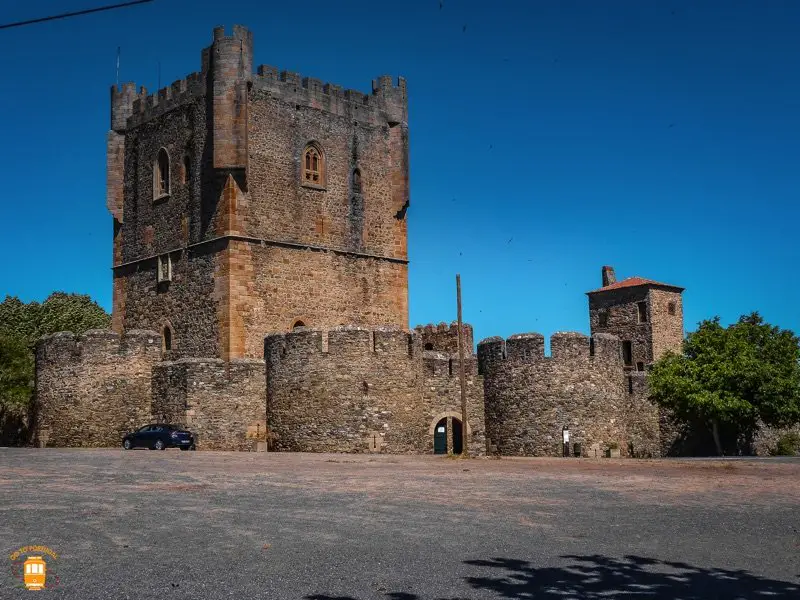
Apart from the 2 metre thickness, an interesting detail about the ramparts is that they were made with schist, one of the most abundant rocks in this region. This characteristic is also present in the donjon and other places.
After the long stroll, I decided to climb down the ramparts and walk through the citadel looking for a place to have lunch – I found the restaurant Tasca do Zé Tuga . I recommend that you have lunch here because it is located in the citadel and because it uses quality products typical of Bragança and of this region in Northern Portugal.
After lunch, I finally had the chance to visit the donjon ‘s interior. This majestic 17-metre wide and 34-metre high tower is the place where you can find the Military Museum of Bragança , one of the most complete military museums in the country.
When you visit this museum, you’ll find several military pieces from different occasions, of which I can point out some original pieces from the African campaigns and some from the First World War .
- Site: www.cm-braganca.pt
After having visited the beautiful donjon, I went to the church of Santa Maria – a Roman style church, considered to be the oldest church in Bragança. After that, I left the castle and went to the park nearby to relax – this is the perfect place to rest after the long walks on the ramparts or if you want to have a picnic.
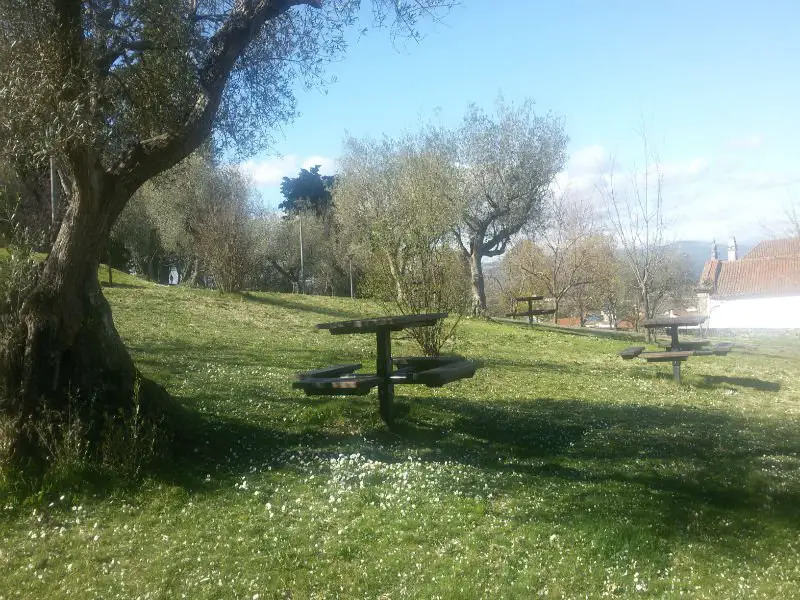
My visit to Bragança was almost over, knowing that there was much more to see, however I still had time to drive to the amazing viewpoints in São Bartolomeu shrine.
You have two options if you want to go to this place: you can drive there (it’ll take you around 5 minutes), or, if you’re the adventurous type, you can walk there in a demanding 2.7 km distance.
When you get to São Bartolomeu shrine , you’ll soon get mesmerised by the breathtaking views over the city. I also realised that the ramparts had the shape of a heart. Here you can also rest or have a picnic because there is a park in the surrounding area.
To conclude, go to the other viewpoint, just 600 metres away from the shrine. Apart from the amazing views over the city and the outskirts, this place has a statue of St. Benedict, the patron saint of Bragança .
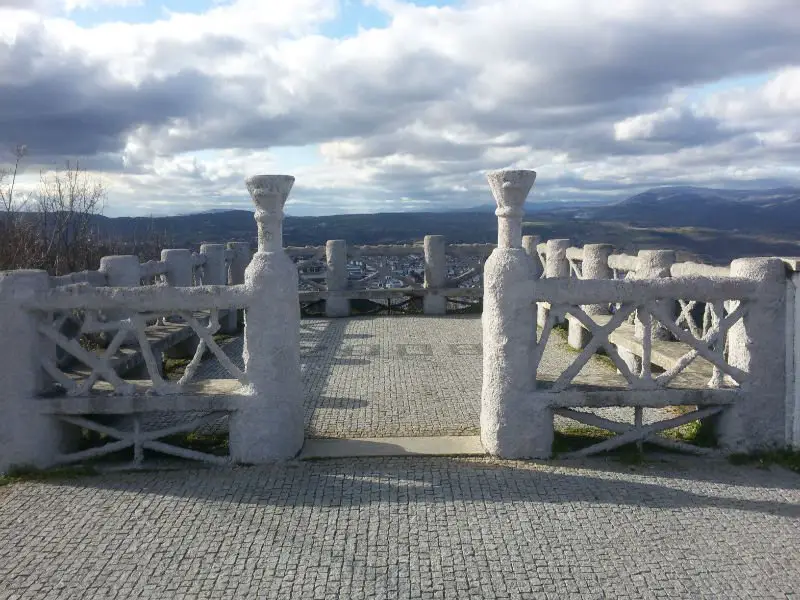
- Location: Estrada de São Bartolomeu, 5300, Bragança
To sum up, I can say that this itinerary through Northern Portugal was definitely worth it – I had the chance to discover the beautiful village of Gimonde, located in Montesinho Natural Park, and the amazing city of Bragança, with its castle, its citadel, its narrow streets, the viewpoints and much more!
However, I can’t finish this article without pointing out some other places that you should visit if you have the chance.
Inside the castle and after visiting the donjon and Santa Maria church, you should also visit the Iberian Museum of the Mask and Costume . This museum shows to its visitors several traditions from Bragança but also from Northern Portugal.
Outside the castle, you can drive to Abade do Baçal Museum . This museum is another place you should visit since it has a huge collection of religious art, archaeology and jewellery.
Finally, and if you have the chance, visit Graça Morais Contemporary Art Centre , designed by the renowned architect Souto Moura. Here you’ll find several exhibitions from national and international artists, including some artwork from the painter of whom the centre was named after.
My journey to Bragança has ended but the promise to return has stayed!
Are you going to visit Bragança? Then don’t hesitate to book your hotel room, your car or the best activities by clicking the links below . This way you are helping me in the development of my blog and I’ll be able to offer you free tips and travel guides so that you can better prepare your visit to Portugal . Thank you !
- Top 20 Things to do in Viana do Castelo
- Things to do in Guimarães, the birthplace of Portugal
- Top of the places to visit in Ponte de Lima
- Road trip in Douro Valley and Porto in 7 days
- Top of the places to visit in Peneda-Gerês National Park
About The Author

We Travel Portugal

Braga – The Ultimate Guide to Braga in Northern Portugal [2024]
Braga is a historical city located in the Northern Region of Portugal . Braga has become known for its beautiful Baroque architecture, and its supremely impressive Bom Jesus do Monte on a dramatic hilltop overlooking the city. Braga is Portugal’s third largest city with a population of 190,000, however when exploring the small streets, and historical attractions it rarely feels this big. However, you’ll find a vibrant array of bars and restaurants, and all the facilities a larger city provides! It’s also home to one of the largest universities in Portugal, the University of Minho with a student population of nearly 20,000. Want to find out what to see and do in Braga?
Brief history of Braga
Braga has 2,000 years of recorded history and walking through its medieval streets it’s easy to get lost in time. Evidence of pre-Roman iron age settlements have been found beneath the city although there is no recorded history or written evidence of them. A Roman city – Bracara Augusta was founded in the area in 15BC. Bracara Augusta would become the capital of Galécia, a Roman province that covered modern day Northern Portugal, Galicia, Asturias and Léon. Bracara Augusta then moved through several distinct periods, being part of the Suevian Kingdom, and then the Moorish empire, which culminated in the Reconquista in the 11 th century.
The City of Braga was born. Its main cathedral – Sé de Braga, which also happens to be the oldest cathedral in Portugal dates to 1089 and was built on the ruins of a Roman Temple. The new city would gradually be developed around the fortified cathedral, only taking a small part of the once much larger city.

What to See and Do in Braga
Braga is a fascinating city to explore, blending medieval streets, with historic plazas, and ancient architecture. There’s a modern city here too, brew-pubs and modern bars, restaurants, and extensive shopping to explore as well! We typically recommend visitors start in the historic quarter at one of the main plazas. The first of these Rua Dom Paio Mendes. It’s a pedestrianised street that leads right up to the cathedral, a great place to grab a coffee to fuel up before exploring further.

Braga Cathedral – Sé de Braga
As you walk up the street, the grand towers of Braga Cathedral loom over you. Braga cathedral is the oldest cathedral in Portugal and features a mix and match of architectural styles leading through the Romanesque, Gothic, Manueline and Baroque periods. Access to the cathedral is not through its main entrance and Gothic portals, but actually on a side street of the Cathedral on Rua do Cabido.
There’s several different routes and tickets to access the Cathedral, a ticket to the cathedral only (€2.00), the chapels and high choir (€2.00), and a ticket to the Cathedral Museum (€3.00), and a ticket that covers everything for €5.00. The simplest is to buy the full ticket for €5.00 which allows access to everywhere. The cathedral visit is roughly split into three main areas, the cathedral itself, the chapels, and its museums.

Arco da Porta Nova
After exiting the cathedral, heading west along Rua Dom Diogo de Sousa, will lead you to Arco da Porta Nova a Baroque portal and historic entrance to the city. It dates to 1722 and was designed by a local architect André Soares, who’s left his mark on other northern cities like Viana do Castelo . By the time the grand gate was completed, Braga had already expanded well beyond the entrance and such no door was ever placed within the grand arch.

“És de Braga?” – Are You from Braga?
According to popular folklore, this grand gate and its famously gateless entry is the origins of the phrase és de Braga? Which translates to are you from Braga? Which is often used as a retort to people leaving doors open, much like the English – were you born in a barn?
Praça do Município
The archway is just a short walk from the grand Praça do Município, it’s a lively square lined with trees and a historic fountain at the centre. On one side of the square is the Paços do Concelho de Braga, a Baroque palace that dates to 1754 it is now the city hall of Braga. On the other side of the square is the public library which is also housed in a former palace which dates to 1746. Both Baroque buildings were designed by André Soares.

Santa Barbara Gardens – Jardim de Santa Bárbara
One of the prettiest corners of Braga is the Santa Barbara gardens. You’ll find immaculate rows of colourful flower beds, a 17 th century fountain, all within the backdrop of a Medieval palace, and some ruins. The castle like building is the medieval and older section of Paço Arquiepiscopal Bracarense, which Baroque frontage faces the Praça do Município. Surrounding the garden, you’ll find several cafés and ice cream shops which give the whole area a lively communal feel right in the city centre.

Café A Brasileira Braga
The pedestrianised Braga centro histórico offers explorers ample shopping and restaurants in almost any direction you walk, and once you’ve taken in the sights and sounds you should head to one of the most historic and famous cafés in Braga, and perhaps Portugal. Café A Brasileira dates to the early 20 th century when a returning emigrant called Andriano Telles founded several outlets across Portugal to sell coffee from his coffee plantations in Brazil.

Supposedly, for the first 15 years or so of business, Telles would give a fresh café with every purchase of a bag of beans. Soon, his business would become more popularly known for selling cafés, then selling beans and the historic brand A Brasileira was established. The first Café A Brasileira’s opened in Porto 1903, but establishments in Aveiro, Coimbra, Braga and Lisbon soon followed .
Praça da República
From Café a Brasileira you’ll be able to see a large opening, this is Praça da República and it leads directly to Jardim da Avenida Central. It’s a treelined square and park and is the centre of the city. It’s one of the busiest areas but you don’t have to walk far to get away from the hustle and bustle of the city.

Braga Tower
Looking back towards the historic quarter of the city you’ll see Igreja da Lapa and the iconic Braga Tower. This is the keep and only remains of the former castle that protected Braga. The 30m tall Gothic tower is a 13th Century reminder of just how old parts of Braga really are. Inside is a small museum where you can see the original layout of the city and its original walls, you’ll also find a photography exhibition featuring local artists, and at the very top some great views of Braga.
Avenida da Liberdade
Avenida da Liberdade is a wide-open pedestrianised street that leads south from Praça da Republica. It’s one of the main commercial streets and you’ll find a mixture of both local Portuguese brands, and many of your international favourites. It’s line with geometric flower beds and it’s a great place to simply grab a coffee and people watch on many of the available benches. Avenida da Liberdade is also where you’ll find Braga’s theatre – Teatro Circo. It’s a 900-seat theatre that dates to 1906 and is perhaps the focal point of Braga’s lively cultural calendar. You can find its events calendar and purchase tickets directly at its box office, or online on its website .

Largo Carlos Amarante
A right turn at the Theatre Circo will lead you towards Largo Carlos Amarante, another of Braga’s emblematic squares. It’s here you’ll find your typical touristy sign made of Braga’s letters, and the very impressive Igreja do Hospital ou Igreja de São Marcos. The public square, gardens and flowers, and monumental Baroque hospital and church towers really do shout Braga, even if the sign wasn’t there! The building itself no longer functions as a hospital, in 2018 the hotel chain Vila Galé redeveloped the right wing and courtyard into a luxury hotel .

Palácio do Raio
Getting yet another mention in this guide to Braga, is André Soares’ stunning Palácio do Raio. It’s a mid-18 th century palace that was designed for a wealthy merchant in the city – João Duarte de Faria. Interestingly, and a characteristic that’s missing from many other Baroque buildings in Braga, are the bright blue Azulejo tiles covering the palace. These are not from the original André Soares design and were actually added to the palace at the end of the 19 th century. Inside the palace is a small but worthwhile interpretive centre with several collections covering the architectural heritage of Braga, some religious artifacts, and even some medical equipment from its use as a hospital building.

Roman Thermae of Maximinus – Roman Ruins in Braga
Braga’s Roman connection is often mentioned, but often hidden from plain site. However, at the Termas Romanas de Maximinos you’ll find plenty of evidence. The ruins of the public baths were discovered in 1977 and date to the 1 st century, an early period of the city’s Roman development. It’s a small museum that’s covered from the elements, with walkways over and around the bathing complex. A great place to see some of the Roman history in Braga. It costs €2 to enter.

Is Braga Really the Portuguese Rome?
Braga is rather affectionately known as Roma Portuguesa the Portuguese Rome. It’s a title that’s often used due to its Roman history, the large number of churches across the city, and because it’s known as the religious centre of Portugal. However, the title actually dates to the 16 th century when Archbishop D. Diogo de Sousa was inspired by a recent visit to Rome to create a city with open public plazas with churches just like in Rome. His city plan left his mark on the city to this day.
You’ll also hear it referred to as Cidade Romana – the Roman City, this title more accurately reflects its Roman History and connection to Bracara Augusta which was the most important Roman city in the modern area of Northern Portugal and Galicia.

Santuário do Bom Jesus do Monte
The highlight of any trip to Braga, and the picture-perfect moment everyone tries to capture is from the stunning Bom Jesus do Monte. It’s not actually in Braga, but 6km away from the centre on a hill that overlooks the city. It’s an incredible 18 th century basilica that sits atop a grand set of stairs.
Via Sacra do Bom Jesus – Sacred Way of the Cross of Bom Jesus
There are 573 individual stairs, across three different sections that make up the pathway of Via Sacra do Bom Jesus. Each section draws inspiration from religion, mythology and natural forms, and lead the way to the grand church at the top of the staircase. In total they cover a 116m rise in altitude. At the very top of the stairs is Santuário do Bom Jesus do Monte the 18 th century church, you’ll also find landscaped gardens, a forecourt with fountains and statues and several chapels.

Basílica do Bom Jesus
Despite its religious nature, the area has the overall feel of a landscaped city park, you’ll see locals exercising on the grand steps, people walking their dogs, and people catching up over coffee on one of the many benches spread around. All converging with coach trips and day trippers that get dropped off in the car park of the sanctuary itself. Early in the mornings, or late in the afternoons are the best time to experience Santuário do Bom Jesus do Monte. You’ll get the best light, and it’s the quietest time for taking photos of the stairs. The sunset and views over Braga are just incredible.

Local Food and Drinks in Braga
As a major city Braga has its fair share of eating and drinking establishments, and as the heart of the Minho region some excellent local dishes and flavours to explore. One of the most emblematic dishes you’ll find is a variant of bacalhau named after Braga – Bacalhau à Braga. It’s a dish that combines bacalhau with fried onions, peppers, garlic and fried sliced potatoes! On the sweeter side of things Braga is famous for Pudim Abade de Priscos, a crème caramel dessert.
For drinking, make sure you try Vinho Verde a light, fresh, and slightly sparkling wine from the Minho region. It’s a DOC (Denominação de Origem Controlada) which means it can only be produced in the Minho wine region. For beer lovers, Braga even has its own craft brewery scene pioneered by Cerveja Letra. You’ll find their tap room Letraria on Rua Dom Gonçalo Pereira just a short walk from the cathedral.

Should you Stay in Braga?
Although yes, Braga can be completed within a day trip. To really experience these cities like these we often recommend staying at least a night. This will allow you to wonder around the town once the typical day trippers have left, to sample some incredible local food and drink. Trust us when we say that the sunset from Bom Jesus do Monte is absolutely incredible, it’s probably one of our favourite sunsets in Portugal! It’s an experience few day trippers will have because it means you’ll need to stay late enough to capture it!
Where to Stay in Braga?
Braga boasts a wider array of accommodation covering all budgets. You’ll also find a few of the major chains like Meliá just a couple of km from the city centre. We do recommend staying in the city centre itself though – for the historic experience and ability to simply walk to the sites. For a palatial like stay in a Baroque building, than the Vila Galé is the supreme luxury option . Porta Nova Collection House is a small hotel/guesthouse offering simple rooms in a restored building right in the city centre. For a full list of accommodation available in Braga you can check here .

How to Get to Braga
Braga is located in the north of Portugal, around 55km north of Porto. Nearly all public transport connections will take you through Porto. If you drive, it will also take you around the outskirts of Porto.
Driving to Braga – If you have a rental car or your own vehicle, then driving directly to Braga is a simple option. It will take around 40 minutes to drive to Braga from Porto, or around 3 and a half hours to drive from Lisbon. There’s some fantastic places to stop on the way as well !
Don’t have a rental car booked yet? Then our guide covers everything you should know about renting one in Portugal !
Public Transport in Braga – Trains and Buses
Braga is served by a regular Urban service from Porto, which departs from São Bento in the city centre, Braga is the final stop on the railway line. The journey will take around an hour, with the longest route taking 71 minutes). A single ticket from Porto to Braga costs €3.25 for adult, and a return cost €6.50. For the full timetables and for tickets, book directly on the official website ( Combois de Portugal ).
Braga is also served by a large bus station, with multiple connections to the local and wider area. Rede Expressos, also known as Renex, operate regional services, as well as the low-cost long-distance operator Flixbus. Services from Lisbon to Braga are available but they typically take around 4 and a half hours, but they are direct!

Braga or Guimarães?
Braga or Guimarães is a popular question, they’re both beautiful northern cities boasting heritage, culture, and great scenery. Adding to their twin status is the fact they both have hillside retreats that overlook the town – Bom Jesus do Monte in Braga, and Santuário da Penha in Guimarães . They have their differences, and they have their similarities. Can you visit both?
Should you Visit Braga?
Braga is one of our favourite cities in Portugal and combines stunning architecture, with a vibrant and local feel. It’s one of our favourite northern cities and we always recommend it to visitors exploring North Portugal. Bom Jesus do Monte is a stunning place and is worthy of a trip in its own right, but combine it with the historic and lively town below and you’ve got a fantastic base to explore the Northern region of Portugal .
Affiliate disclosure . Some of the links included in this post are affiliate links. What this means is we get a tiny percentage of the booking fee if you do click the links and book something. This costs no extra for you and helps support the site.
Leave a Comment Cancel reply

IMAGES
VIDEO
COMMENTS
Let's explore the best things to do in Bragança: 1. Castle of Bragança. Climbing above Bragança's citadel and visible for miles around is the 15th-century keep. This is 17 metres wide and 33 metres tall, ordered by King John I and constructed over an earlier stronghold from the 12th century.
See way to experience (1) 4. Museu Militar de Braganca. 294. Speciality Museums. By hans-jaguar. To visit the "Militairy Museum" you have to enter the Castle of Bragança, who is one of the most representative of... 5. Centro de Arte Contemporanea Graca Morais.
Iberian Museum of the Mask and the Costume, Bragança Car Travel in Portugal. Bragança is 120 km northeast of Vila Real on the IP4/A4 motorway and 100 km east of Chaves on the slow, winding N103 road. Bragança's sister city of Zamora in Spain is 100 km southeast and can be reached by bus 3 times a week on Tuesday, Friday and Sunday. Buses leave Zamora for Bragança at 5 am (Spanish time ...
Situated in the far northeast of Portugal, Bragança is a city whose old castle still maintains a mediaeval urban core within its walls. ... Tourist Office: Avenida Cidade de Zamora. Telefone: 273 381 273 . Email: [email protected] . Find out more at: visitportoandnorth.travel. By road: IP4. By coach: Rede Expressos: www.rede-expressos.pt ...
Braganca Tourism: Tripadvisor has 13,233 reviews of Braganca Hotels, Attractions, and Restaurants making it your best Braganca resource. ... Northern Portugal. Braganca District. Braganca. Braganca. Braganca Tourism Braganca Hotels Braganca Bed and Breakfast Braganca Vacation Rentals Flights to Braganca Braganca Restaurants Things to Do in ...
Bragança in Portugal is a historical place for a relaxing vacation. If you are looking for a vacation that takes you back to the medieval times in a virtually unknown tourist destination in Portugal, then a visit to Bragança would be ideal. It is a well-preserved town with most of its historical sites still in its original state.
Braganca Guided Tours & Excursions. The name of the region of which Bragança is the capital belies its nature, being that Tras-os-Montes, quite literally 'behind the mountains', is easily the most remote part of mainland Portugal, if not western Europe. Here, ancient stone houses still cluster in small villages that seem unaffected by the ...
Bragança was the seat Portugal's fourth and final dynasty. Situated high on a plateau near Portugal's north-eastern frontier with Spain, the ancient city of Bragança was once the seat of the Dukes of Bragança, the country's fourth and final dynasty, which ruled the country from 1640 to 1910. Capital of the Trás-os-Montes region, one ...
Things to Do in Braganca, Portugal: See Tripadvisor's 13,233 traveller reviews and photos of Braganca tourist attractions. Find what to do today, this weekend, or in April. ... Braganca Tourism Braganca Hotels Bed and Breakfast Braganca Braganca Holiday Rentals Flights to Braganca Braganca Restaurants Braganca Attractions Braganca Travel Forum ...
7. History Museums. Braganca Tourism: Tripadvisor has 13,233 reviews of Braganca Hotels, Attractions, and Restaurants making it your best Braganca resource.
Visit the surrounding area of River Fervença in Bragança. 1. Bragança Science Center and Silk House. 2. Fervença Urban Park and Polis Zone. Visit João da Cruz Avenue Garden. Discover Bordallo II in Bragança. Visit Bragança National Railway Museum. Visit the outskirts of the city of Bragança.
Whether entering through the Sun Gate (east) or the Village Gate (west), the Castle Square is sure to leave you in awe. Bragança Castle, one of Portugal's most beautifully preserved castles with stunning Gothic windows, stands tall. Explore the 15 th -century Keep, housing the distinguished Military Museum of Bragança.
Castles. Church of Santa Maria. 81. Churches & Cathedrals. Domus Municipalis. 118. Architectural Buildings, Historic Sites. Braganca Tourism: Tripadvisor has 12,535 reviews of Braganca Hotels, Attractions, and Restaurants making it your best Braganca resource.
Welcome to Bragança, Portugal - a city full of history, culture, and stunning attractions! As a local, I'm here to share with you my top 15 must-see attractions in this beautiful city. From ancient castles to breathtaking views, you won't want to miss out on these amazing sites!
Tours & Things to Do: Both Get Your Guide and Viator list lots of local tours and activities in Bragança and the surrounding Northern Portugal region. Luggage Storage: Luggage Hero and Bounce are two great sites for finding places to store your luggage in Portugal. Public Transport: Cp.pt is the main website for trains in Portugal.
Bragança, the historical capital of the region of Tras-os-Montes, is at once a city of vast avenues and a medieval town with battlements.These will grant you the panoramic views of the fields, forest, and small farms enjoyed for centuries. The most iconic attraction in the city is the old walled citadel standing atop a hill in the easternmost extreme of Bragança.
Basic facts for traveling to Bragança. Bragança is the capital of the homonymous and cross-border district in the northeast of Portugal bordering to the north and east with Spain, specifically with Galicia (the province of Ourense) and with Castilla y León (the province of Zamora).It belongs to the Portuguese region of Trás-os-Montes and played a crucial role in the defense of the ...
Posted In: Europe, Portugal, Travel Guides · Tagged: 10 fun things to do in bragança, best bragança, best things to do in bragança, braganca, bragança a top guide, bragança guide, braganca portugal, bragança travel guide, braganza portugal, castle, centro, citadel, iberian museum portugal, igreja, is it worth visiting bragança ...
Discover the village of Gimonde. My itinerary in the northern Portuguese region, Bragança, began in the beautiful small village of Gimonde. This village, with little more than 300 inhabitants, is located in the most amazing place, where two rivers come together: Onor river and Sabor river. Disclosure: This post may contain affiliate links ...
The Grupo Desportivo de Bragança (abbreviated as GD Bragança) is a Portuguese sports club based in Bragança which hosts both a football department and an athletics department. [22] The club was founded in 1943 and its men's football team plays its home matches at the Municipal de Bragança stadium with 5,000 seats.
Bragança - Accessible Itinerary. In the north of Portugal, Bragança was an important defence point of the Portuguese frontier throughout history. Within the preserved walls of this city, whose origins are medieval, stands the Castle keep, which gives visitors an amazing view over the surrounding countryside. To help organise your visit to the ...
Slow Travel in Portugal. Go, wander, get lostPortugal is a perfect destination all year round. But to truly experience the soul of Portugal, it is essential to slow down and take the time to explore the country's hidden gems and lesser-known regions.Just let yourself go and (...) Find out more.
February 3, 2024 by Ana Veiga. Braga is a historical city located in the Northern Region of Portugal. Braga has become known for its beautiful Baroque architecture, and its supremely impressive Bom Jesus do Monte on a dramatic hilltop overlooking the city. Braga is Portugal's third largest city with a population of 190,000, however when ...